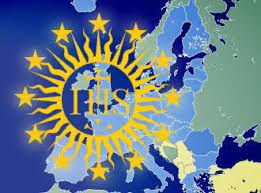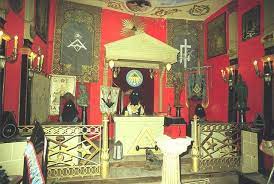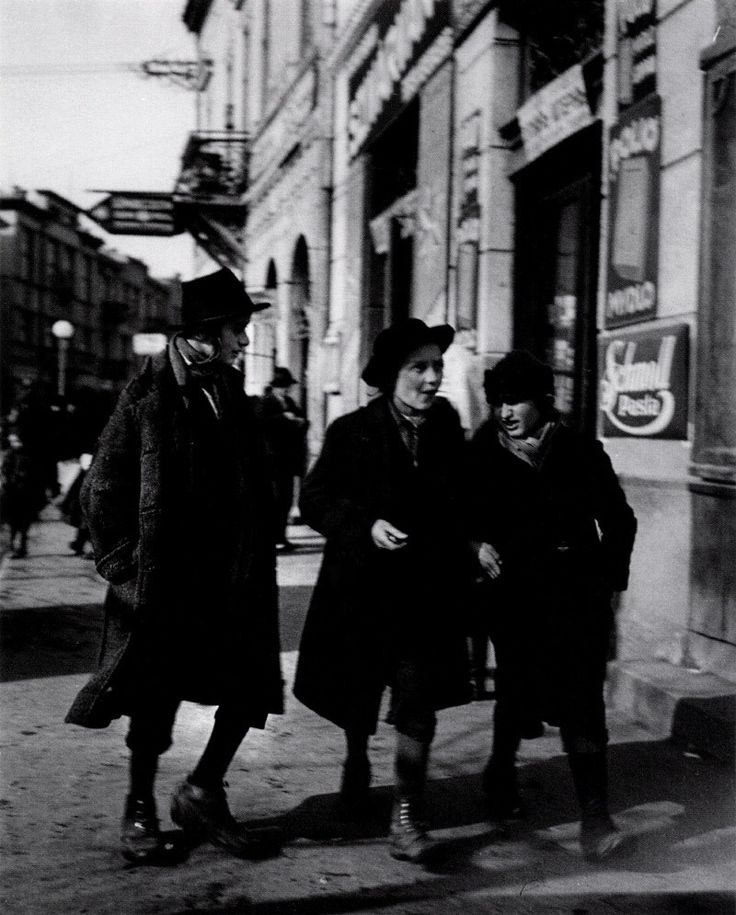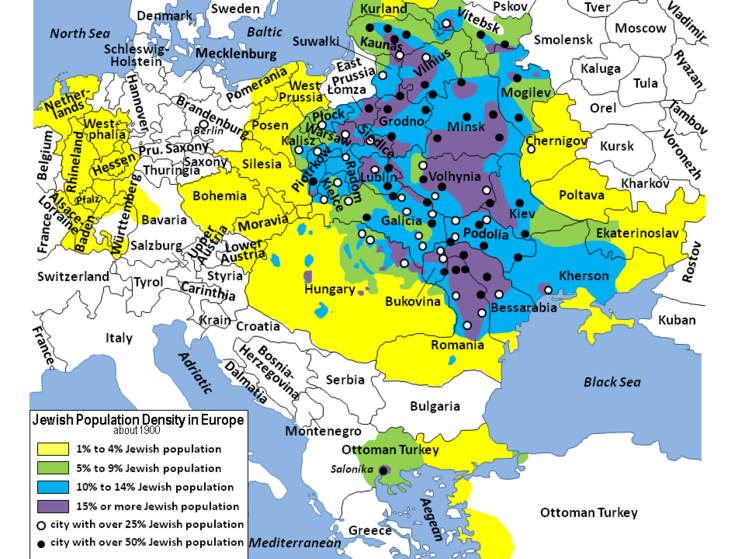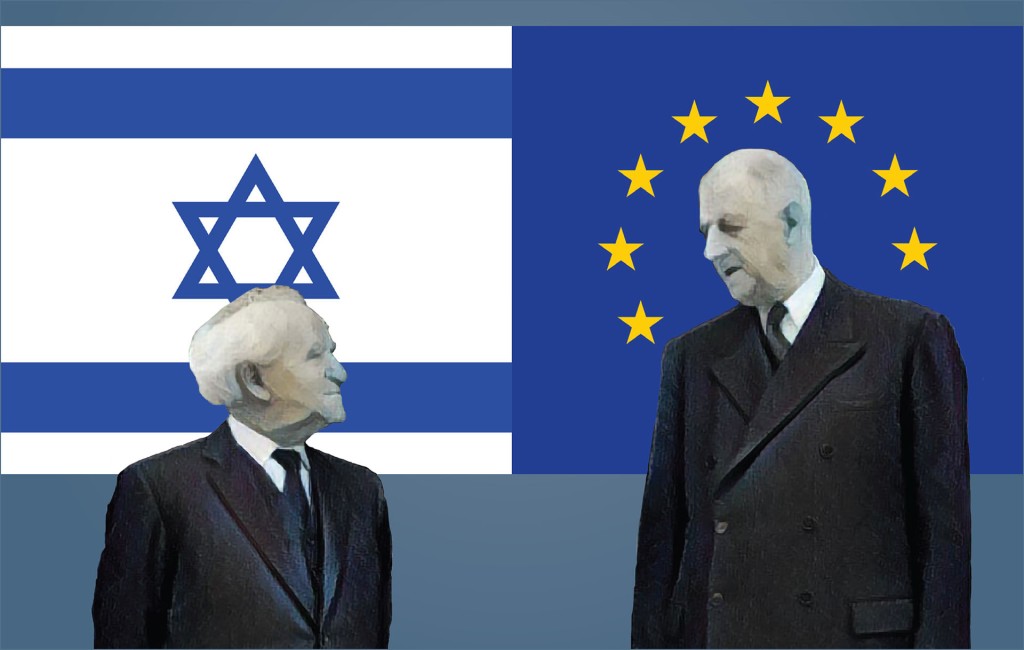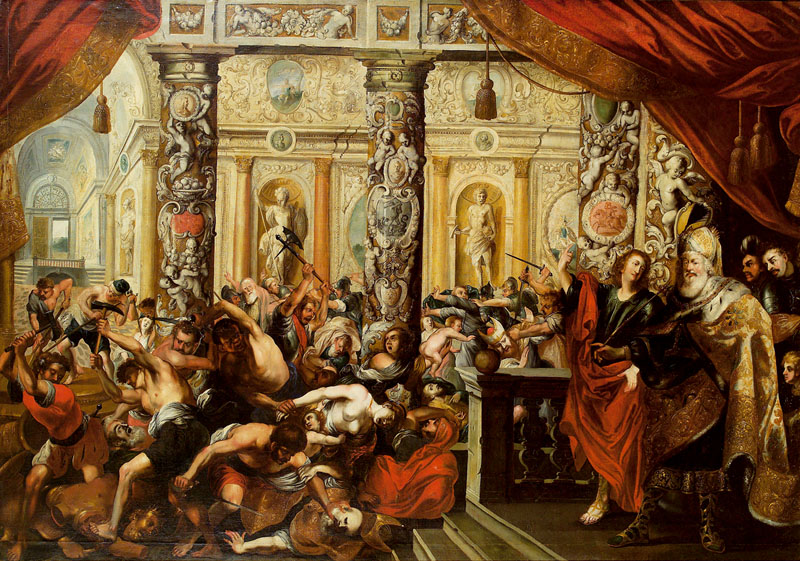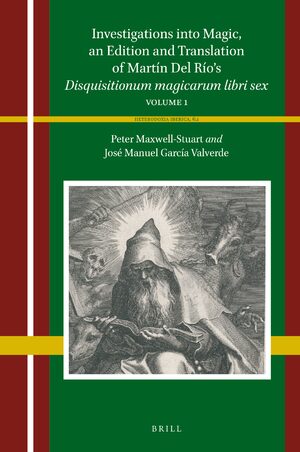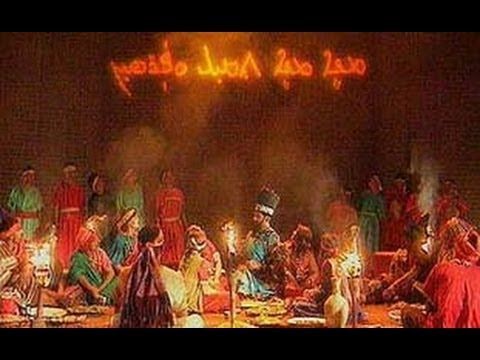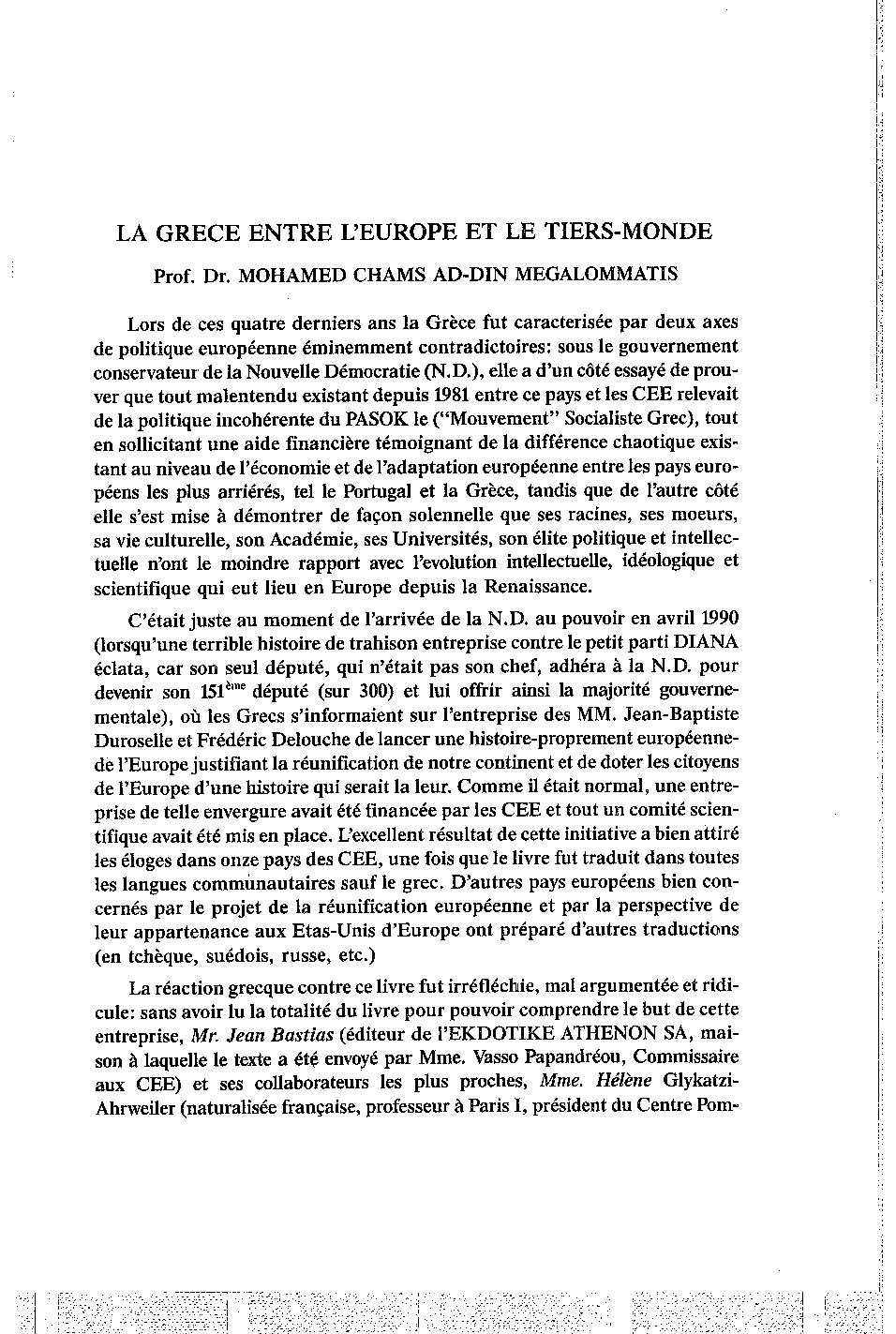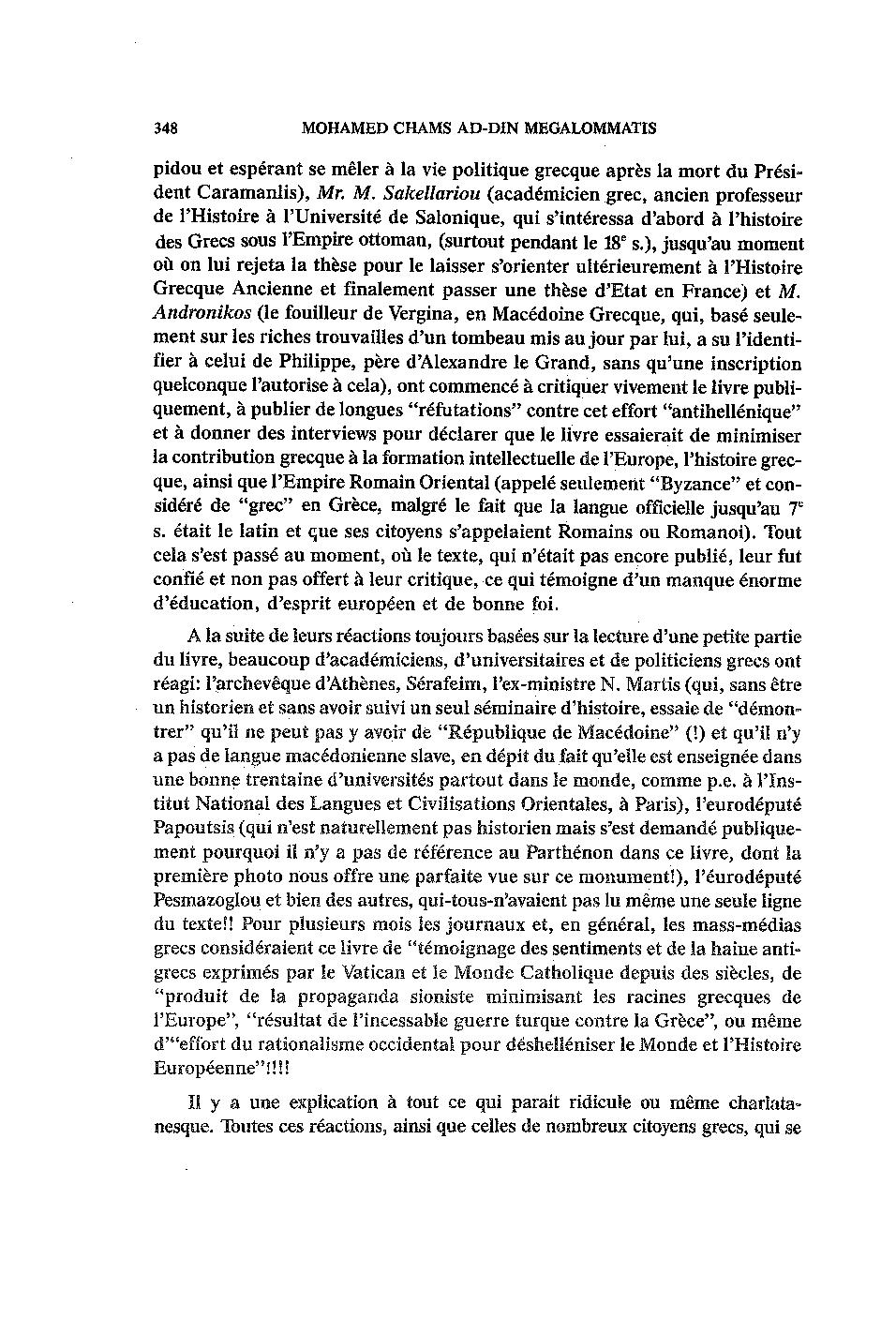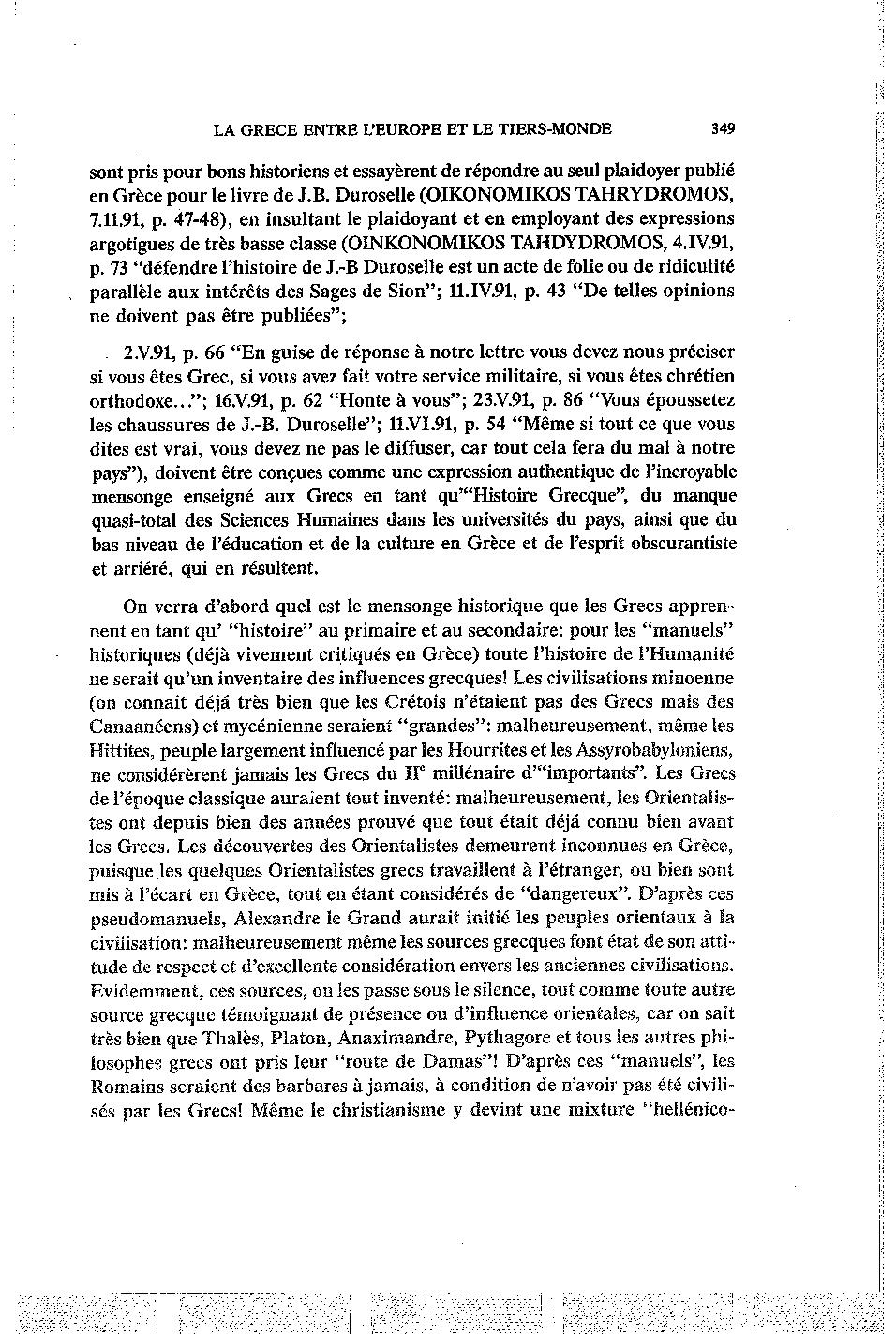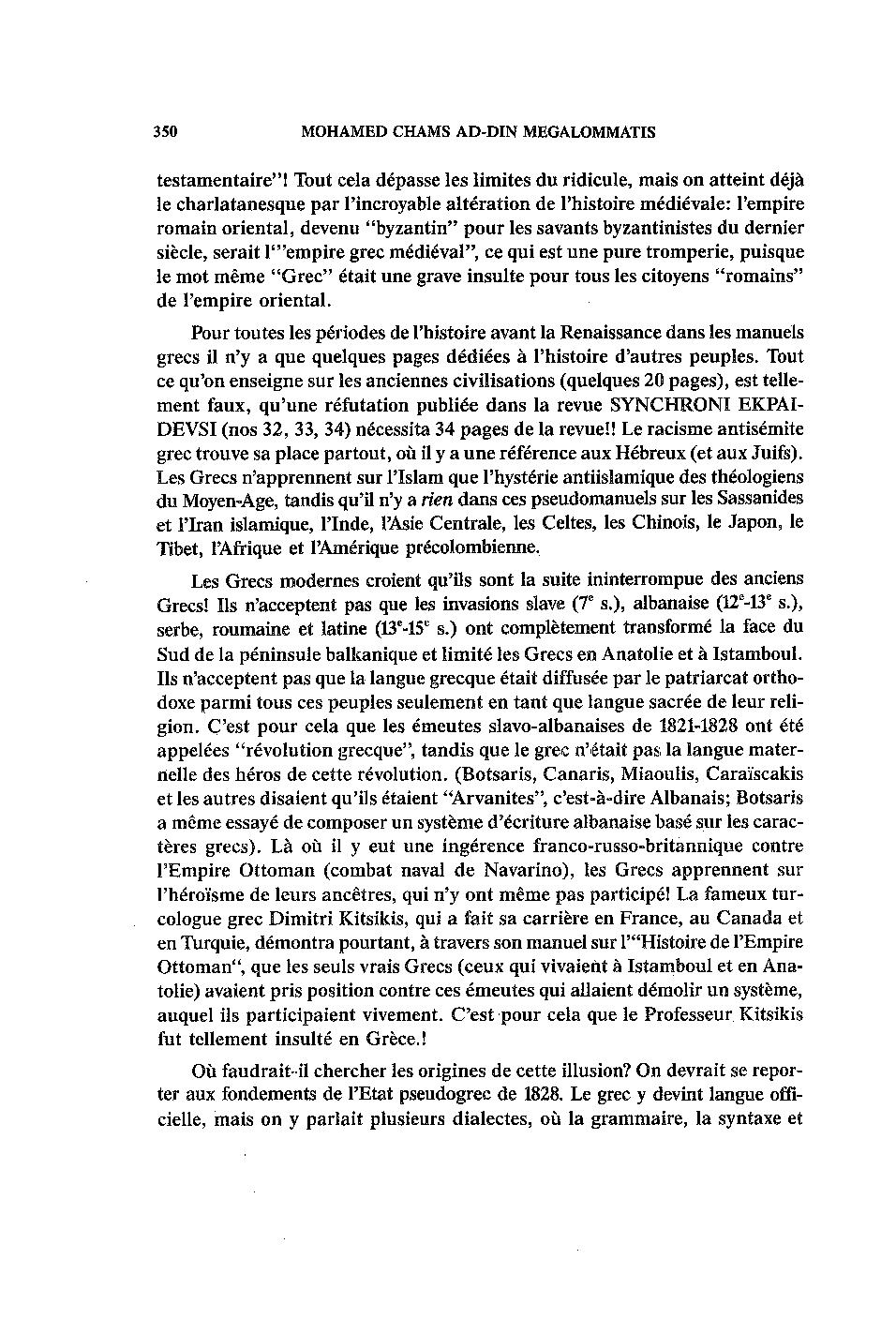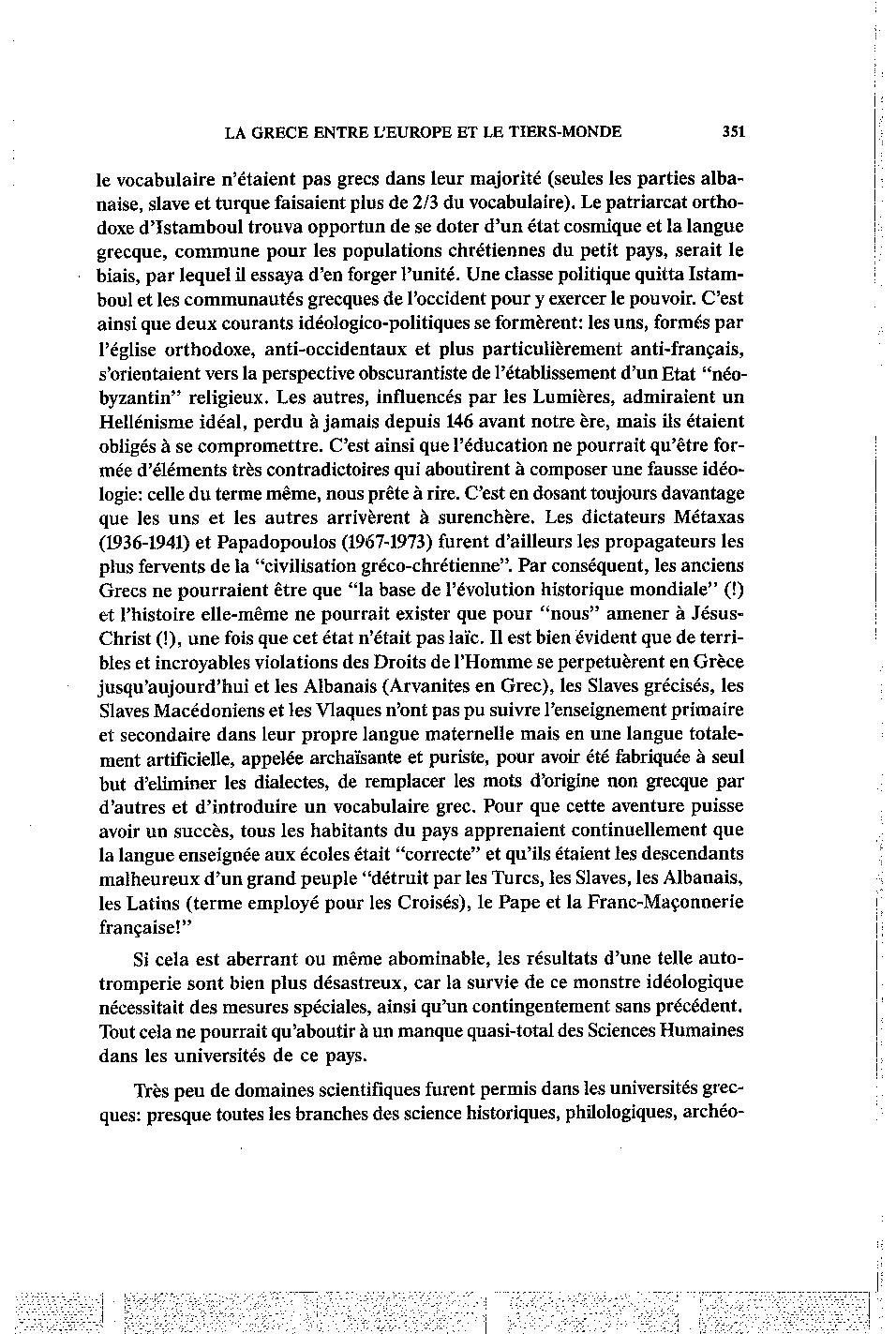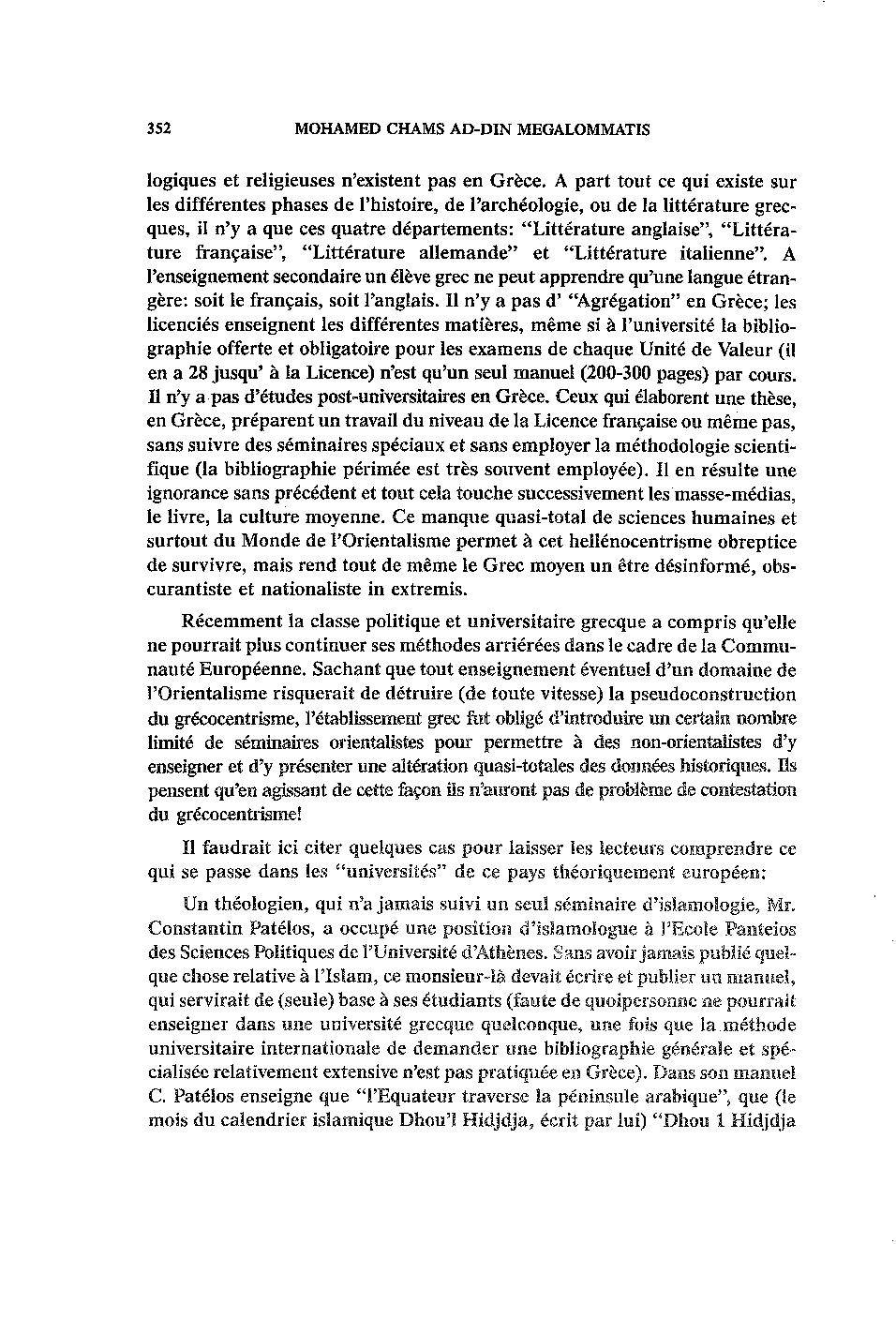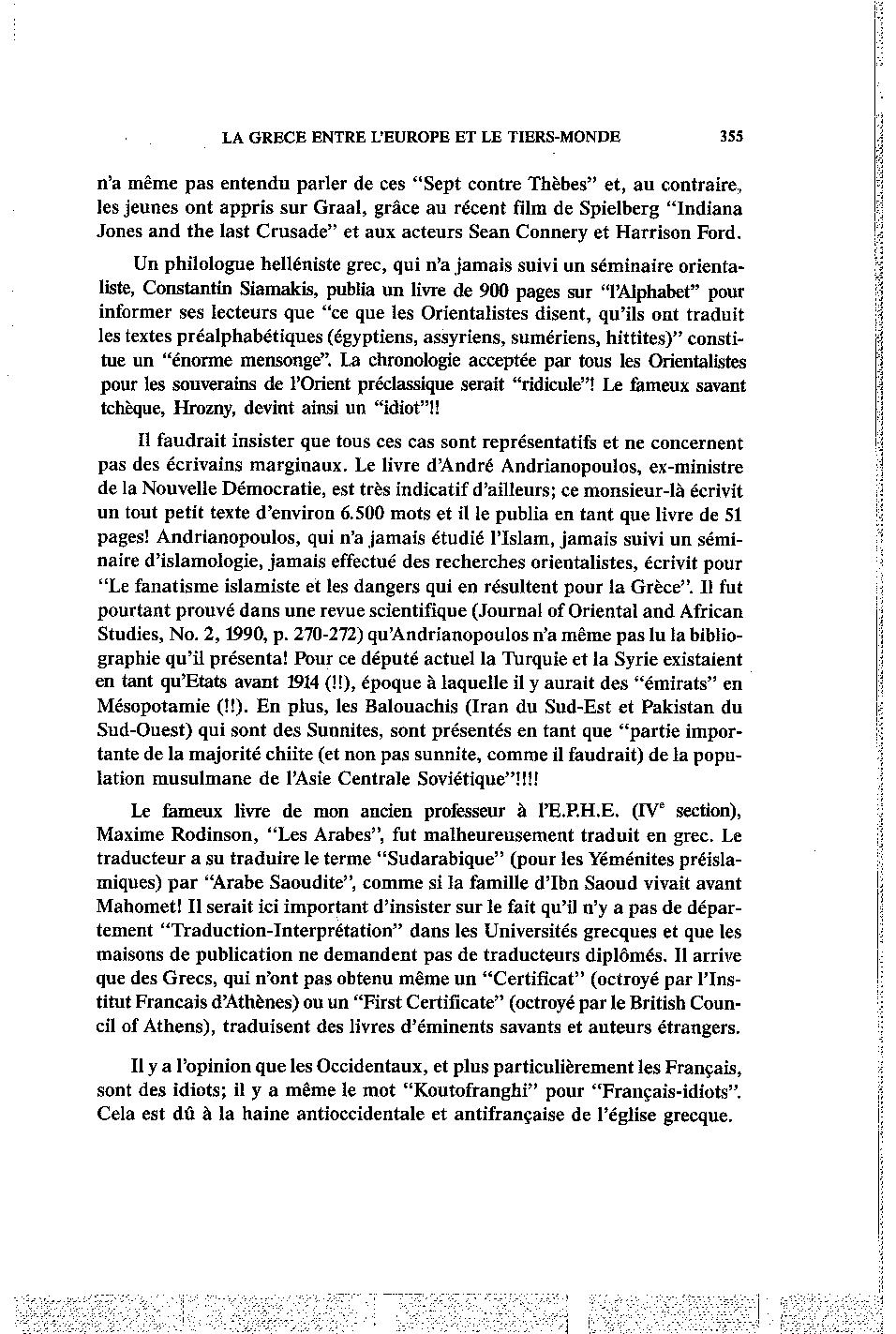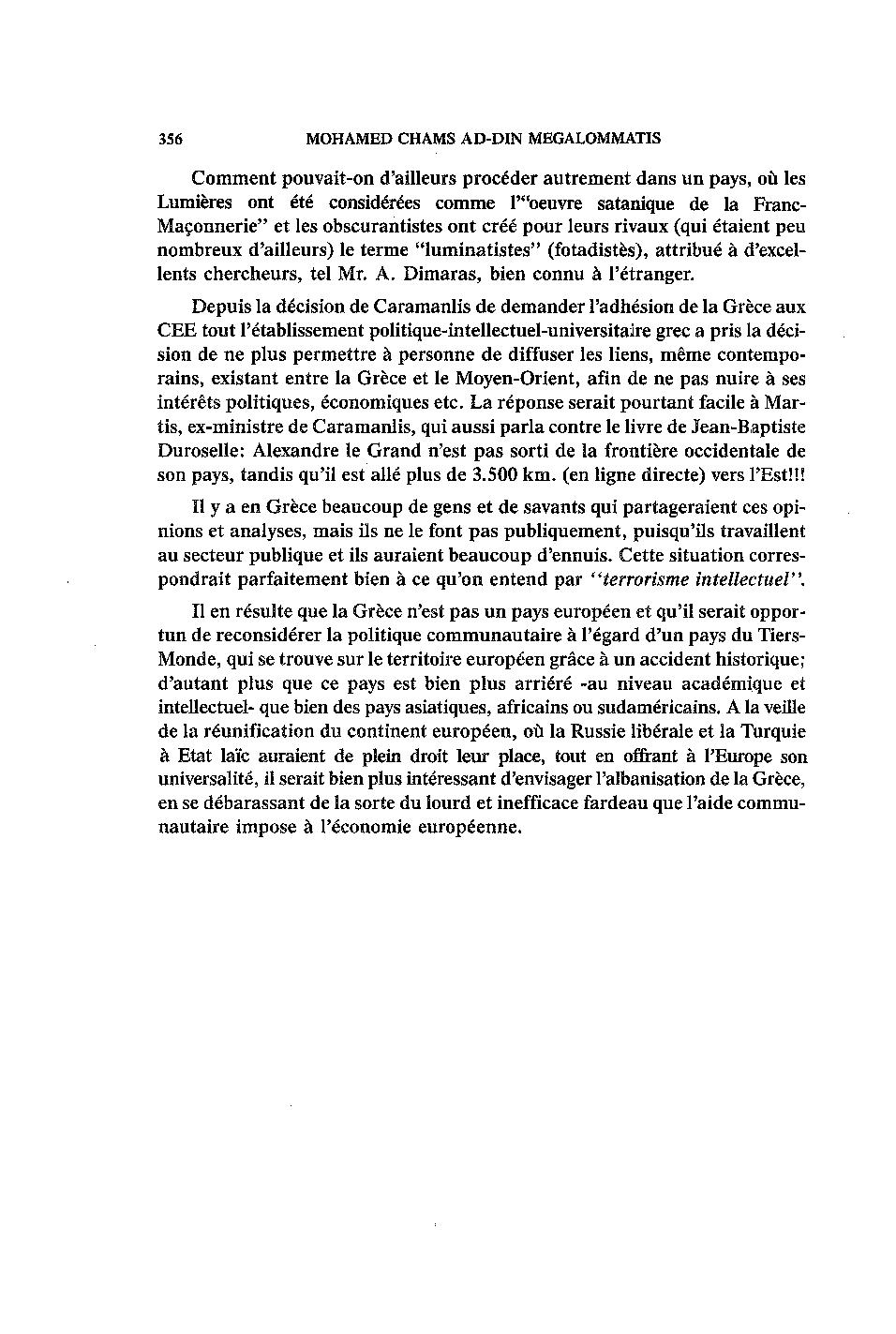The Mithraic Trajectory of an Unknown Transcendentalist
Сталин в Османской Анатолии: его духовные, религиозные и исторические искания
Митраистская траектория неизвестного трансценденталиста
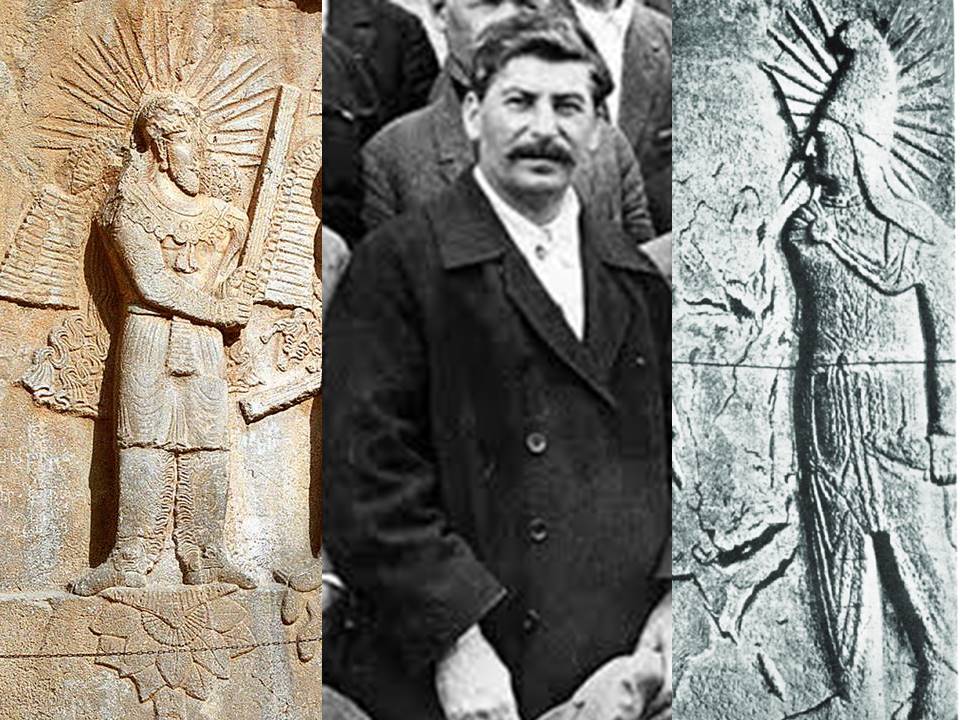
Содержание
I. Ошибочное восприятие Сталина у большинства людей сегодня
II. Ошибочное восприятие Второй мировой войны современными обывателями
III. Настоящая Ялтинская конференция
IV. Большая игра никогда не заканчивалась
V. Добрые намерения и злые цели
VI. Рузвельт и Сталин: как Авраам Линкольн и Александр II
VII. Настоящий, скрытый Сталин: опытный мистик
VIII. Посол Турции говорит о жизни Сталина в Артвине и Стамбуле
IX. Сталин в Османской Анатолии: 1911-1912 гг.
X. Турецкий государственный деятель Риза Нур отметил, что Сталин понимал турецкий
XI. Культурный фон Сталина: искажен и неизвестен большинству людей
XII. Митраистское иранское культурное наследие Грузии и Сталин
XIII. Длинная, тяжелая тень Сасанидов
XIV. Несмываемая печать на исламе: иранское интермеццо
XV. Переплетенное исламское и христианское культурное наследие Грузии, и Шота Руставели
XVI. Русские переводы Руставели и псевдонимы Сталина
XVII. Археологические раскопки и открытия востоковедов до пребывания Сталина в Анатолии
XVIII. Текстовые источники информации о Митре и митраистских мистериях для Сталина
XIX. Духовность, религия, эсхатология, сотериология, вымирание человечества и Сталин
XX. Основные темы духовных исканий Сталина в Анатолии – 1. Тавроктония и Распятие
XXI. Основные темы духовных исканий Сталина в Анатолии – 2. Митраическая троица, христианская троица, духовность и Сталин.
XXII. Основные темы духовных исканий Сталина в Анатолии – 3. Солнечная природа митраизма / Непорочное рождение из скалы.
XXIII. Как сталинские митраистские медитации в Анатолии сформировали его принятие решений
1. Войны понтийского царя Митридата VI с Римом.
2. Митраистские пираты Киликии в борьбе с Римом: осквернение Греции и Сталин.
3. Посещал ли Сталин величайший в мире монумент Митры в Немрут-Даге?
4. Митраистские медитации Сталина и антисвященническая позиция
5. Митраистская версия ассирийско-вавилонского Гильгамеша: Вератрагна и его связь с Гераклом в Немрут-Даге
6. Митраистская анатолийская имперская духовность против скандинавской мифологии: Сталин против Гитлера
XXIV. Рим, Новый Рим, Третий Рим, и Сталин
XXV. Митраизм, христианство, Сталин и антихрист
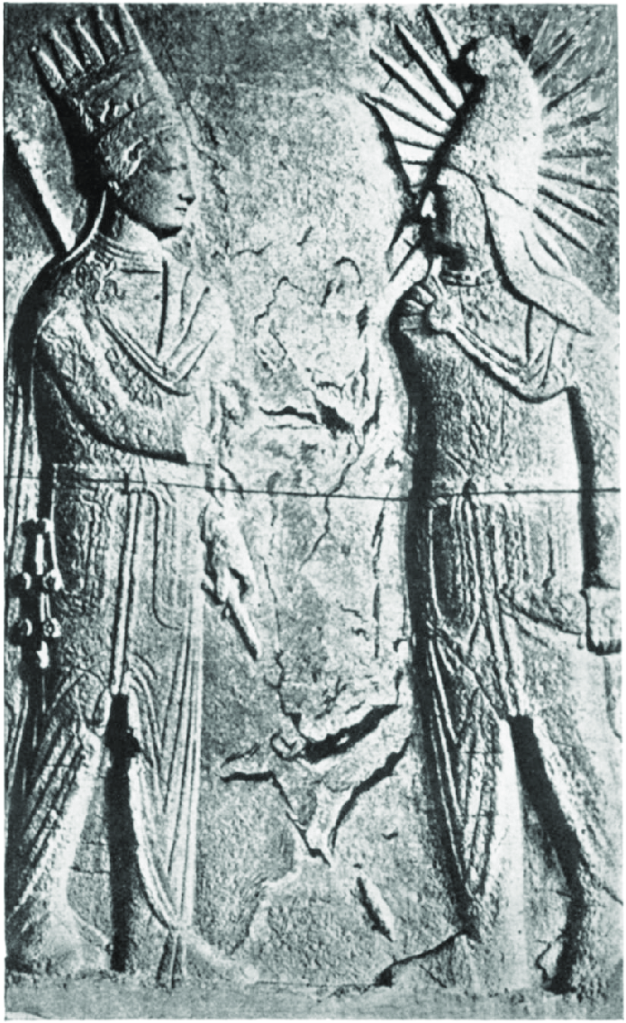
Table of Contents
I. The erroneous perception of Stalin among most people today
II. The erroneous perception of WW II by average people today
III. The true Yalta Conference
IV. The Big Game never ended
V. Good intentions and evil purposes
VI. Roosevelt & Stalin: like Abraham Lincoln & Alexander II
VII. The real, hidden Stalin: an experienced mystic
VIII. A Turkish ambassador speaks about Stalin living in Artvin and Istanbul
IX. Stalin in Ottoman Anatolia: 1911-1912
X. Turkish statesman Rıza Nur noted that Stalin understood Turkish
XI. Stalin’s cultural background: distorted & unknown to most
XII. The Mithraic Iranian cultural heritage of Georgia & Stalin
XIII. The long, heavy shadow of the Sassanids
XIV. An indelible stamp on Islam: the Iranian Intermezzo
XV. The intertwined Islamic & Christian cultural heritage of Georgia, and Shota Rustaveli
XVI. Rustaveli’s Russian translations and Stalin’s pseudonyms
XVII. Archaeological excavations and Orientalist discoveries prior to Stalin’s sojourn in Anatolia
XVIII. Stalin’s textual sources of information about Mithra and the Mithraic mysteries
XIX. Spirituality, Religion, Eschatology, Soteriology, the Extinction of the Mankind, and Stalin
XX. Major themes of Stalin’s spiritual quest in Anatolia – 1. Tauroctony and Crucifixion
XXI. Major themes of Stalin’s spiritual quest in Anatolia – 2. Mithraic Trinity, Christian Trinity, Spirituality and Stalin
XXII. Major themes of Stalin’s spiritual quest in Anatolia – 3. Solar nature of Mithraism / Immaculate birth from the rock
XXIII. How Stalin’s Mithraic meditations in Anatolia formed his decision-making
1. Pontus’ King Mithridates VI’s wars with Rome
2. Cilicia’s Mithraic Pirates in fight with Rome, the desecration of Greece, and Stalin
3. Did Stalin travel to visit the world’s greatest Mithraic monument at Nemrut Dagh?
4. Stalin’s Mithraic meditations and anti-sacerdotal stance
5. The Mithraic version of the Assyrian-Babylonian Gilgamesh: Verethragna, and his association with Heracles in Nemrut Dagh
6. Mithraic Anatolian Imperial Spirituality vs. Nordic Mythology: Stalin vs. Hitler
XXIV. Rome, New Rome, the Third Rome, and Stalin
XXV. Mithraism, Christianity, Stalin and the Antichrist
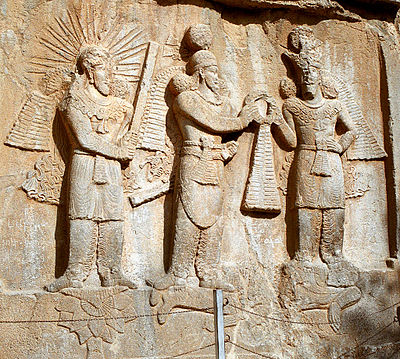
The idea that most of the people around the world have about Stalin is entirely false. This is due to the fact that atheists, materialists, Marxists-Leninists, liberal socialists, socialist-democrats, evolutionists and all the trash of Anglo-Saxon and Ashkenazi Khazarian pseudo-intellectuals and bogus-academics have first perceived, then interpreted, and last analyzed/presented Stalin and his historical role through the most erroneous, Trotskyist misunderstanding/distortion of the Georgian-origin Soviet statesman. But Stalin was an unconditional transcendentalist and a remarkable mystic.
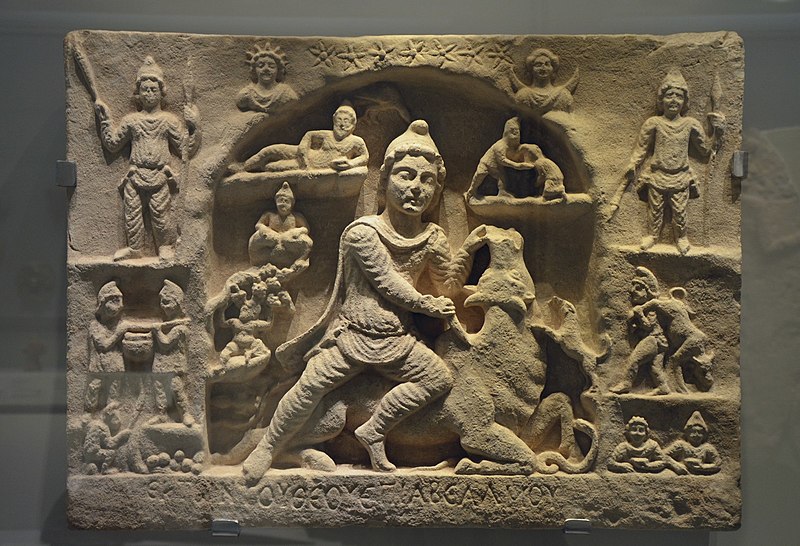
Mithraic Tauroctony from a Mithraeum in Syria (currently in the Israel museum in Jerusalem): a mythical-religious topic early conceived by evil forces as purely eschatological symbolism
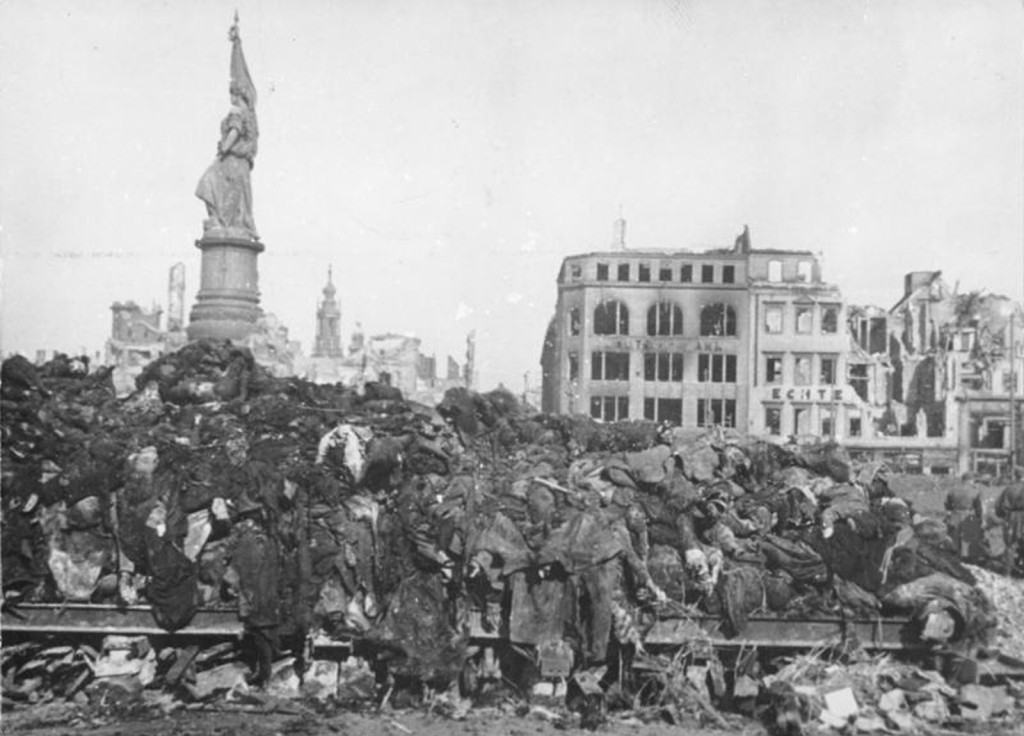
Human sacrifice: dead bodies wait for cremation in Dresden after the bombardment of the ‘Allied’ forces.
I. The erroneous perception of Stalin among most people today
According to this irrelevant story, Stalin (1878-1953) was a resolute materialist, a convinced Darwinist, a devoted Marxist-Leninist, and a heartless dictator who decimated entire nations, before purging the old guard of Communist-Bolshevik partisans, relocating populations, and sending millions to jail. There is only little truth in all this. In fact, Stalin was as realist as Kemal Ataturk; he therefore had to appear to others in the way he did in order to succeed Lenin and eliminate Trotsky. Many may agree with the last sentence, stating that this is part of the well-known History.
But there is also the ‘Other History’; the one that is unknown, because it did not happen. This is, in other words, the negative reflection of the reality. All the same, because this ‘other’ or ‘unknown’ History did not happen, this does not mean that it was not attempted. And indeed many secret and known organizations and ‘societies’ tried to prepare several developments which finally did not occur. It is essential for a true Historian to know well these failed attempts; in fact, he only then understands History as the Absolute Sphere that contains the outcome of all the desires, feelings, thoughts and attempts of the humans.
II. The erroneous perception of WW II by average people today
The unhappened History would trigger indeed far more spectacular developments than what the so-called WW II did – if it happened; part of the evil plan that Stalin triumphantly averted was that Trotsky would succeed Lenin and stay for some time in Moscow, incessantly planning his ‘global’ revolution, which so well reflects the paranoia, the deviance and the putrefaction of today’s ‘American’ (in reality: Anglo-Saxon and Ashkenazi Khazarian) Left. Today, few people can guess the monstrous and inhuman tyranny that comes after the eventuality (May God forbid!) of the American Left’s prevalence.
On the contrary, we know very well what would have happened, had Stalin failed to eliminate Trotsky; it is very simple. Hitler would have invaded, destroyed and demolished the Soviet Union, implementing in the 1940s what Victoria Nuland, Joe Biden, Hillary Clinton and the rest of the American Left trash intend to carry out now: the complete decomposition and dismemberment of Russia. This is so because, as Charles de Gaulle always knew, the USSR was in reality ‘Russia’. If the above statement seems incredible to you, this is only due to the fact that, via a mental mirror game, the true Nazis made the world believe that Hitler was a Nazi and the paragon of Nazism.
As a matter of fact, Hitler was only the Venice Ball mask of Nazism.
The true Nazis were those who fully instrumentalized and utilized Hitler, detaching him from the spiritual tutorship of the great mystic Rudolf von Sebottendorf and usurping the Thule Gesellschaft from the very founder of the society, who had to flee to Turkey. Hitler was merely one of the tools of the true Nazis, i.e. the Anglo-Saxon and Ashkenazi Khazarian Satanists, who were identical then to Trotsky and today to the American Left.
III. The true Yalta Conference
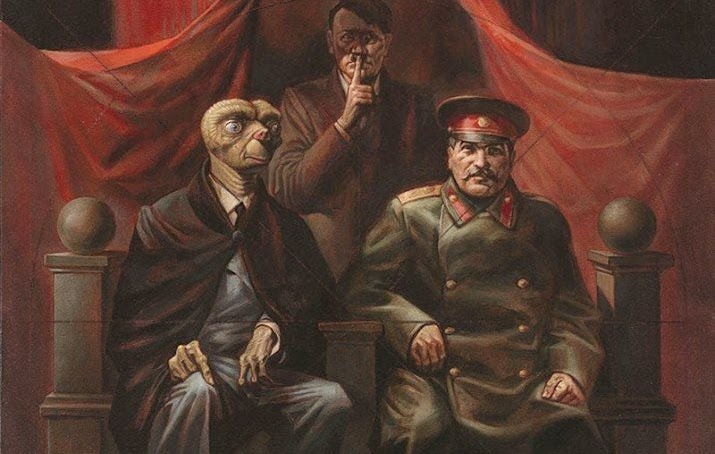
This reality was encrypted in the eschatologically dramatic and historically tragic painting elaborated by Vitaly Komar (Виталий Комар; born 1943) and Alex Melamid (Александр Меламид; born 1945) in 1984 under the title ‘The Yalta Conference’ (Ялтинская конференция). The painting was repeatedly decoded in a distorting manner and duly misinterpreted in order not to disturb those who are embarrassed every time their criminality is revealed in the daylight and every moment they realize that their irrevocable end is about to befall on their wretched heads.
Of course, the painting raises plenty of serious questions; but if -as many forgers and cheaters pretend- the supposed meaning of the painting is that Hitler prevailed by fooling the (three) participants of the illustrious Yalta Conference, then why one of the participants is missing (W. Churchill)? The answer is simple: England was the epicenter of Nazism, the real producer of Hitler, and the true planner of all of his movements. Then, Churchill does not appear in the painting, simply because he was not fooled, being rather in the know. About:
https://ru.wikipedia.org/wiki/Комар_и_Меламид
https://www.golosameriki.com/a/usa-artist-komar-socart-ussr-russia/6392151.html
https://crimeanblog.blogspot.com/2020/08/komar-yaltinskaya-konferenciya.html
https://macdougallauction.com/rus/catalogue/view?id=10320
https://www.artsy.net/artwork/komar-and-melamid-yalta-conference
https://veryimportantlot.com/ru/lot/view/komar-vitaly-and-melamid-alexander-b-1943-and-1555
IV. The Big Game never ended
I don’t intend to discuss either the (crypto-) Nazi English fabrication of Hitler in the 1920s or the apocalyptic painting in the present article. I need only to state at this point that -as historian- I don’t consider the so-called ‘WW I’, ‘WW II’, and ‘Cold War’ as independent episodes or isolated facts, but as an uninterrupted continuity of the evil, Nazi, Anglo-Saxon and Ashkenazi Khazarian colonial plans against Prussia / Imperial Germany, Austria-Hungary, Czarist Russia, Qing China, the Ottoman Empire, Qajar Iran, and the Mughal Empire. It is a clash that has lasted for more than 300 years under various forms, and certainly the most enduring, frontal opposition until now took place between the Anglo-Saxon pseudo-states (UK, US, Australia, New Zealand, Canada, etc.) and (Monarchical-Communist-Republican) Russia.
When it comes to Imperial Germany, the real moment of victory of the ‘Entente cordiale’ was not the abdication of the Kaiser (November 1918), but the rise of Hitler (January 1933).
When it comes to Imperial Russia, the real moment of victory of the ‘Entente cordiale’ was not the abdication of the Czar (March 1917), but the rise of Lenin (October / November 1917).
Pseudo-Nazi (or only partly and reflectively Nazi) Germany was geared to be the tool of the final split of the Russian Empire. Many people have failed to notice (let alone understand) that this was already attempted during the period November 1917-November 1918. Numerous ‘lands’ and nations declared independence quite early, notably Ukraine, Finland, Lithuania, Moldova, Belarus, Estonia, Poland and Latvia.
Furthermore, several other republics declared their independence in 1918, although most of them did not last for long: Tuvan People’s Republic (Тувинская Народная Республика), Transcaucasian Democratic Federative Republic (закавказская демократическая федеративная республика), Kuban People’s Republic (Кубанская Народная Республика), Idel-Ural State (mainly a Tatar state named Ural-Volga state in Tatar; Урало-Волжский штат), Kaluga Soviet Republic (Калужская советская республика), North Ingria or Republic of Kirjasalo (Республика Северная Ингрия или Кирьясало); similar phenomena took place also in Central Asia, notably the Turkestan Soviet Federative Republic.
V. Good intentions and evil purposes
It would be correct and accurate to observe that the theoretical foundations on which these developments (secessions) took place can be retraced back to the famous essay by Stalin ‘Marxism and the National Question’ (1913) and to the Declaration of the Rights of the Peoples of Russia (Декларация прав народов России), which was one of the earliest documents signed by the revolutionary government only on the 15th November 1917, just 8 days after the October Revolution (7th November or 25th October 1917, according to the Old Calendar).
In fact, if the demolition and the split of Imperial Russia into a total of 40-50 states did not occur in the period 1918-1922, this is due mainly to two factors:
First, the evil colonial forces realized that this was quite premature, because they did not possess local stooges and docile pawns among all the nations and the states that would emerge. In this case, they would be met with eventually nasty surprises.
Second, Lenin and the Soviet government feared that many seceded nations could eventually fall into the hands of monarchists, republicans, local landowners, various reactionary pseudo-religious leaders, and private businessmen; even more so, since they had to face a Civil War in many parts of the Empire.
All the same, this early experience must have been a very good lesson for Stalin, who apparently realized that anyone’s best intentions can always be used for the worst purposes, notably by inhuman, evil and criminal forces and secret organizations. It is very clear that during his many years in power, Stalin acted differently, promoting centripetal forces.
What good is it for all the nations and the ethnic groups of the world to accept the equality among the peoples, to ensure free development of all national minorities and ethnographical groups, and to recognize the right of every people to free self-determination, national sovereignty, and even secession and formation of a separate state, if all this serves ultimately the interests of evil, inhuman monsters that will be able -through use of deliberate fraud and extremely sophisticated lies tailored as per the ignorance of every local leader, elite and nation- to exploit this situation in order dominate these seemingly independent nations and to totally enslave them by means of corrupt pawns, involving bribed gangs, clownish politicians, bogus-academics, pseudo-intellectuals, lawless legislators, fraudulent judges, infidel religious ‘leaders’, treasonous military officers, nationally calamitous diplomats, criminal businessmen and untrustworthy ‘statesmen’ like those of today’s Greece, Cyprus, Ukraine, Poland, Lithuania, Latvia, Estonia, etc.?
VI. Roosevelt & Stalin: like Abraham Lincoln & Alexander II
The main fact is therefore that Stalin effectively averted the -much desired by the Nazi rulers of England- disintegration of Russia (USSR) in 1941 – something that Trotsky would prove unable to do. How did Stalin manage to do that? Many people fooled by Western propaganda would answer this question by mentioning details of the Lend-Lease Act that US President F. D. Roosevelt signed on 11th March 1941. This is only partly true; even worse, those who think that the US ‘saved’ Soviet Union do not know the true nature of the US-UK relationship at the time; they actually confuse it with the present circumstances. Yet, we know that, on plenty of occasions, Roosevelt humiliated Churchill in their meetings.
What you can read here is merely pro-English propaganda written as ‘American’: https://www.rferl.org/a/did-us-lend-lease-aid-tip-the-balance-in-soviet-fight-against-nazi-germany/30599486.html
In fact, the American aid helped Soviet Union to avoid heavier casualties and longer war. And the personal relationship between Roosevelt and Stalin was parallel to that between Abraham Lincoln and Czar Alexander II. The villainous English hated the American and the Russian rulers on both occasions.

The evil English hysteria unleashed: in a cartoon from the London Punch magazine (1863), the Russian Czar and the American President are depicted as tyrants, under the paranoid label “Extremes meet”; Abraham Lincoln addresses Alexander II with the words: “I see that we are both in the same situation: you are with your Poles, I am with the southern rebels”. From: https://историк.рф/journal/15/aleksandr-avraam-i-drugie-ofitsialnyie-litsa-6f.html
————————————–
Consequently, the main question stands before us: how did Stalin manage to save the USSR and to avert the defeat and demolition of the Russian Empire (which was then named Soviet Union’)? I would simply respond to this question with just few words:
– With his great spiritual force!
VII. The real, hidden Stalin: an experienced mystic
This may sound bizarre to many. But surely not to Alexei Alexandrovich Menyailov!
This Russian mystic and intellectual (Алексей Александрович Меняйлов; born in 1957) has already researched the topic and published several books about Stalin, fully counterbalancing the earlier mentioned, Trotskyist disfigurement of the Soviet statesman and the conveniently naïve idea of an atheist, materialist, evolutionist, Marxist-Leninist Stalin. Menyailov’s books have titles that speak for themselves; I will only mention here a few.
Сталин: посвящение Волхва (Stalin: the Consecration of the Magician)
Сталин: Путь волхвов (Stalin: The Way of the Magi)
Сталин. Прозрение волхва (Stalin. The Enlightenment of the Magician)
Сталин. Тайны Валькирии (Stalin. Secrets of the Valkyrie)
Сталин. Культ девы (Stalin. The cult of the Virgin)
About: https://www.labirint.ru/books/266487/
https://coollib.com/b/161519-aleksey-aleksandrovich-menyaylov-stalin-posvyaschenie-volhva/readp
https://mognb.ru/books/1153343-stalin-put-volhvov
https://market.yandex.ru/product–aleksei-meniailov-stalin-prozrenie-volkhva/4667305?cpa=1
https://www.koob.ru/menyajlov_aleksej/stalin_tajnue_valmzkirii
In his many books and videos, Menyailov revealed a totally different and spiritually powerful Stalin in striking contrast to the nonsensical portrait and disinformation, which prevailed in this regard for long. With respect to Stalin’s spiritual force and material achievements, the Russian author focuses on the young Georgian’s years in exile and on the Shamanist-Tengrist initiation rituals in the Siberian taiga (boreal forest) to which the arrested revolutionary was introduced after he escaped from the prison and during his period of hiding; those were apparently Stalin’s true formative years. Certainly, Alexei Alexandrovich is not the only to dig in this direction. As the topic is vast, I don’t intend to further explore it within the limits of the present article.
VIII. A Turkish ambassador speaks about Stalin living in Artvin and Istanbul
One element that can shed more light on Stalin’s spiritual formation is the period of almost 24 months during which the Soviet leader seems to have disappeared from all screens (1911-1912). In fact, after the middle of 1910 and until the beginning of 1913 (when Lenin’s disciple traveled to Vienna), Stalin’s biography has been mainly a matter of purely theoretical reconstruction. For someone known to have constantly escaped jails, any illegal border-crossing appears to be a minor issue, particularly if we speak about mountainous terrains and pre-electronic times.
The topic of Stalin having spent one or two years in the Ottoman Empire is not new; individuals, journalists and ambassadors have spoken about that in the past. I will now mention only a few – merely on indicative basis.
The veteran Turkish diplomat Ender Arat, speaking to the journalist Şenol Çarık in an article-interview about one of his books, mentioned Stalin’s presence in Artvin, in today’s NE Turkey. As a matter of fact, the former Turkish ambassador’s remarkable book highlights selected episodes from the sojourn of many worldwide important people in Turkey (or earlier in the Ottoman Empire); indeed, many famous Russians, Hungarians, Poles, Jews, Germans, and Austrians lived in Turkey during a certain period of their life.
Ender Arat’s book is titled ‘Türklere Güvendiler – Tarih Boyunca Türk Topraklarına Sığınanlar’ (They Trusted the Turks – Those who have taken Refuge in Turkish Lands throughout History); it was published by Tarihçi Kitabevi in 2016 and republished in 2020. It can be found here:


Despite the fact that the said book concerns numerous famous persons, who resided in Turkey for some time, the interview-article’s title revolves exclusively around the Soviet statesman:
Stalin’in bilinmeyen Artvin dönemi (Stalin’s unknown period in Artvin)
https://www.odatv4.com/guncel/stalinin-bilinmeyen-artvin-donemi-0803161200-90845
The interview-article was published on 8th March 2016 under the subtitle:
Emekli Büyükelçi Ender Arat, tarih boyunca bu topraklara sığınanların kitabını yayınladı (Retired Ambassador Ender Arat has published the book about those who took refuge in these lands throughout history)
About the Turkish ambassador:
https://tr.wikipedia.org/wiki/Ender_Arat
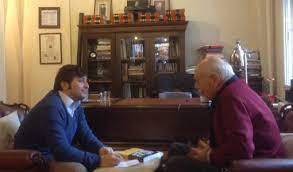
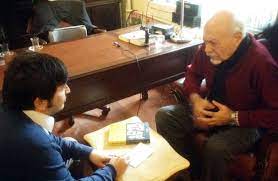
The excerpt about Stalin is rather brief, but it also makes state of his travels up to Istanbul.
Mesela Stalin daha Stalin değilken, Gürcistan’dayken, Artvin’de bir köye gelip domuz avlıyor, İstanbul’da domuz satıyor.
An English translation reads:
For example, when Stalin was in Georgia, at the time he was not called Stalin, he came to a village in Artvin and hunted wild boars, and then he sold them in Istanbul.
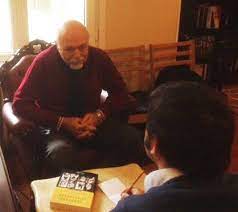
Ambassador Arat refers to the time Stalin had not yet been given this illustrious nickname by Lenin, and he was then known merely through his Georgian name and surname Ioseb (Joseph) Dzhugashvili (also spelt Jughashvili; Иосиф Джугашвили). It is only after 1913, at the age of 35, that the young revolutionary started being called ‘Stalin’.
https://ru.wikipedia.org/wiki/Дореволюционная_биография_Сталина
https://en.wikipedia.org/wiki/Early_life_of_Joseph_Stalin
https://en.wikipedia.org/wiki/Joseph_Stalin
https://ru.wikipedia.org/wiki/Сталин,_Иосиф_Виссарионович
https://en.wikipedia.org/wiki/Dzhugashvili
https://ru.wikipedia.org/wiki/Джугашвили
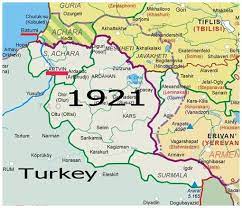
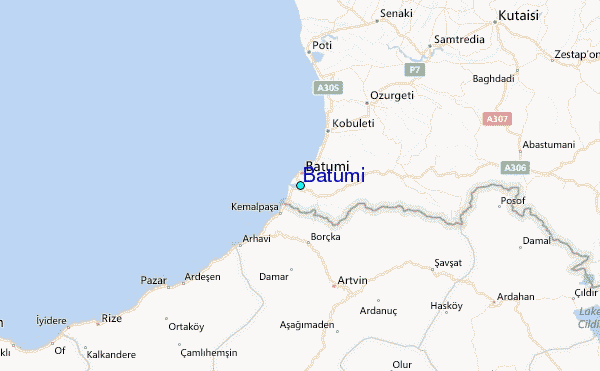
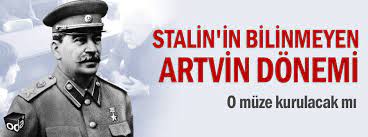
The aforementioned brief mention would be almost entirely immaterial without the reference to Istanbul where Stalin used to travel and sell the skin of wild boars that he had hunted; this is so because at the time Artvin was part of the Russian Empire.
https://ru.wikipedia.org/wiki/Артвин
https://tr.wikipedia.org/wiki/Artvin
https://en.wikipedia.org/wiki/Artvin
When the Russian army occupied Artvin during the Russian-Ottoman War of 1877-1878, there was an exodus of Ottoman populations and an influx of Georgian and Armenian newcomers; Artvin belonged then to the Batumi region (область), i.e. the same province where Stalin used to reside after 1901. The Adjara capital functioned indeed for him as a true gate to the Ottoman Empire.
IX. Stalin in Ottoman Anatolia: 1911-1912
There have been many other testimonials as regards Stalin’s movements and sojourn in parts of the Ottoman Empire – for the same always period, i.e. from some time in the second half of 1910 until some moment in 1912.
In an article posted on 20th September 2007, the Russian portal Islam News (https://islamnews.ru/news-7368.html) reproduced a feature (Сталин провел два года в Турции и знал турецкий язык, i.e. ‘Stalin spent two years in Turkey and knew Turkish’) that had been earlier published in the magazine Most, which was a periodical issued at the time by the Russian-Turkish Association of Friendship and Entrepreneurship. According to the publication, I. V. Dzhugashvili (Stalin) smuggled his way to Anatolia and hid there for two years in the village of Tashburun (today inhabited by ca. 2000 people), Akyazi district, Sakarya region.
Living in the house of his friend from Batumi, Vezir Yurt (apparently an Adjarian, i.e. Georgian Muslim), Stalin needed to cross a distance of about 190 km to reach the Ottoman capital.
https://tr.wikipedia.org/wiki/Ta%C5%9Fburun,_Akyaz%C4%B1
https://tr.wikipedia.org/wiki/Akyaz%C4%B1
https://tr.wikipedia.org/wiki/Sakarya
https://en.wikipedia.org/wiki/Adapazar%C4%B1
https://tr.wikipedia.org/wiki/Adapazar%C4%B1
https://ru.wikipedia.org/wiki/Аджария
https://ru.wikipedia.org/wiki/Аджарцы
https://ru.wikipedia.org/wiki/История_Аджарии
https://tr.wikipedia.org/wiki/Acara_tarihi
https://tr.wikipedia.org/wiki/Acara_%C3%96zerk_Cumhuriyeti
https://tr.wikipedia.org/wiki/Acaral%C4%B1lar
https://tr.wikipedia.org/wiki/Acara_leh%C3%A7esi
https://en.wikipedia.org/wiki/Adjarians
https://en.wikipedia.org/wiki/History_of_Adjara
https://en.wikipedia.org/wiki/Adjaran_dialect
https://en.wikipedia.org/wiki/Adjara
According to the same portal, “Nejmi Colak, one of those who knew him (: Stalin) in Turkey, says that at that time he (: Stalin) used the surname Beriyashvili”. This is quite plausible, as Stalin was already known for his numerous pseudonyms and various nicknames; trying to appear as having an unusual surname, the paradoxical émigré apparently fabricated this hypothetical family name out of a basically Mingrelian family name (Beria or Berya, like that of the famous Soviet statesman Lavrentiy Pavlesdze Beria; 1899-1953) conventionally Georgianized with the addition of the surname ending –shvili. Stalin’s absolutely extraordinary father, who was literate and multilingual (something extremely rare for a shoe maker), may have introduced -thanks to his Ossetian origins and Mingrelian acquaintances- his young son Ioseb Besarionisdze (later Russianized as Iosif Vissarionovich) to some of his Mingrelian friends or colleagues.
In any case, when it comes to Stalin, all things Mingrelian are in reality a constantly recurring matter, particularly if we also take into account the notorious ‘Mingrelian affair’ (Мингрельское дело), a story stupendously invented to best inculpate several Soviet officials due to their contacts with Western diplomats.
https://en.wikipedia.org/wiki/Besarion_Jughashvili
https://ru.wikipedia.org/wiki/Джугашвили,_Виссарион_Иванович
https://bigenc.ru/domestic_history/text/2214846
https://ru.wikipedia.org/wiki/Мингрельское_дело
https://en.wikipedia.org/wiki/Mingrelian_affair
https://culture.gov.ru/services/reestr-prokatnykh-udostovereniy/531891/
The portal Islam News states that the testimonial about Stalin’s biannual residence in Tashburun is due to Kemal Yurt, who was (back in the middle 2000s) over 80 years old; he was the son of Stalin’s friend and refugee from Batumi Vezir Yurt in whose house Stalin stayed. Vezir Yurt and Stalin had known one another in Batumi and they were constantly in contact.
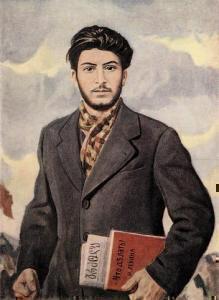
Stalin in young age; painting by Irakli Moiseevich Toizde (1902-1985; Ираклий Моисеевич Тоидзе) About:
https://ok.ru/group52503681892490/topic/65235333390474
https://ru.wikipedia.org/wiki/Тоидзе,ИраклийМоисеевич
Kemal Yurt noted that, in one of the letters written by Stalin a year after his return to Russia (1913) and dispatched to Vezir Yurt, the Communist activist expressed the desire to move to the Ottoman Empire again. Kemal’s father dissuaded him from going, writing: “You are already known here. Don’t come or they’ll kill you”. It is however noteworthy, as a sort of ‘parallel lives’, that Vezir Yurt was elected headman of the village, and he held this position for many years, when his old friend was the sole ruler of the USSR.
The same story was published under the title ‘Stalin Türkiye’de saklanmış’ (Stalin hid in Turkey) in the high circulation Turkish daily Hurriyet on 21st April 2005.
https://www.hurriyet.com.tr/gundem/stalin-turkiye-de-saklanmis-313364
X. Turkish statesman Rıza Nur noted that Stalin understood Turkish
The same article provides two more independent testimonials of people whose relatives and ancestors had encountered the young Georgian fugitive and later recognized him, when the Turkish newspapers started publishing pictures of the Secretary General of the Communist Party of the USSR (after 1922). The fact that Stalin spoke and understood Turkish is also revealed by an episode narrated by a very bizarre and controversial Turkish physician, writer, politician and statesman Rıza Nur (1879-1942).
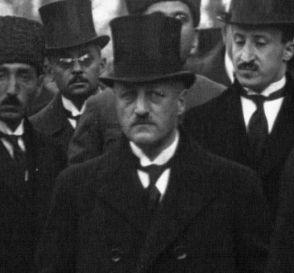
Early elected as deputy (from Sinop) in the second term of the Ottoman Parliament (Meclis-i Mebûsan; 1908), Rıza Nur was also elected in the first and the second terms of the Turkish Parliament (Türkiye Büyük Millet Meclisi). He took office in several ministries (notably he was Minister of Health for the period 1921-1923), and he participated in the Moscow Treaty (Moskova Antlaşması, 1921) and the Lausanne Treaty. Openly self-declared as homosexual and known for his endless demands for unusually bold reforms, Rıza Nur clashed with many crypto-Islamists around Kemal Ataturk and he was finally forced to leave Turkey in 1926. He then lived in England for several years, taught Turkic languages and Turkology, authored several articles and books, entrusted his biography to the British Museum (so that it is published posthumously), and he was ultimately allowed to return to Turkey, after Kemal Ataturk’s death (1938), due to the persistent English diplomatic demands.
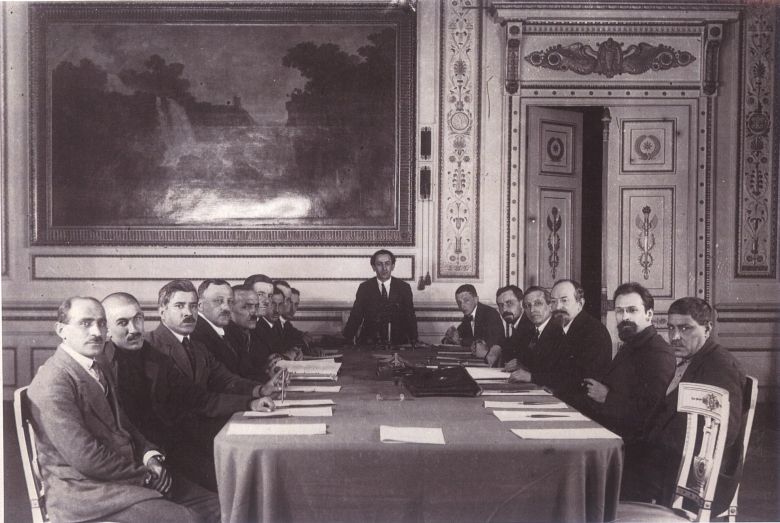
Moscow Treaty
The disreputable and squalid rascal, criminal and traitor Kadir Mısıroğlu (1933-2019), a clownish humanoid widely acknowledged as MI6 informer, agent and pawn known for his demented, execrable, and treacherous Neo-Ottomanist propaganda, was secretly entrusted by the British Museum with the treacherous and insidious task of publishing in Turkey Riza Nur’s biographical book in order to intentionally generate intellectual-educational- social-political turmoil. Of course, the book was duly and automatically banned in Turkey, because the liberal ideas and narratives of the author would eventually tarnish the image and the heritage of Kemal Ataturk among idiotic average people who would consider the founder of Modern Turkey as intolerably tolerant toward Rıza Nur, a man who explicitly and blatantly stated that he was ‘feeling like a woman’.
https://tr.wikipedia.org/wiki/R%C4%B1za_Nur
https://tr.wikipedia.org/wiki/Meclis-i_Meb%C3%BBsan
https://tr.wikipedia.org/wiki/T%C3%BCrkiye_B%C3%BCy%C3%BCk_Millet_Meclisi
https://tr.wikipedia.org/wiki/Moskova_Antla%C5%9Fmas%C4%B1
Rıza Nur wrote that, when he was sent (along with Yusuf Kemal and Ali Fuad) by the Grand National Assembly of Turkey to Moscow to conclude the border treaty (which became known as Moscow Treaty) and to get, if possible, financial help, the Turkish delegation failed to find common ground with Georgy Chicherin (Георгий Васильевич Чичерин; 1872-1936), the then Minister of Foreign Affairs of the USSR. They then decided to meet with Stalin, whom they considered a more efficient person, although Stalin did not hold an important position, being merely People’s Commissar for Nationalities of the RSFSR (Народный комиссар по делам национальностей РСФСР; 1917-1923) and People’s Commissar of the Workers’ and Peasants’ Inspectorate of the RSFSR (Народный комиссар рабоче-крестьянской инспекции РСФСР; 1920-1922). At this point, one must take into consideration that Stalin became Secretary General (Генеральный секретарь ЦК КПСС) only in 1922; even worse, Stalin’s military command (1918-1921) was at times controversial and he was repeatedly accused by Trotsky and Lenin for ‘strategic mistakes’ in the Polish-Soviet war, during which Stalin appeared to be defiant, disobeying orders to transfer his troops and to assist Tukhachevsky (Михаил Тухачевский) in attacking Warsaw.
https://ru.wikipedia.org/wiki/Чичерин,_Георгий_Васильевич
According to Rıza Nur’s narrative, immediately before the meeting, Stalin witnessed an argument among the Turkish delegates, who spoke in Turkish. One of them was shy enough to ask financial help from the Soviet government, which too had to face many problems, wars and local uprising, and said: “I can’t ask the Communists for money, ask for it yourself”. Rıza Nur was more resolute and replied pointing out that they do not ask the money for themselves but for their motherland; he then went on stating that “the one who asks is equivalent to one beggar, and the one who does not give is equivalent to two beggars”. Upon hearing this, Stalin smiled, in an indication that he had understood it all, and subsequently greeted them. The border agreement was concluded as the Turkish delegation wanted it to be, and Stalin agreed with the Turkish demand for some financial help (something that Lenin was already willing to offer to Kemal Ataturk as early as 1920). Details:
https://www.rbth.com/history/333503-how-bolsheviks-helped-shape-turkey
XI. Stalin’s cultural background: distorted & unknown to most
Most of the people worldwide have a very erroneous idea also about Stalin’s cultural, intellectual, educational, literary, and ethnographic background. They view Stalin as a Russian of the end of the 19th c. and of the beginning of the 20th c., but this is fully wrong. It would be certainly worse to view the young Stalin as a European, even up to the (minimal) degree that average Russians were Europeanized or westernized in the last three or four decades of Imperial Russia. Only the Russian elites were then partly Europeanized; I say so, because there was an Orthodox Russian part of the Czarist elite, which rejected with vehement indignation and absolute disgust any sort of Europeanization or Westernization.
Georgia was indeed part of the Russian Empire, but Georgians were very different from the Russians in every sense. Georgians are Christian Orthodox, but for the early Christian period of their past, they were Monophysites (or rather Miaphysites), which makes them far closer to the Armenians, to the Aramaeans of Syria (and, in any case, originally Iberia/Georgia depended on the Patriarchate of Antioch), Mesopotamia and Phoenicia (Lebanon) and to the Copts of Egypt than to the Russians or the Eastern Roman Orthodox peoples (Romanians, Bulgarians, Serbs, Greeks, Albanians, etc.).
Only their rivalry with the also Monophysitic (or Miaphysitic) Armenians and the embarrassing attempt of the latter to get involved in the administration of the Georgian Church pushed -after many long centuries- the Georgians to accept Constantinopolitan Orthodoxy and to organize two events to subsequently denounce and utterly reject the Armenian Church:
– the Third Council of Dvin (in 607), and
– the council of Ruisi-Urbnisi (in 1103).
Perhaps most of today’s Russian priests, monks and theologians would pronounce these Georgian toponyms with some difficulty, but Urbnisi, a historic site known for its majestic monuments and outstanding role in the History of Georgia, is located only few kilometers away from Gori, the city where Stalin was born.
https://hmong.ru/wiki/Third_Council_of_Dvin
https://en.wikipedia.org/wiki/Third_Council_of_Dvin
https://hmong.ru/wiki/Council_of_Ruisi-Urbnisi
https://ru.wikipedia.org/wiki/Урбниси
https://ru.wikipedia.org/wiki/Урбниси_(собор)
https://en.wikipedia.org/wiki/Council_of_Ruisi-Urbnisi
https://en.wikipedia.org/wiki/Urbnisi
Although an integral part of Oriental Christianity, Georgian Orthodoxy has only the name common with the Eastern Roman, the Early Slavonic and the Modern Russian churches. On the contrary, the Georgian Church is culturally and historically closer to the Monophysitic and Nestorian Aramaeans of Lebanon, Syria, Turkey, Iraq, and Iran, as it is clearly demonstrated by a multitude of historical sources, notably the famous story of the Thirteen Assyrian Fathers. Since the term ‘Assyrian’ may appear odd, I have to herewith clarify that the Nestorian Church or rather Patriarchate, was first based in Seleucia-Ctesiphon, then in Abbasid Baghdad, and later in Qudshanis, near today’s Hakkari (SE Turkey), and it was named (in Syriac Aramaic) after the historical land of Assyria: Edta Atureta d-Madenha, i.e. ‘Assyrian’. This occurred in spite of the fact that it was initially an entirely Aramaean Church before numerous Asiatic nations, notably Sogdians, Turkic nations, Mongols and Chinese, accepted Nestorianism.
The story of the Thirteen Assyrian Fathers, who preached Christianity in Georgia, and the theological and liturgical foundations of Georgian Christianity were among the topics that Stalin studied scrupulously for five years (1894-1899) in the Russian Orthodox Spiritual Seminary in Tbilisi (at the age of 16-21). Reacting against the Russian priests who were teaching there, Stalin realized very well (and in young age) the value of national identity and the importance of cultural integrity. He never became a Russian. This means that even fewer were the chances of him ever becoming a Europeanized or westernized intellectual and activist – let alone a European or Western.
https://pravoslavie.ru/103517.html
https://ru.wikipedia.org/wiki/Фаддей_Степанцминдский
https://en.wikipedia.org/wiki/Georgian_Orthodox_Church
https://en.wikipedia.org/wiki/Thirteen_Assyrian_Fathers
https://en.wikipedia.org/wiki/Church_of_the_East
https://en.wikipedia.org/wiki/Qudshanis
https://ru.wikipedia.org/wiki/Тбилисская_духовная_семинария
https://en.wikipedia.org/wiki/Tbilisi_Spiritual_Seminary
It is not only with respect to Christianity that Stalin was an entirely (and consciously) Oriental (and not Muscovite, Kievan or Constantinopolitan, let alone Catholic or Protestant) young intellectual; Georgia’s Antiquity is irreversibly intertwined with that of Iran. For a large part of their Ancient History, Georgians lived in an Iranian imperial province (satrapy). This may appear natural, since the entire Caucasus region, Anatolia, the southern part of today’s Ukraine, Crimea, most of today’s Romania and Bulgaria, involving Thrace and Macedonia, were also parts of the Achaemenid Iranian Empire (550-330 BCE), pretty much like today’s Egypt, Libya, Sudan, Syria-Palestine, Mesopotamia, Central Asia, Indus Valley region, and the Arabian Peninsula’s coastlands of the Persian Gulf. In fact, pre-Islamic Georgia was independent from Iran only when the Empire was weak, notably during the Arsacid Parthian dynasty (250 BCE – 224 CE).
This historical reality is quasi-entirely concealed in the forgery published by the Nazi Wikipedia as ‘History of Georgia’:
https://en.wikipedia.org/wiki/History_of_Georgia_(country)
XII. The Mithraic Iranian cultural heritage of Georgia & Stalin
Thank God, there was no Wikipedia at the time of Stalin; but all the monuments, the historical texts, the inscriptions, the traditions, the legends, the myths and the epics were there. The historical past of Georgia has nothing to do with that of Ancient Rome, except for some Roman military expeditions which were parts and episodes of the interminable Roman-Iranian conflict. Zoroastrianism, Mithraism, the Universal Imperial concept and discipline of Iran (of which Georgia and the entire Caucasus were an integral part), and the legacy of the Achaemenid dynasty have always been part of Georgia’s history, culture and heritage; the same is valid for the terrible civil wars, which were caused (as early as during the reign of Kabujiya/Cambyses II in the late 6th c. BCE) by the evil and polytheistic Mithraic Magi, who opposed the monotheistic imperial rulers of Achaemenid Parsa (Persepolis),
https://ru.wikipedia.org/wiki/Камбис_II
https://en.wikipedia.org/wiki/Cambyses_II
The aforementioned is valid for the comprehensively Iranized (or Orientalized) Macedonian kingdom of Pontus that controlled parts of Georgia (Iberia). It is also noteworthy that the monarchs of that kingdom fully abandoned their earlier culture and religion, and they were solemnly named after, and sacramentally blessed by, Mithra (Mitra; also known as Mehr). That’s why they wholeheartedly propagated their new religion throughout Anatolia and across the surrounding seas. More importantly, ruling in the name of Mithra, Pontus King Mithridates VI (135-63 BCE) supported the Cilician Mithraic pirates, who caused terrible damage to the Roman interests, desecrated the most important temples of the blasphemous barbarians of Greece, and duly profaned the peak sanctuary of Mt. Olympus, i.e. Ancient Greeks’ supposedly holiest place.
https://ru.wikipedia.org/wiki/Грузия#История
https://ru.wikipedia.org/wiki/Митридат_VI
https://en.wikipedia.org/wiki/Mithridates_VI_Eupator
https://ru.wikipedia.org/wiki/Митридат_VI#Война_с_Помпеем
https://ru.wikipedia.org/wiki/Киликийские_пираты
https://en.wikipedia.org/wiki/Cilician_pirates
Mithraism is an integral part of the Georgian identity. The House of Mihran (i.e. the dynasty of the Mithraic faithful nobles), which was one of the seven royal houses of Iran, is at the origin of the kings of Aluank (Caucasian Albania; basically known as Ardhan in Parthian and as Arran in Middle Persian), of the kings of the Armenian Gardman, of the kings of the Armenian Gogark, and of the Chosroid dynasty of Georgia (which was based mainly in Kakheti). The Georgian (Iberian) Chosroid kings (Khosrovianni), who accepted Christianity (337 CE), ruled from 284 CE until 580 CE as vassal kings of the Sassanid emperors of Iran (even after the death of Vakhtang I in 522 CE); their offspring offered an Iranian royal continuity in Caucasus down to the Guaramids and the Nersianids (who ruled as erismtavari, ‘great dukes’ in parts of Georgia from 588 until 786, with intervals of Islamic occupation), as well as to the Bagrationi (the Georgian Bagratids), who ruled from 888 CE {when king Adarnase IV (ca. 870-923) took power over part of Georgia} until 1810, when the Russians canceled the Treaty of Georgievsk, which was signed in 1783, and abolished the Georgian Monarchy. This was the true historical past of Stalin and this is what he learned as his own national past, thanks to his home and school education.
The first Chosroid monarch, Mirian III of Iberia (277-361; reigned after 284 as vassal), bears a Mithraic name, as Mirian in Georgian is the equivalent of Mihran. The name of the dynasty is due to the (non-ruling) father of Mirian Chosroes (Khusraw), and this is a typically Iranian name of high spiritual, universal and imperial connotation. The Georgian Chronicles (Картлис цховреба /Kartlis Tskhovreba), which were composed first in the 8th c., make state of his conversion to Christianity (337 CE), following the ministry of Nino, a female Cappadocian monk; his second wife, queen Nana of Iberia, accepted the Christian faith first. All three were canonized in Georgia as Equal-to-Apostles (motsikultastsori/равноапостольный); in spite of the evident Christianization, the Chosroid dynasty is filled with rulers bearing Iranian names and venerating Mithraic concepts, symbols and traditions. Perceiving the historical developments within the correct contextualization, one can safely state that the Christianization of Georgia and Armenia consisted merely in the evangelization of a part of the wider Iran. And Stalin’s mother was a devout Christian, well versed in the theological dogma, and very knowledgeable in Ecclesiastical History. About:
https://ru.wikipedia.org/wiki/Михраниды
https://en.wikipedia.org/wiki/Mihranids
https://en.wikipedia.org/wiki/House_of_Mihran
https://ru.wikipedia.org/wiki/Семь_великих_домов_Парфии
https://en.wikipedia.org/wiki/Seven_Great_Houses_of_Iran
https://ru.wikipedia.org/wiki/Хосроиды
https://en.wikipedia.org/wiki/Chosroid_dynasty
https://en.wikipedia.org/wiki/Georgian_monarchs_family_tree_of_Iberia
https://ru.wikipedia.org/wiki/Кавказская_Албания
https://en.wikipedia.org/wiki/Caucasian_Albania
https://ru.wikipedia.org/wiki/Мириан_III
https://en.wikipedia.org/wiki/Mirian_III_of_Iberia
https://ru.wikipedia.org/wiki/Святая_Нина
https://en.wikipedia.org/wiki/Saint_Nino
https://ru.wikipedia.org/wiki/Нана_(царица)
https://en.wikipedia.org/wiki/Nana_of_Iberia
https://en.wikipedia.org/wiki/Equal-to-apostles
https://ru.wikipedia.org/wiki/Монастырь_Самтавро
https://en.wikipedia.org/wiki/Samtavro_Monastery
https://ru.wikipedia.org/wiki/Картлис_цховреба
https://en.wikipedia.org/wiki/The_Georgian_Chronicles
https://hmong.ru/wiki/Principality_of_Iberia
https://ru.wikipedia.org/wiki/Гардман
https://en.wikipedia.org/wiki/Gardman
ttps://ru.wikipedia.org/wiki/Гугарк
https://en.wikipedia.org/wiki/Gugark
https://ru.wikipedia.org/wiki/Гуарамиды
https://en.wikipedia.org/wiki/Guaramid_dynasty
https://ru.wikipedia.org/wiki/Картлийское_эрисмтаварство
https://en.wikipedia.org/wiki/Nersianid_dynasty
https://ru.wikipedia.org/wiki/Багратионы
https://en.wikipedia.org/wiki/Bagrationi_dynasty
https://en.wikipedia.org/wiki/Adarnase_IV_of_Iberia
https://ru.wikipedia.org/wiki/Адарнасе_IV
https://en.wikipedia.org/wiki/Bagrat
https://tabarionline.com/category/travel-writing/caucasus/georgia/
More:
https://ru.wikipedia.org/wiki/Гарни_(храм)
https://en.wikipedia.org/wiki/Temple_of_Garni#Reconstruction
XIII. The long, heavy shadow of the Sassanids
In fact, the vast symbolic, liturgical and spiritual thematic, which was transferred from Mithraism to Christianity, thus totally disfiguring the teachings of Jesus, helped perpetuate the presence of Ancient Iranian spiritual, religious and cultural concepts within Georgian Christianity. This fact concerns also several other religions that were formed or diffused and prevailed in the region, Islam included. Of course, Stalin was not an Orientalist, neither did he study Orientalism to know these topics in detail, but he was inevitably impacted by them as I will explain below. This definitely makes of him an original Oriental. About:
https://en.wikipedia.org/wiki/Mithraism_in_comparison_with_other_belief_systems
https://www.tertullian.org/rpearse/mithras/display.php?page=mithras_and_christianity
https://www.cais-soas.com/CAIS/Religions/iranian/Mithraism/mithraism_and_christianity.htm
https://en.wikipedia.org/wiki/Zurvanism
We have to demonstrate a similar historical understanding for the role that the flamboyant Sassanid Empire of Iran (224-651 CE) played in the formation of the Georgian soul, tradition and spirituality. In fact, the country was an Iranian province and, despite its apparent Christianization, the cultural life was entirely Iranian. The Sassanid reassessment of Zoroastrianism, as undertaken by Kartir (a major high priest, a revered mystic, and a great religious and imperial reformer who lived during the 3rd c. CE), brought about
a) a striking contrast to, and virulent rejection of, Mani and his religion (Manichaeism),
b) an unprecedented and divinely consecrated heroism,
c) a formidable effort to make of the Achaemenid ancestors of the Iranians the legendary and exemplary figures of a Divine Order (without involving though a typical ancestor veneration),
d) a universal vocation, role, and mission of Iran to save the world within an eschatological context, and
e) a paramount change in terms of religious intolerance, military brutality, imperial commitment, and behavioral determination. This overwhelming transformation has left enormous traces in Iran, Caucasus, Central Asia, and many other parts of the Turanian-Iranian world throughout the ages.
In fact, no other empire in the world could have served as better paradigm to both, Hitler’s Germany and Stalin’s Russia, than the Sassanid Empire of Iran. The Roman Empire did not develop or represent any mythical or legendary reference to the ancestors of the Romans except for the very limited attempts of Virgil, Horace or Ovid; even these poets did not envision any universal role, let alone vocation, for the Romans.
The Roman poets, who recalled the Roman national past, retracing it up to Aeneas and Troy, who attempted to reveal human wisdom in rhymes, and who envisioned human and divine interaction, were not sacerdotal masters, spiritual mystics or universal hierophants able to possibly position Rome in terms of Cosmogony, Cosmology, Eschatology and Soteriology. They were low-level talented artists, who wrote for merely personal or social purposes to please the Roman elite around them. In fact, for the worldwide standards of a truly universal empire, the Roman Empire is a most failed state – either you examine its pre-Christian period or you focus on the Eastern Roman imperial model.
Hitler’s references to the Nordic mythical context and Stalin’s calls for the Great Patriotic War (Великая Отечественная война) and exultations of the heroes of the motherland (герои родины), despite their great dissimilarities, are culturally closer to the Sassanid Iran than to the, spiritually impotent and intellectually weak, Roman Empire where Art acquired value per se, due to the total absence of true spirituality, sacerdotal potency, divine order, and universal appeal.
The extraordinary centripetal dynamics launched by Kartir triggered also centrifugal forces; Mazdak, a 5th c. – early 6th c. Iranian priest, the worldwide first to evangelize a Communist society, unleashed a thunderous religious attack against the Sassanid establishment, before failing and being banned. But both movements motivated and galvanized several generations of formidable opponents to the Omayyad and the Abbasid caliphs, leading people to either military resistance (like the Khurramites) or secession {like in numerous cases attested during the period of Islamic History that is known as ‘Iranian Intermezzo’, a term aptly introduced by the Russian Orientalist Vladimir Minorsky (1877-1966)}.
https://ru.wikipedia.org/wiki/Картир
https://iranicaonline.org/articles/kartir
https://en.wikipedia.org/wiki/Kartir
https://ru.wikipedia.org/wiki/Маздак
https://en.wikipedia.org/wiki/Mazdak
https://ru.wikipedia.org/wiki/Маздакизм
https://en.wikipedia.org/wiki/Mazdakism
https://ru.wikipedia.org/wiki/Хуррамиты
https://en.wikipedia.org/wiki/Khurramites
https://ru.wikipedia.org/wiki/Бабек
https://en.wikipedia.org/wiki/Babak_Khorramdin
All the above was of vital importance for the History of Georgia and, more particularly for the survival of Georgian Christianity. In a way, the continuance of the Christian kingdom of Georgia depended basically on its Iranian nature, character and affiliation. As Iranian periphery, Georgia (like Armenia) was occupied during the early Islamic invasions. Resistance against the caliphates of Damascus and, after 750 CE, Baghdad was multifold throughout the territories of the Caliphate:
a- Islamic (notably led by the descendants of Ali ibn Abi Taleb who were the only rightful pretenders to the title of Caliph),
b- Iranian spiritual and cultural (involving notably the Khurramites who were sort of Neo-Mazdakites), and
c- Christian (mainly in Georgia and Armenia).
XIV. An indelible stamp on Islam: the Iranian Intermezzo
In fact, it is the success of the Iranian spiritual and cultural resistance that brought about groundbreaking results as early as 200 years after prophet Muhammad died (632 CE). In fact, the Abbasid Caliphate was vast and difficult to rule (from Morocco to the borders of China and from Siberia to Mozambique); the Caliphs had to care mostly about their survival because the outright majority of Muslims virulently opposed them. That’s why centrifugal forces were early developed and formidable militants of Iranian ancestry, culture and faith seized sizeable mountainous or remote lands and, one way or another, seceded from the Abbasid Caliphate.
This overwhelming phenomenon took various forms; sometimes a local feudal lord, who remained Mazdean for 70 or 80 years after the Islamic invasions, accepted Islam nominally, helped militarily the governor who was sent from Baghdad, and then gradually reduced him to impotency, making him unable to prevent the seizure of power at the local level. This was the case of the Samanid rulers (819-999), who imposed Iranian-Turanian culture and language over a large part of NE Iran and Central Asia, while being ceremonially Muslim.
Another example was the Tahirid dynasty (821-873), which was launched by Tahir ibn Husayn, an Iranian of noble descent who served the Caliph al-Ma’mun in his fight against his brother al-Amin only to be rewarded with the governorship of first Mosul and then Khorasan. First from Merv and then from Neyshapur the Tahirids ruled independently, only nominally accepting the authority of the Caliph at Baghdad.
And this was in fact the manner through which the Abbasid Caliphate totally collapsed already 100 years after its rise (750 CE); in fact, by the middle of the 9th c., the ruler at Baghdad was a powerless figurehead merely receiving news about ‘his’ provinces, which were controlled -in his name- by various Iranian and Turanian combatants whose culture was markedly Sassanid Iranian, although they nominally acknowledged Islam as religion.
The Samanids, the Tahirids, the Saffarids of Khorasan (861-1003), the Sallarids of Caucasus (919-1062), the Ziyarids of Northern Iran (931-1090), and above all the Buyids (934-1062), who held the Abbasid Caliph captive in his palace in Baghdad, ruled all lands between Syria and Pakistan, and used the Sassanid title ‘Shahanshah’, actively promoting the reinstatement, the rehabilitation, and the reinvigoration of all Sassanid ideals, virtues, principles, values and concepts. At the same time, an Iranian origin family, the Barmakids (Бармакиды/برمکیان), managed to obtain great power as advisers of the imperially inexperienced Abbasids, thus gradually transforming them into culturally Iranian caliphs of Muslim faith. In parallel, and as part of the imperial emancipation of the Abbasid family, Aramaeans and Iranians transferred their libraries and schools to Abbasid Baghdad, thus forming the greatest center of science, learning, research, translation and wisdom in the then world, namely the Bayt al Hikmah (بيت الحكمة/ Дом мудрости).
Only because the aforementioned developments caused the central Abbasid force to vanish into thin air, was it possible for the Caucasian Christian kingdoms of Georgia and Armenia to be reconstituted in the late 9th c. It is to be however reminded that these two seceded kingdoms constantly fought against one another. For all these reasons, one has to realize that, before the arrival of the Seljuks, the borderlines of the different kingdoms or emirates that were located between the Eastern Mediterranean coast lands, the Persian Gulf shores, the Indus River Valley, and Central Asia were moving like the sand of the desert. About:
https://ru.wikipedia.org/wiki/Иранское_интермеццо
https://en.wikipedia.org/wiki/Iranian_Intermezzo
https://ru.wikipedia.org/wiki/Саманиды
https://en.wikipedia.org/wiki/Samanid_Empire
https://ru.wikipedia.org/wiki/Тахириды
https://en.wikipedia.org/wiki/Tahirid_dynasty
https://ru.wikipedia.org/wiki/Саффариды
https://en.wikipedia.org/wiki/Saffarid_dynasty
https://ru.wikipedia.org/wiki/Салариды
https://en.wikipedia.org/wiki/Sallarid_dynasty
https://ru.wikipedia.org/wiki/Зияриды
https://en.wikipedia.org/wiki/Ziyarid_dynasty
https://ru.wikipedia.org/wiki/Буиды
https://en.wikipedia.org/wiki/Buyid_dynasty
https://ru.wikipedia.org/wiki/Бармакиды
https://en.wikipedia.org/wiki/Barmakids
https://ru.wikipedia.org/wiki/Дом_мудрости
https://en.wikipedia.org/wiki/House_of_Wisdom
When it comes to the wider Caucasus region, of major importance for developments that took place in Georgia and Armenia is the establishment of the Sajid dynasty (889-929; Саджиды / ساجیان). Muhammad ibn Abi’l-Saj Devdad was the founder of the dynasty, as he benefitted from his father’s fight against the already mentioned legendary rebel Babak Khorramdin, the leader of the Khurramites. Muhammad’s father, Abu’l-Saj Devdad (after whom the dynasty is named) was a Sogdian from Osrushana (Уструшана/اسروشنه) in Transoxiana (in today’s Uzbekistan), who served the Abbasid Caliphs in many battles, first against the Khurramites (837 CE) and later against other dissidents and rebels during the 9th c. Although he was appointed as governor of Khuzestan (today’s SW Iran), he joined forces with the Saffarids because of the spectacular disintegration of the Caliphate, which convinced numerous experienced military rulers that they could contain or even subdue the Caliph.
Similarly, the rise of the Mazyadid dynasty in Shirvan (in today’s Azerbaijan) under Haytham ibn Khalid in 861 further weakened the Abbasid ability to possibly bring the Caliphate’s Northern provinces under control. The historically Iranian title Shirvahshah (شروانشاه) was reintroduced and, after the Mazyadids, the later branches of the same dynasty, i.e. the Kasranids and the Darbandis, ruled large parts of the Caucasus region from 861 until 1538 (witnessing many ups and downs).
About: https://ru.wikipedia.org/wiki/Саджиды
https://en.wikipedia.org/wiki/Sajid_dynasty
https://ru.wikipedia.org/wiki/Мазьядиды_(Ширван)
https://en.wikipedia.org/wiki/Mazyadid_dynasty
https://ru.wikipedia.org/wiki/Кесраниды
https://en.wikipedia.org/wiki/Kasranids
https://ru.wikipedia.org/wiki/Хайсам_ибн_Халид
https://en.wikipedia.org/wiki/Haytham_ibn_Khalid
https://ru.wikipedia.org/wiki/Ширваншах
https://en.wikipedia.org/wiki/Shirvanshah
One must bear all this in mind in order to understand how the Georgian Bagrationi dynasty and the Armenian Bagratids (880-1045) were able to establish their small kingdoms in the 880s. One has also to add that, in the vicinity of Caucasus, few pre-Islamic Iranian dynasties survived for centuries after the Islamic conquests in the southern coastland of the Caspian Sea, i.e. the quasi-inaccessible northern valleys of the Elburz mountain range; the Dabuyids (a dynasty originating from the Sassanid Emperor Kavadh I) controlled that region (known in Farsi as Tabaristan / طبرستان) from 642 until 760, whereas the Karenids (also known as Qarivand) controlled the western parts of Tabaristan (currently named Mazandaran) from 550 until the 11th c., constantly fighting against the Abbasids.
https://ru.wikipedia.org/wiki/Дабуиды
https://en.wikipedia.org/wiki/Dabuyid_dynasty
ttps://ru.wikipedia.org/wiki/Каренванды
https://en.wikipedia.org/wiki/Qarinvand_dynasty
XV. The intertwined Islamic & Christian cultural heritage of Georgia, and Shota Rustaveli
The aforementioned brief description helps also understand another fundamental aspect of the Georgian culture; this has to do with a deep cultural exchange and interrelationship between Muslims and Christians that took place in the Caucasus region, in Anatolia, in Central Asia and many other parts of the Islamic world. As Christians and Muslims interacted within the domain of the Iranian Civilization, a remarkable phenomenon of cultural flocculation was produced, which prevented acculturation from happening – thank God! In fact, this situation cancels totally the racist Western notion and theories of ‘acculturation’.
Acculturation is defined as ‘assimilation to a different culture, typically the dominant one’. Assimilation is described as ‘a two-way process in which the majority culture is changed as well as the minority culture’. Quite contrarily, flocculation is ‘a process by which a chemical coagulant added to the water acts to facilitate bonding between particles, creating larger aggregates which are easier to separate’.
(4.3.4 Flocculation: https://www.sciencedirect.com/topics/biochemistry-genetics-and-molecular-biology/flocculation)
In fact, to establish a parallel with the aforementioned definitions, Georgian Christianity and Iranian Culture did not ‘meet’ within the land of the Islamic Caliphate. Such an approach would be very superficial and erroneous. In reality, Christianity and Islam encountered one another within the soft waters of Iranian Culture and Civilization. Referring to the above definition, the ‘water’ was the Iranian Civilization, the particles were ‘Christianity’ and ‘Islam’, and the ‘chemical coagulant’ was common cultural life itself.
Then, without any change in the religious dogma, without any compromise in liturgical matters, and without any renunciation of their Christian past and identity, Georgians were greatly impacted by the Sassanid Iranian Cultural Renaissance of the 9th – 10th c., which stimulated poets, mystics, spiritual masters, and visionaries to reassess, reinstate and recompose the Iranian Imperial Universalism in Kartir’s heroic and divine terms, while also incorporating prophet Muhammad and his Islamic preaching within the eternal recapitulation that is now called World History. The narration of noble and heroic deeds of early, divine dynasties became then revelatory of the human condition, because the various aspects, the braveries and the sins, of many different kings and heroes could be poetically sculpted in order to create new, diachronic hyper-characters, who were able to encapsulate in one ‘person’ the achievements and/or the weaknesses of many.
The first Iranian Muslim to excel in these universally Iranian epics was Ferdowsi (فردوسی; 940-1025); his absolutely misunderstood, grand opus Shahnameh (شاهنامه) is not a merely chivalric romance, as fallacious English Orientalists constantly pretend, but a unique, supratemporal epic in which the superb poet elaborated multilayered heroic characters reflecting the past and heralding the future. For the Muslim world from the Balkans, Russia (and Tatarstan), Anatolia and the Caucasus region to India, Central Asia, and Siberia, Ferdowsi (Фирдоуси) impacted the culture of the Iranians, the Turanians and many other nations as much as prophet Muhammad did, whereas his fabulous epic Shahnameh (Шахнаме; more than 100000 verses) was astutely considered as ‘second Quran’ in terms of divine revelation.
Ferdowsi had an enormous impact on the language, the education, the literature, the popular religion, the culture and the spirituality of many nations; one century later, the national poet of Azerbaijan Nizami Ganjavi (نظامی گنجوی/Nizami Gəncəvi / Низами Гянджеви; 1141-1209) reproduced many of the legendary topics that Ferdowsi narrated, giving fully eschatological context to his portraits of the Sassanid Emperors Bahram V (420-438) and Khusraw II (590-628) and of Alexander the Great in his masterpieces Haft Peykar (هفت پیکر; ‘Seven Beauties’), Khosrow and Shirin (خسرو و شیرین), and Eskander Nameh (اسکندرنامه; ‘the Book of Alexander’) respectively. Amir Khusraw Dehlevi (1253-1325; امیرخسرو دهلوی), the father of Hindavi Literature (in the subcontinent), emulated these topics in the late 13th and the 14th c.; he was not only the national poet of Hindustan, but also a leading mystic and an accomplished musician who merged the traditional Iranian, Arabic, Turanian and Indian singing into what has been known as Qawwali (a devotional song of Muslim mystics). About:
https://fa.wikipedia.org/wiki/فردوسی
https://ru.wikipedia.org/wiki/Фирдоуси
https://ru.wikipedia.org/wiki/Шахнаме
https://fa.wikipedia.org/wiki/شاهنامه
https://en.wikipedia.org/wiki/Ferdowsi
https://en.wikipedia.org/wiki/Shahnameh
https://fa.wikipedia.org/wiki/نظامی_گنجوی
https://az.wikipedia.org/wiki/Nizami_Gəncəvi
https://ru.wikipedia.org/wiki/Низами_Гянджеви
https://en.wikipedia.org/wiki/Nizami_Ganjavi
https://tr.wikipedia.org/wiki/Nizâmî-i_Gencevî
https://ur.wikipedia.org/wiki/امیر_خسرو
https://fa.wikipedia.org/wiki/امیرخسرو_دهلوی
https://ru.wikipedia.org/wiki/Амир_Хосров_Дехлеви
https://en.wikipedia.org/wiki/Amir_Khusrau
https://tr.wikipedia.org/wiki/Amir_Khusrau
What Nezami Ganjavi did in Azerbaijan and Amir Khusraw carried out in India, Shota Rustaveli (1172-1216; شوتا روستاولی / Шота Руставели) accomplished in Georgia. The national poet about whose life little is known composed the famous epic ‘The Knight in the Panther’s Skin’ (Vepkhist kaosani), which is truly flooded with Iranian themes, concepts, values, names, heroic deeds, mythical-eschatological connotations, and brave, honest characters. In fact, the main hero of the epic (the knight Tariel who wears the panther’s skin) is the Georgian literary emulation of Rustam, one of the foremost Iranian legendary heroes about whom Ferdowsi and all the other great poets and mystics composed thousands of verses. This is easy to conclude, when one takes into account that Rustam used to wear babr-e bayan (بَبْرِ بَیان), namely a magical, ever-lasting suit made of the skin of a tiger or leopard or panther, which makes the person that wears it invisible and invulnerable to weapons, fire and water.
https://fa.wikipedia.org/wiki/شوتا_روستاولی
https://fa.wikipedia.org/wiki/پلنگینه%E2%80%8Cپوش
https://ru.wikipedia.org/wiki/Шота_Руставели
https://ru.wikipedia.org/wiki/Витязь_в_тигровой_шкуре
https://en.wikipedia.org/wiki/Shota_Rustaveli
https://en.wikipedia.org/wiki/The_Knight_in_the_Panther%27s_Skin
https://tr.wikipedia.org/wiki/Şota_Rustaveli
https://tr.wikipedia.org/wiki/Kaplan_Postlu_Şövalye
https://iranicaonline.org/articles/babr-e-bayan-or-babr
https://fa.wikipedia.org/wiki/ببر_بیان
https://ru.wikipedia.org/wiki/Бабр
https://en.wikipedia.org/wiki/Babr-e_Bayan
https://en.wikipedia.org/wiki/Bahram_V#In_Persian_literature
https://en.wikipedia.org/wiki/Daredevils_of_Sassoun
https://ru.wikipedia.org/wiki/Давид_Сасунский
It is not possible to expand on this topic within the limits of the present article, but it is essential to state that this enthralling epic poem reflected and determined the Georgian identity, culture, traditions and values. The Georgian national epic is at the middle of the dogmatic distance between Islam and Christianity; there are references to the Old Testament, the Gospels, and the Quran, but most of the characters are Muslims. This is so because in the 12th and the 13th c. there was no real antagonism between the two religions among people living in the Caucasus region. Every trouble started much later, and only after the calamitous infiltration of numerous Catholic and Protestant missionaries, English and French colonialists, and villainous, racist academics who deliberately spread hate, discord, enmity and rancor; it was then that a historical revisionism was attempted by the small part of the Georgian elite that was westernized (with the help of their foreign -mainly French and English- masters).
In fact, these vicious Western missionaries, academics, ‘explorers’, agents and diplomats, who reached there with perfidious mentality, evil intentions, and insidious targets, incited the Georgian priests to burn and destroy all manuscripts of Rustaveli’s majestic epic under the pretext that ‘it was not Christian’, but in reality because it very much defined and consolidated Georgian soul as entirely Oriental, and absolutely clear of the Greco-Roman contamination that these Western gangsters intended to diffuse instead.
XVI. Rustaveli’s Russian translations and Stalin’s pseudonyms
All this and much more was indeed part of Stalin’s culture, education, religious traditions and world conceptualization. It is well known that Stalin loved very much the aforementioned masterpiece of the National Georgian Literature and he wanted to make it widely known to Russians. Only in the period 1935-1940, there were four (4) complete poetic translations of the epic in Russian (Konstantin Balmont, 1933; Georgy Tsagareli, 1937; Shalva Nutsubidze, 1937; Panteleimon Petrenko, 1938). And for a lavish celebration of Rustaveli’s 750th birthday, celebrated in 1937, the Bolshoi Theater was chosen as the correct venue.
Quite interestingly, there was an earlier (actually the first) Russian translation of the epic and even an independent book (of biographical content) about Rustaveli, which was written by the translator himself (also in Russian). The translation (Барсова кожа-Грузинская поэма Шота Руставели / Panther skin–Georgian poem by Shota Rustaveli) was published in Tbilisi in 1888. Three years earlier (1885), also in Tbilisi, the book was published under the title: Шота Руставели – Грузинский народный поэт (Shota Rustaveli – Georgian popular poet).
The author and translator was a renowned journalist with a career spanning over the 19th and the early 20th century. Son of a Polish officer (of the Czarist army) and of a Georgian lady, he was born in the Caucasus region in 1837 and he died around 1912, after having authored several books and been the editor-in chief of various important publications. All the same, his translation and book remained unknown to almost all; they were out of reach for most of the 20th c.; the sole reason for the confiscation and the concealment of these publications seems to have been a rather mysterious, personal involvement of Stalin himself.
– Why does a ruler decide to literarily ban a book about the national poet of his own fatherland and the translation of the poet’s grand opus – particularly if this leader so much adores this poet and finds great pleasure in repeatedly reading the illustrious epic?
The late Prof. William Vasilievich Pokhliobkin (Вильям Васильевич Похлёбкин; 1923-2000) believed that he found the reason; either he is right or not, the fact is that the Czarist officer’s son, author and Russian translator of Rustaveli, was named Evgeniy Stepanovich Stalinsky (Евгений Степанович Сталинский). And for Prof. Pokhliobkin, the reason for the removal of Stalinsky’s publications from every public library and bookshop is the fact that Stalin wanted to hide the true origin of his own (and most famous) pseudonym, which was an abbreviation of the translator’s name.
https://vrnguide.ru/bio-dic/s/stalinskij-evgenij-stepanovich.html
Speaking about Stalin’s pseudonyms, we can discover other traces of Iranian cultural impact. One of his earlier pseudonyms was Koba; many believe that the young rebel selected this pseudonym for him, after identifying his role in real life as that of the homonymous hero of a novel written by the Georgian writer Alexander Kazbegi (1848-1893; Александр Казбеги). In the novel Patricide (Отцеубийца), Koba is a character-embodiment of justice, truthfulness and respect for women; a Caucasian bandit, who has no respect for any authority, defends the poor, and takes revenge on wrongdoers, the hero of the novel fascinated the mind and imagination of the young Joseph Dzhugashvili. About: (Russian translation) https://www.litres.ru/aleksandr-kazbegi/otceubiyca/chitat-onlayn/
https://ru.wikipedia.org/wiki/Казбеги,_Александр
https://en.wikipedia.org/wiki/Alexander_Kazbegi
https://en.wikipedia.org/wiki/The_Patricide
The aforementioned interpretation of the origin of the pseudonym Koba is only partly true; in reality, the Georgian novelist used a name that was historically known to Georgians. This was the Modern Georgian rendition of the name of the Sassanid Emperor Kavadh I (pronounced Qubad in Farsi: قباد یکم /Кавад I/473-531; ruled 488-496 and 499-531), who was one of the greatest Sassanids, even more so because he supported the revolutionary, Communist, high priest and visionary Mazdak and his groundbreaking reforms that he wanted to initiate in order to entirely overhaul the socio-economic structure of the Empire.
After eight (8) years of controversial rule, Kavadh I lost his throne due to his extraordinarily brave and adventurous character and because of his determination to adopt the ideas and the concepts of someone, who wanted to confiscate the lands and the fortunes of the landowners, i.e. the imperial nobility, and to distribute the national wealth proportionally to all the subjects of the Empire; even the women should be common to all men as per Mazdak’s teachings, which were put to use for some time. All the same, escaping to Turan and getting reinforcements, the toppled monarch managed to quickly return and to rule for more than three decades, also invading (partly) the vassal kingdom of Chosroid Georgia (Iberia); but Kavadh I had to permanently forget Mazdakism, which was definitely the World History’s first conceptualization and implementation of a Communist society.
Kavadh I’s historical importance pales indeed, if it is compared with the sublime, universal significance of his legendary counterpart, namely Shah Kay Kawad of the ‘mythical’ Kayanian dynasty that Ferdowsi prodigiously envisioned and marvelously narrated in his majestic epic Shahnameh. And such the spiritual, moral and imperial importance of Ferdowsi’s epic characters was that, many centuries after the national poet of Iran died, Seljuk sultans of Rum in Anatolia were named after Kay Kawad (notably Kayqubad I).
The Georgian Chronicles do not mention Mazdak, but the greatest Islamic historian al-Tabari (839-923; Ибн Джарир ат-Табари / الطبري) wrote extensively about the controversial imperial reformer in the 5th volume (out of 40 volumes of the recent English edition) of his History of the Prophets and the Kings (تاريخ الرسل والملوك/Tarīkh al-Rusul wa al-Muluk); in this part of his text (or volume of the publication), the illustrious historiographer, theologian, mystic and scholar covers mainly the History of the Sassanid Empire. As Tabari was widely known, read and quoted not only among Muslims but also by Syriac Aramaean, Georgian and Armenian scholars, historians and various writers, it is certain that his narratives were shared among several non-Muslim populations. It makes therefore sense to assume that Stalin’s pseudonym Koba reveals key aspects of his Georgian and therefore Iranian cultural background.
About: https://www.rbth.com/history/332806-joseph-stalin-nicknames
https://kerchtt.ru/en/kogda-stalin-stal-stalinym-klichki-vozhdya-iosif-stalin-proshel-nelegkii-put/
https://fa.wikipedia.org/wiki/قباد_یکم
https://ru.wikipedia.org/wiki/Кавад_I
https://en.wikipedia.org/wiki/Kavad_I
https://ru.wikipedia.org/wiki/Римско-персидские_войны#Иберийская_война._526—532_годы
https://ru.wikipedia.org/wiki/Ирано-византийская_война_(526—532)
https://en.wikipedia.org/wiki/Iberian_War
https://en.wikipedia.org/wiki/Kavad_I#Relations_with_Christianity
https://en.wikipedia.org/wiki/History_of_Tbilisi#Early_history
https://en.wikipedia.org/wiki/Vakhtang_I_of_Iberia
https://en.wikipedia.org/wiki/Kayanian_dynasty
https://en.wikipedia.org/wiki/Kay_Kawad
https://en.wikipedia.org/wiki/Kayqubad_I
https://iranicaonline.org/articles/georgia-iv–1
https://iranicaonline.org/articles/georgia-v-
https://ru.wikipedia.org/wiki/Ибн_Джарир_ат-Табари
https://en.wikipedia.org/wiki/History_of_the_Prophets_and_Kings
https://en.wikipedia.org/wiki/Al-Tabari
XVII. Archaeological excavations and Orientalist discoveries prior to Stalin’s sojourn in Anatolia
If I expanded so much on Stalin’s national, socio-cultural, educational, intellectual and spiritual background, it is because it is essential to understand who exactly the young man truly was. When Joseph Dzhugashvili at the age of 33 decided to escape from the czarist prisons and to secure a calm place for survival, meditation, spiritual exercises and practices, he was not at all a European or a Westerner with knowledge of, or interest in, Dante, Pascal, Shakespeare, Corneille, Racine, Moliere, Voltaire, Montesquieu, Rousseau, Goethe, Lamartine, Fichte, Victor Hugo, and various other cornerstones of the Modern Western European intellectual life. He was an Oriental, a Caucasian, culturally very familiar with Anatolian and Iranian Muslims, with Turanian mystics, with Iranian epics, with Asia (and not with Europe), and with a legendary reconfiguration of the Pre-Islamic Antiquity and of the Divine, Imperial Universe (Ferdowsi, Nizami Ganjavi, Shota Rustaveli, etc.).
Anti-czarist projects and activities were certainly a common ground between Stalin and Lenin, his 8 years older mentor, whom the young Georgian met in 1905, but in reality, when it comes to education and culture, the main two Soviet sovereigns had very little in common during their first 33 years of life. It is very clear that Lenin and Stalin did not have the same reading of Karl Marx. Lenin was a Marxist, and Stalin was a Leninist; but Stalin was a Marxist only in the sense that he was a follower and a disciple of Lenin. More importantly, Stalin did not view Lenin in the way Lenin viewed Marx.
Stalin’s time of visit to Ottoman Anatolia coincided with an overwhelming colonial movement of academic-intellectual explorations, mainly undertaken by French, English, Belgian and Dutch scholars, who generated a treacherous antagonism in order to benefit from the work of their German, Austrian, Italian, Russian, Danish, Swedish, Swiss and American competitors; this occurred because the latter did not realize that what they were doing only contributed to the -fabulously beneficial to the colonial powers of France, England and Holland- academic, educational, cultural, intellectual, artistic and spiritual colonialism, which is now known as ‘Orientalism’.
Orientalism was not an accurate representation of the Ancient Oriental, Oriental Christian, and Islamic civilizations, but a monstrous, deliberate, systematic and racist distortion of the historical reality that the criminal colonial academia intentionally adjusted to their already elaborated inhuman forgery, which they called ‘Greco-Roman Civilization’, ‘Judeo-Christian culture’ or simply ‘Western world’. It is clear that the inhuman forgers wanted to pull Germany, Austria-Hungary, Russia, the Ottoman Empire, Qajar Iran, Qing China, and all the lands that they had already colonized (notably the vast Mughal Empire of South Asia, the sultanates of SE Asia, and Africa) into their bogus-historical revisionist dogma that started with the Renaissance and expanded ever since,
a) criminally usurping the local and/or regional cultural identity of hundreds of millions of people,
b) shamelessly substituting their cultural identity with a fake,
c) physically exterminating dozens of millions of people in different manners, and
d) totally revising, altering and disfiguring the earlier History of the Mankind.
Due to the aforementioned practice, hundreds of archaeological, historical, linguistic and philological projects were undertaken, ancient scripts deciphered, monuments and sites unearthed, languages studied – and ferociously misinterpreted, falsified, and at times concealed only to justify the evilness of the Frankish and Anglo-Saxon racism and to vindicate the fabricated myth of Hellenism, the constructed falsehood of Catholic Christianity, and the Anti-Oriental, Anti-Asiatic and Anti-African paranoia of the colonial elites.
Numerous important archaeological sites were then excavated in the already colonized territories of Egypt, Greece, Sudan, India, Tunisia, etc., throughout the ailing Qajar Empire of Iran, and notably in the still vast territory of the Ottoman Empire without however the idiotic sultan Abdulhamid II (1842-1918; reigned from 1876 to 1909, being a nominal figurehead afterwards; عبد الحميد ثانی / Abdülhamid II / Абдул-Хамид II), the most pathetic and useless of all Ottomans, understanding anything. The unfathomable historical resources of his country were being stolen, the pre-Islamic past of his empire was uncovered only to be distorted and adjusted to heinous plans, and the silly trash Abdulhamid II was still smiling to the ambassadors of France and England! Even worse, the discoveries were popularized, discussed and introduced into educational manuals, always as per the forged representation that each Western explorer and scholar established.
Newspapers were spreading the news of each and every archaeological exploration and excavation which was tantamount to material discovery and intellectual-academic-spiritual disguise and cover-up.
Before Stalin crossed the Ottoman Empire from its northeastern confines to the northwestern fringes, the following major sites were explored and unearthed in Mesopotamia: Nineveh in 1842, Nimrud (ancient Kalhu) in 1845, Ur in 1853-1854 (and again later in 1922-1934), Khorsabad (Dur Sarrukin, the capital of Sargon of Assyria) in 1855, Babylon in 1899, Assur (the main Assyrian capital) in 1903, Hatra (the famous Aramaean caravan-city, one of the most important stations on the Silk Roads; surveyed by Walter Andrae of the German excavation team working in Assur from 1906 to 1911), Uruk in 1912-1913, and many other sites – without forgetting the very spectacular monuments of Taq-i Kasra in Al Mada’in (the Sassanid capital Tesifun / Ctesiphon) that the French explorers Eugène Flandin and Pascal Coste visited in 1851 and confessed about the stupendous imperial gate: “the Romans had nothing similar or of the type”.
By that time, in Iran, many sites were already explored and excavated too; Parsa (Persepolis), known as Chehel Minar (چهل منار /i.e. forty minarets) during the Islamic times, was one of the most visited (by Western Europeans) sites; various travelers from Europe reached there in 1320, 1474, 1568, and 1602, whereas in 1618 the Spanish ambassador (to the court of the Safavid Shah of Iran Abbas I/1571-1629; reigned after 1588) García de Silva Figueroa was the first to associate this location with the great Achaemenid capital that was known as Persepolis in Ancient Greek and Latin sources. Pasargad (the early Achaemenid capital) was first explored by the German Ernst Herzfeld in 1905, whereas Shush (Susa), an Elamite and later an Achaemenid capital, was explored in 1851, 1885-1886, 1894-1899, and then systematically excavated by the French Jacques de Morgan (1897-1911).
Not far from Hamedan (the Ancient Median capital Hegmataneh / Ekbatana), the splendid site of Behistun (Bisotun) had become world-famous even before it was excavated (initially in 1904) by Leonard William King and Reginald Campbell Thompson (sponsored by the British Museum); this happened because the famous rock reliefs and inscriptions of the Achaemenid Darius the Great were copied and published by the German surveyor Carsten Niebuhr in 1764 and then used by the German Georg Friedrich Grotefend to decipher the Old Persian cuneiform script. He deciphered 35 cuneiform signs of the Old Achaemenid in 1802. Later, Sir Henry Creswick Rawlinson studied and fully deciphered the script in 1838. Without the decipherment of the Old Achaemenid, it would be impossible for Rawlinson to decipher the Assyrian-Babylonian cuneiform, and later for others to read the Hittite script which enabled us to have access to the most important and the most original Anatolian literature of pre-Christian times. Last, quite interestingly, the German spiritual-scientific society Ahnenerbe, which used Hitler for their non-Nazi, highly secretive projects, explored Behistun too – in 1938. And to the Georgians, the northwestern parts of Iran were like their backyard.
Again in the Ottoman Empire, Rekem/Petra (the capital of the Nabataean Aramaean state, which controlled most of the territory of today’s Jordan) was first explored in 1907, whereas the Nabataean royal necropolis Hegra (Mada’in Saleh) was visited by the famous German explorer Johann Ludwig Burckhardt in 1812 and by Charles Montagu Doughty in 1876. Early in the 20th c., the site was expected to be duly explored {because of the vicinity of a station built for the Ottoman Hejaz Railway (that was constructed between 1901 and 1908), which passed through the site}; but it was quite unfortunately never explored, let alone excavated, before the year 2000, due to the rise of the barbarian Wahhabi pseudo-Muslims and their allies, namely the criminal Saudi puppets of UK and US. These obscurantist forces carried out the anti-Ottoman revolt of 1916, destroyed the station and the railway, and stupidly prohibited all excavations in their hitherto illegally occupied territory.
In the region of Anatolia, three major sites attracted explorers, archaeologists and scholars. The ruins of Hattusha, the capital of one of the world’s most formidable military forces, i.e. the Hittite Empire, were discovered (in Boğazköy, near Yozgat) in 1834 by the French Charles Texier. The first excavations started in 1893 and, after 1906, the Deutsche Orient-Gesellschaft (German Oriental Society) excavated the site thoroughly until 1951 (almost uninterruptedly), unearthing 25000 cuneiform tablets written in Hittite, Assyrian-Babylonian, and other ancient Oriental languages. Most of the tablets were found already in 1906 by Hugo Winckler and Theodore Makridi, an Ottoman-Turkish archaeologist of Greek origin. This extraordinary archaeological treasure, known as the Boğazköy Archives, opened the way for the decipherment of the Hittite by the Czech Orientalist Bedřich Hrozný whose first solid conclusions were published in 1915. https://www.hurriyetdailynews.com/hattusha-excavations-continue-for-more-than-a-century-176616
It is noteworthy that Hattusha/Boğazköy is located on the historical road between Constantinople/Istanbul and Theodosiopolis/Erzurum that Stalin took to move from Artvin to Adapazarı. It is therefore very probable that he visited the site of Anatolia’s first empire and he watched the enormous, massive walls of the Hittite capital, although by that time no one knew that in 1596 BCE the Hittite king Mursili I (1620-1590) undertook from that very location the longest military expedition ever undertaken until his time, and after crossing 2000 km, he destroyed Babylon.
Of lesser importance was the discovery of Hisarlık by Heinrich Schliemann, who started excavating there in 1870 and found what is believed to be the Ancient Anatolian city of Tarwisha or Wilusa that the Ancient Greeks called Troy or Ilion. After the death of the amateurish, fraudulent and surely untrustworthy Schliemann, Wilhelm Dörpfeld continued the excavation of the site and published his findings.
Far more important than the excavation of Hisarlık (Troy) was the discovery of cuneiform tablets near Kayseri (Caesarea of Cappadocia) around 1880. After an amount of them was bought by the British Museum, Ernest Chantre started excavating for two seasons in 1893; Hugo Grothe continued in 1906, and then Hrozný unearthed more than 1000 cuneiform tablets (in Assyrian-Babylonian), which document in detail the deeds of the Assyrian karum (trade post) in Kanesh (or Nesha), in today’s Kültepe (20 km SW of Kayseri), for the period 2050-1750 BCE. As a matter of fact, the great Assyrian entrepôt and trade community constitutes the world’s earliest known instance of international trade; the topic was elucidated by my former professor, the Assyriologist Paul Garelli in his thèse d’État ‘Les Assyriens en Cappadoce’ (Paris, 1963).
Eclipsing the aforementioned sites, the most outstanding discovery that took place in Anatolia in the late 19th c. is that of Nemrut Dağı (Немрут-Даг / Mount Nemrut). The monumental site at the peak of the 2130 m high mountain is apparently the foremost Mithraic sanctuary ever found; it was established out of three enormous terraces (eastern, northern and western) located around a tumulus (with height of 49 m and diameter of 152 m), namely the tomb of Antiochus I of Commagene (69-34 BCE). The burial chamber has not yet been discovered, but due to the inscriptions found, we know that the magnificent king explicitly boasted to descend from Darius the Great (through his father’s family) and from Alexander the Great (through his mother’s family).
Turning point in the diffusion and the transplantation of Mithraism from Central Asia and Iran to Greece, Rome and Europe, Mount Nemrut sanctuary features five enormous and several other smaller statues and reliefs in each of its terraces (the northern is lost due to an earthquake). The majestic marble sculptures represent (from left to right):
Apollo-Mithra-Hermes-Helios (spiritually the preponderant deity of the sacred place),
Tyche-Commagene (Fortune, as embodiment of the Iranian Mithraic goddess Anahita, identified with the kingdom of Antiochus I),
Oromazdes (the Iranian God Ahura Mazda linked with the Ancient Greek god Zeus),
Antiochos I of Commagene (as divinity), and
Artagnes (the Iranian god Verethragna associated with the Ancient Greek hero Hercules), with one eagle and one lion on each side of the five enormous statues.
About: https://www.iranicaonline.org/articles/mithra
https://www.iranicaonline.org/articles/anahid
https://ru.wikipedia.org/wiki/Анахита
https://en.wikipedia.org/wiki/Anahita
https://ru.wikipedia.org/wiki/Тюхе
https://en.wikipedia.org/wiki/Tyche
https://ru.wikipedia.org/wiki/Фортуна
https://en.wikipedia.org/wiki/Fortuna
https://www.iranicaonline.org/articles/ahura-mazda
https://ru.wikipedia.org/wiki/Ахурамазда
https://en.wikipedia.org/wiki/Ahura_Mazda
https://www.iranicaonline.org/articles/bahram-1
https://ru.wikipedia.org/wiki/Веретрагна
https://en.wikipedia.org/wiki/Verethragna
https://ru.wikipedia.org/wiki/Ваагн
https://en.wikipedia.org/wiki/Vahagn
https://iranicaonline.org/articles/antiochus-of-commagene
The site was first studied by the German engineer Karl Sester in 1881, then explored by Otto Puchstein of the Deutsches Archäologisches Institut (German Archaeological Institute) in 1882, and finally studied by an Ottoman-German team (under the Ottoman archaeologist Osman Hamdi Bey and the sculptor Osgan Effendi who started working there in 1883). Thanks to the discovery of a long inscription in Ancient Greek many historical, religious and spiritual points were elucidated, and the general public read the results of the excavations and the associated research already in 1890.
Carl Humann and Otto Puchstein published their findings in the volume Reisen in Kleinasien und Nordsyrien (: ausgeführt im Auftrage der Königlichen Preussischen Akademie der Wissenschaften (Text) -Berlin, 1890 / https://digi.ub.uni-heidelberg.de/diglit/humann1890bd1/0006/image,info) and the Ottoman scholars published their studies in French: Le Tumulus de Nemroud Dagh (1883; https://www.hugendubel.de/de/taschenbuch/osman_hamdi_bey_osgan_effendi-le_tumulus_de_nemroud_dagh_1883-9493191-produkt-details.html). However, no proper excavation or restoration took place on the site before the middle of the 20th century. About:
https://turkisharchaeonews.net/site/mount-nemrut
https://www.academia.edu/37793110/NEMRUT_DA%C4%9EI_1_pdf
https://tarihdergi.com/once-alman-ekibi-sonra-osman-hamdi-bey-geldi-70-sene-hic-ilgilenilmedi/
https://www.fethiyetimes.com/travel-2/23766-colossal-stone-heads-nemrut-dag.html
Mithraic sites and monuments in Crimea (Russia) and the Ottoman Empire that may have been known to Stalin:
Charax (Ai-Todor) in the Crimea
https://www.tertullian.org/rpearse/mithras/display.php?page=cimrm10
Literary reference to now vanished statue. Trapezos, Turkey.
https://www.tertullian.org/rpearse/mithras/display.php?page=cimrm14
Three Old Persian Inscriptions – Persia
https://www.tertullian.org/rpearse/mithras/display.php?page=cimrm7
General view of Nemrud Dag, Asia Minor
https://www.tertullian.org/rpearse/mithras/display.php?page=cimrm28
Inscriptions on throne-backs, Nemrud Dag
https://www.tertullian.org/rpearse/mithras/display.php?page=cimrm32
Colossal head of Mithra Nemrud Dag, Asia Minor
https://www.tertullian.org/rpearse/mithras/display.php?page=cimrm29
Antiochus of Commagene and Mithra Nemrud Dag, Asia Minor
https://www.tertullian.org/rpearse/mithras/display.php?page=cimrm30
Horoscope of Antiochus Nemrud Dag, Asia Minor
https://www.tertullian.org/rpearse/mithras/display.php?page=cimrm31
https://www.tertullian.org/rpearse/mithras/display.php?page=selected_monuments
Basalt slab of Antiochus of Commagene, Samosata, Syria
https://www.tertullian.org/rpearse/mithras/display.php?page=cimrm33
Bronze aes. Cilicia, 240 A.D.
https://www.tertullian.org/rpearse/mithras/display.php?page=cimrm27
Inscribed altar. Anazarbus, Cilicia
https://www.tertullian.org/rpearse/mithras/display.php?page=cimrm27bis
Supplement – Mithraeum. Zerzevan Castle, Diyarbekir, Turkey.
https://www.tertullian.org/rpearse/mithras/display.php?page=supp_Turkey_Diyarbekir_ZerzevanCastle
Twin Mithraea from Doliche, Commagene, Turkey
https://www.tertullian.org/rpearse/mithras/display.php?page=supp_Turkey_Doliche_Mithraeums
Also:
XVIII. Stalin’s textual sources of information about Mithra and the Mithraic mysteries
– Beyond all the archaeological and epigraphic discoveries that were published in newspapers and magazines, what were Stalin’s sources of information about Mithras, Mithraism, Mithraic mysteries, and Mithraic spirituality?
Stalin was not a historian or an archaeologist by formation; but he advanced much in his formation of Christian theologian in the Russian Tbilisi Spiritual Seminary, as I already said. This means that he must have greatly benefitted from the library of that academic institution and the advice of highly educated men like
a) the famous archimandrite Seraphim Mesheryakov (Серафим Мещеряков / born Яков Михайлович Мещеряков; 1860-1933), who was the rector of the famous Tiflis Theological Seminary, member of the Georgian Imeretian Synodal Office (1893-1898) and later became an active member of the Obnovlenchestvo (Обновленчество / Renovation) movement, and
b) the bishop Hermogenes (Germogen) Dolganev (Гермоген Долганёв / born Георгий Ефремович Долганов; 1858-1918), who was inspector (1893-1898) and rector (1898-1901) of the Tbilisi Seminary; this brave man opposed Imperial Russia’s westernization and moral decay, facing Rasputin personally and even threatening him in an effort to contain his evildoing. However, by the time he was promoted as rector of the Tbilisi Seminary, the young Joseph Dzhugashvili may have already shaped his personal opinion about the historical role of Christianity and the true essence of the forces which -from Rome- imposed Christianity throughout the Roman Empire. Then, he apparently envisioned another future for himself, and ceased to be interested in the Seminary; consequently, the bishop Hermogenes decided to finally expel him.
https://ru.wikipedia.org/wiki/Серафим_(Мещеряков)
https://ru.wikipedia.org/wiki/Обновленчество
https://ru.wikipedia.org/wiki/Гермоген_(Долганёв)
In the Seminary, Stalin must have probably become acquainted with a great number of apologists and Fathers of the Christian Church, like the Carthaginian Tertullian (155-220; Тертуллиан) and Gregory of Nazianzus (329-390; Григорий Богослов), who wrote much about the Mithraic mysteries, as well as the beliefs and the cults of the Mithraists, who then (2nd – 4th c. CE) appeared to be the greatest rivals of, and the most formidable challenge to, Christianity.
When it comes to Tertullian (who wrote in Latin), there have been several 19th c. Russian translations that Stalin may have read in his youth: the first bishop Athanasius of Moscow translated the ‘Apologeticus pro Christianis’ in 1802 (Квинта Септимия Флорента Тертуллиана Защищение христиан против язычников. / Пер. еп. Афанасия. М., 1802. 230 стр.); the lieutenant-general Igor V. Karneev (Егор Васильевич Карнеев; 1773-1849) published his translation of selected works of Tertullian in four parts (1847-1850; the last two parts posthumously/available online: http://www.odinblago.ru/tertulian_1/); and in the 1910s, N. N. Shcheglov (Н. Н. Щеглов) and Archbishop Basil Bogdashevsky (Архиепископ Василий; born Дмитрий Иванович Богдашевский) published another Russian translation of the apologetic, dogmatic and polemical works of Tertullian.
https://ru.wikipedia.org/wiki/Тертуллиан#Переводы
With respect to Gregory of Nazianzus, one of the major Fathers of the Christian Church, there have been Russian translations of his works already in the second half of the 18th c., notably the publication of Fr. Turgenev in 1783 and that of archbishop Irenaeus (Архиепископ Ириней; born Иван Андреевич Клементьевский) in 1798 (involving 13 homilies). However, it is more probable that Stalin used the 6-volume, edition (complete works of Gregory of Nazianzus) of the Moscow Theological Academy (Московская духовная академия; 1843-1848); this edition, slightly abridged, was reprinted in 1912 by the Publishing House P. P. Shoikin (in Sankt Petersburg). It is available online: http://www.odinblago.ru/sv_grigoriy_t1/
https://ru.wikipedia.org/wiki/Григорий_Богослов#Русские_переводы
Remarkable textual evidence about the diffusion of Mithraism throughout the Mediterranean, narratives concerning the adoption of Mithraic cults, concepts and symbols by the nations of the Roman Empire, and descriptions of the penetration of Mithraic esoteric mysteries among the Roman society the young student Stalin may have got while reading texts of several authors of the Late Antiquity. Authors like the Phoenician Porphyry (Порфирий), the Greek Plutarch (Плутарх) who was the high priest of the Oracle of Delphi, Ancient Greece’s holiest temple, the Roman Dio Cassius (Дион Кассий), the Carthaginian Lactantius (Лактанций), and the Upper Egyptian Nonnus (Нонн Панополитанский) expanded on various topics associated with Mithraism. The same is valid for a very particular Egyptian, who stands literally between the two worlds, namely Early Christianity and the Egyptian Memphite Theology of Ptah: Origen (Ориген).
Russian translations from the Ancient Greek and Latin texts existed already at the time; Stalin may well have found them in the Seminary Library and discussed them with his instructors. Plutarch’s ‘Parallel Lives’ (and most importantly the Life of Pompey where the Greek author documents the desecration of the most important temples of Ancient Greece by the Mithraic pirates of Cilicia, who imposed Mithraism throughout Western Anatolia, Southern Balkans, and Southern Italy) were translated in 1814-1821 by Spyridon Yurevich Destunis, the Ottoman-origin, Christian Orthodox Russian scholar, author and diplomat (1782-1848). https://ru.wikisource.org/wiki/Плутарховы_сравнительные_жизнеописания_славных_мужей_(Плутарх;_Дестунис)
https://ru.wikipedia.org/wiki/Дестунис,_Спиридон_Юрьевич
There was also the translation (Жизнеописания Плутарха) published in 1862 by Vladimir Guerrier (1837-1919; Владимир Иванович Герье), a French-origin Russian historian and academic.
https://ru.wikipedia.org/wiki/Герье,_Владимир_Иванович
http://www.spsl.nsc.ru/Fulltext/trugk/ist.nauk.pdf
However, I believe that it is more probable that Stalin used the then most recent Russian translation of the ‘Parallel Lives’, which was prepared in 1889 by Vasilii Alexeevich Alexeev (Василий Алексеевич Алексеев; 1863-1919) under the title Жизнь и дела знаменитых людей древности (Life and deeds of famous people of the Antiquity):
https://ru.wikisource.org/wiki/Жизнь_и_дела_знаменитых_людей_древности_(Плутарх;_Алексеев)
https://ru.wikipedia.org/wiki/Алексеев,_Василий_Алексеевич
As regards Lactantius, the first Russian translation dates back in the 18th c.; it was published by Ivan Nikitich Tredyakovsky (Иван Никитич Тредиаковский) in 1783, whereas Igor V. Karneev (Егор Васильевич Карнеев) produced, in the middle of the 19th c., a very much criticized (for linguistic inaccuracies) translation of Lactantius’ works in two volumes (1848).
Origen’s works were repeatedly translated to Russian during the 19th c., notably by Ivan Nikolaevich Korsunskiy (Иван Николаевич Корсунский) in 1884, 1886 and 1897; I. N. Petrov’s translation appeared in 1899 (И. Н. Петров, Творения Оригена), whereas Leonid Ivanich Pisarev (Леонид Иванович Писарев) published (Kazan, 1912) Origen’s famous work ‘Against Celsus’ (Κατά Kέλσον / Contra Celsum / Против Цельса), which is available online: https://azbyka.ru/otechnik/Origen/protiv_celsa/
There may have been no Russian translations of the complete works of Dio Cassius, Nonnus, and Porphyry at the end of the 19th c. and the beginning of the 20th c., but as a Seminary student, Stalin was in the propinquity of several priests, theologians and monks, who were well versed in Ancient Greek and Latin and knew the modern bibliography. They could have narrated to their student all the stories of Mithraic content that are included in the works of these authors, notably Porphyry’s ‘On the caves of the nymphs’. About:
https://en.wikipedia.org/wiki/Cassius_Dio
https://ru.wikipedia.org/wiki/Дион_Кассий
https://en.wikipedia.org/wiki/Nonnus
https://ru.wikipedia.org/wiki/Нонн_Панополитанский
https://ru.wikipedia.org/wiki/Деяния_Диониса
Porphyry’s Cave of Nymphs and the Cult of Mithras
https://www.mithraeum.eu/notitia/porphyrys-cave-of-nymphs-and-the-cult-of-mithras-93984259
https://en.wikipedia.org/wiki/Porphyry_(philosopher)
h ttps://ru.wikipedia.org/wiki/Порфирий_(философ)#Тексты_и_переводы
https://en.wikipedia.org/wiki/On_the_Cave_of_the_Nymphs_in_the_Odyssey
https://en.wikipedia.org/wiki/Mithraism#Classical_literature_about_Mithras_and_the_Mysteries
https://en.wikipedia.org/wiki/Mithra#In_tradition
XIX. Spirituality, Religion, Eschatology, Soteriology, the Extinction of the Mankind, and Stalin
The core of every religion revolves around a specific and detailed vision of Cosmogony, Cosmology, Eschatology and Soteriology, therefore constituting a diachronic view of the History of the Mankind; this view is expressed in absolutely mythical terms through use of codified symbols that reveal to every human mind what the human soul can perceive out of the spiritual universe.
As a particular vision of the Truth, no religion can be communicated in rational terms, because human ‘reason’ is the epicenter of the Human Fall, and consequently every ‘reason’ or ‘logic’ destroys the Truth. It cannot be otherwise; as it is a purely mental -non-spiritual- activity, ‘reason’ is indeed handicapped from its inception. It therefore can never perceive the Truth, because reason is material, whereas the Truth is spiritual of essence.
The Fallen Man’s challenge is that, either he likes it or not, he exists for the Truth and not vice versa; it is therefore the Fallen Man’s task to subdue, contain, and eventually eliminate ‘reason’ in order to achieve illumination, unite with his soul, and attain spiritual-corporeal synergy. The revelations that every religion’s codified symbols can offer are always there. You don’t need the high priest of Ishtar in Assyria in person to initiate you in the perception of the realities permanently encoded in the Assyrian monotheists’ symbols; you can do it by yourself. Suffice it that you empty yourself from all unnecessary misperceptions, useless biases, egoistic elements, and unsolicited assumptions that the Fallen World into which you came was devilish enough to force you to make or develop.
Every moral code included in a religion is in reality appended to the interpretation of its codified symbols; that is why the monotheistic and polytheistic priesthoods, in their ceaseless fight, which shaped Human History, developed themes and added narratives as regards the deeds of God (or of the gods). Through these narratives, the different priesthoods reflected or projected spiritual patterns, motions, movements, conditions, motivations and attitudes onto the souls of their followers. In the light of this reality, any insane researcher could describe all the religions as simple psy-ops, but this is preposterous; this is so because you can never define the original fact or situation by taking any posterior, altered, and distorted fact or any unfortunate circumstance as a point of reference. The beginning point is always the original one – not the ulterior, decayed and degraded one. Modern times’ psy-ops are launched by demented materialists, who have no clue about the spiritual universe, let alone its laws, rules and realities.
But by reflecting spiritual patterns, movements, motivations and attitudes onto the souls of their followers, the ancient priesthoods drew them closer to the Divine or to the rejection of the Divine (: the fallen hierarchies). So, if one is foolish enough today to take an ancient religion as psy-ops, he must realize that the so-called ‘psy-ops’ had fundamentally targets of spiritual nature. Priesthoods turn humans to either good or evil; negative spiritual forces may be always there and they stand for temptation or deception, but humans yield to temptation, being induced at a moment of weakness. That is why what really matters is what you do (or what everyone does), not what the others are able or foolish enough to devise; every human is fully capacitated to timely outmaneuver or outfox the most negative, the most vicious, and the most monstrous plot or trap.
When a polytheistic priesthood unleashes negative patterns, motions, movements, conditions, motivations and attitudes -via absurd themes and evil narratives-, a huge flux of terrible calamity is directed against their followers and believers; then, the good character and the gallant morals disappear, civilization moves away from its original roots, and various forms of inhumanity, barbarism, vulgarity, cruelty and corruption start to appear. A debased, barbarian society is a good tool in the hands of an evil sacerdotal or ‘royal’ elite: these are the lawless societies, the devilish priests, and the ignoble rulers that we so often encounter throughout Human History.
– What are fallen hierarchies, negative spiritual forces, polytheistic priesthoods, and negative patterns, motions, movements, conditions, motivations and attitudes?
I believe that the term ‘rejection of the Divine’ is the best response to the above question. Any form, intension, predisposition or scope that denies the Creation and the world that it encompasses (in its own terms) is a repudiation of the Creator and an ostensible effort to move from the status of ‘Being’ to that of ‘Nonbeing’. It is the absurd ‘existence’ of someone or something who/that -in reality- does not want to ‘exist’.
And this entire affair is something that the Mankind had always to deal with, because the quintessence of every eschatology is about ‘Being’ and/or ‘Nonbeing’; the scope of every soteriology is about ‘Being’. That is why there cannot be religion without eschatology and soteriology. All these stories started very early with the antediluvian split of the originally united, monotheistic, priesthood; that fact was a sheer interference of the fallen hierarchies into the human condition. And this fact was first (before the Flood) prophesied and later (after the Flood) mythologized as the dismemberment of the Osirian body.
Quite unfortunately, this entire affair will end in a very bad manner because, for
– for the monotheistic priesthood, ‘eschatology’ means the ‘struggle of the good people to ideally preserve the condition of Being’, but
– for the polytheistic priesthood, ‘eschatology’ means the ‘struggle of the good people to ideally bring about the condition of Nonbeing’.
This ubiquitously manifested polarization takes an even more atrocious appearance, because for the polytheistic priesthood ‘soteriology’ means the achievement of ‘Nonbeing’. In other words, the Salvation of the Mankind is its total extinction and disappearance.
This is very clearly stated in Manichaeism, the religion that Mani solemnly preached in Seleucia-Ctesiphon on the 19th April 240 CE, just one week after the coronation of the Sassanid Iranian Emperor Shapur I (12th April 240 CE) to whom Mani dedicated his book ‘Shabuhragan’ (which means ‘the book of Shapur’).
https://iranicaonline.org/articles/shapur-i (Šāpur I’s co-rulership and accession)
https://www.iranicaonline.org/articles/mani-founder-manicheism (The founding of the Manichean Church)
https://www.iranicaonline.org/articles/manicheism-1-general-survey
https://www.iranicaonline.org/articles/sabuhragan
https://ru.wikipedia.org/wiki/Мани_(пророк)
https://en.wikipedia.org/wiki/Shabuhragan
https://en.wikipedia.org/wiki/Mani_(prophet)
https://en.wikipedia.org/wiki/Manichaeism
Manichaeism was reviled by Christians and Muslims alike for many long centuries; its monastic aspect must have been seen as an impact on Christianity by Stalin. An absolutely non-heroic faith of self-denial like Mani’s spiritual-religious system must have not attracted Stalin. On the contrary, it is quite possible that it looked quite disgusting and inhuman to him.
But the fact that the polytheistic priesthood intends to produce an unprecedented sacrifice of the Mankind at the End of Times (a long lasting conflagration as per the terms of Manichaeism), in order to bring about the instinctively pursued target, i.e. the human annihilation, can also be identified within the context of many religions, Mithraism included. And this is what the young student of the Tbilisi Seminary must have sensed. On the other hand, the continuance of the ancient priesthoods down to our times under the form of religious orders and secret societies was also apparent to him.
The means by which the polytheistic Mithraic priesthood of Central Asia prefigured the extinction of the Mankind was the narrative about Mithras slaying the Bull or, to put it according to the original expression, Mithras killing the Celestial Bovines. That deed was a sacrilege.
XX. Major themes of Stalin’s spiritual quest in Anatolia – 1. Tauroctony and Crucifixion
Tauroctony (bull-slaying) is a particularly revolting theme; in real terms, it is a divinely unwanted and therefore unnecessary sacrifice. Its origin dates back to the end of the 3rd millennium BCE, and its first mention is attested in the Babylonian epic of Gilgamesh in which the two friendly but different heroes, Gilgamesh (identified with the Biblical and Islamic Nimrud) and Enkidu, slay a bull. All the same, in later periods, the monotheistic priesthoods of Assyria did their ingenious best to conceal the topic and that is why, in replacement of the historical truth, they mythologized Gilgamesh as a lion hunter.
When the theme of bull-slaying was introduced by the early Iranian-Turanian Magi in Central Asia, it caused terrible friction and the benevolent Magi kicked the evil ones out. The theme was banned among the majority of the local mystics and tribal spiritual leaders; furthermore, there is no mention of it in Tengrism, Shamanism, and the earlier forms of Ancient Iranian and Ancient Indian religions; as a matter of fact, the sacralization of the cow in the Hindu beliefs is also an extreme reaction to this very ancient mythical topic. Zoroaster too erased every trace of the topic, which is not mentioned in the Avesta, and that is why the Iranian Magi of the Achaemenid times (550-330 BCE) hated so much the emperors, who were strictly aligned with the monotheistic dogma of Zoroastrianism. Mithra in Zoroastrianism is merely the solar aspect of the only god: Ahura Mazda. Reversely, Ahura Mazda in Mithraism is an obsolete deity, similar to the ‘dei otiosi’ (inactive gods) of the Ancient Romans. At this point, I need to add that labeling Zoroastrianism, a fully monotheistic dogma, as ‘dualism’ is a cover-up of the blasphemous polytheistic priests of Anti-Christian (‘Catholic’) Rome.
As the evil and inhuman, Mithraic sacerdotal college proceeded to the West and reached the Iranian plateau, one cultural vestige was left in Central Asia only to survive down to our days: buzkashi, a collective sport in which horse riders attempt to grab the decapitated carcass of a goat and hold it for as long as possible or ride with it to the finish line. However, in reality, buzkashi is a form of substitute to the bull-slaying; and as such, it remains until today a cherished tradition among numerous people in many countries in Asia. The Biblical and Quranic traditions relate also to a well-known substitute to an unnecessary sacrifice: a lamb instead of Isaac (as per the Biblical tradition) or Ishmael (according to the Quranic textual references). Similarly, a substitute for Stalin in Anatolia was the practice of boar hunting, which was, literally speaking, ‘bull-slaying in reverse’.
At the very beginning of the Sassanid times (first half of the 3rd c. CE) a nobler sport was invented in Iran, in replacement of the buzkashi among the imperial elite: chowkan (چوگان/chowgan in Farsi). Indicative of where the line of distinction between Civilization and Barbarism lies, the Sassanid imperial game was introduced in the Eastern Roman Empire as tzykanion and a majestic tzykanisterion (a special stadium for this sport) was erected in New Rome-Constantinople as early as the reign of Theodosius I (408-450). But this culture failed to be further diffused west of the Balkans where the bull-slaying theme was propagated only to stay down to our times in the form of the Corrida de toros (bullfighting).
https://ru.wikipedia.org/wiki/Бузкаши
https://en.wikipedia.org/wiki/Buzkashi
https://ru.wikipedia.org/wiki/Човган
https://en.wikipedia.org/wiki/Chovgan
https://en.wikipedia.org/wiki/Tzykanisterion
https://khmelev.livejournal.com/29777.html
https://istanbultarihi.ist/487-public-festivals-in-the-byzantine-period
https://es.wikipedia.org/wiki/Corrida_de_toros#Precedentes_hist%C3%B3ricos
https://ru.wikipedia.org/wiki/Коррида
https://en.wikipedia.org/wiki/Bullfighting
https://ru.wikipedia.org/wiki/Травля_зверей_на_арене
https://en.wikipedia.org/wiki/Venatio
https://ru.wikipedia.org/wiki/Тавроктония
https://en.wikipedia.org/wiki/Tauroctony
https://en.wikipedia.org/wiki/Mithraism#Bull-slaying_scene
Fugitive in the Ottoman Empire, Joseph Dzhugashvili must have spent much time, contemplating the real meaning of tauroctony and examining why, in striking contrast to Anatolia, Caucasus, Iran, Central Asia, Russia and Siberia, this theme was widely diffused, promoted, propagated and cherished in the Western parts of the Roman Empire, while being also mentioned by several ancient authors.
Tauroctony is the eschatological dimension of Mithraism. In this sacrilegious act, the evil spiritual force of Satan, i.e. Mithra, wants to exterminate the Mankind, which is symbolized as a ‘Bull’. In different eschatological conceptualizations established by monotheists, there is a constant reference to the end clash between the ‘Good’ and the ‘Evil’; quite contrarily to that approach, in all eschatological conceptualizations that were established by polytheists, there is no end clash at all. There is a dead end. In Manichaeism, there is a universal conflagration. In Mithraism, there is a mass killing, that of the ‘Bull’. The concept of the Celestial Bovines reflects the early spiritual force and omnipotence with which the Man was created. The Man has been created as ‘Celestial’; not ‘Earthly’! This irrevocable transcendental reality was later echoed by Jesus in his ‘Kingdom of the Heaven’.
What makes us equate Mithra with Satan? One of the easiest possible responses relates to Mithra’s true position: initially, he was always subordinate to Ahura Mazda (or Oromazdes in Commagene). There was never a form of Mithraism in which Mehr or Mitra would occupy the position of Ahura Mazda in the Early Iranian religion or in Zoroastrianism. Mithra’s statue was not placed at the center of the five statues that we encounter in Nemrut Dagh’s three terraces; the central statue was clearly that of Oromazdes (Ahura Mazda). But within the purely or entirely Mithraic environment (i.e. in the Western part of the Roman Empire), Ahura Mazda was inactive and apathetic, pretty much like the ‘Father of Greatness’ in Manichaeism. In fact, Mithra was never the God of an original religion. He was always the god of the alteration, the disfigurement and the corruption of an original religion; that is why he can be equated with the Demiurge of Manichaeism and of the various Gnostics, with the Satan of the Biblical and the Quranic texts, and with the ‘Ruler of this world’ as per Jesus’ words (Gospel of John, XIV:30).
These analogies can be very easily assessed and understood at the simple linguistic level; when Mani wanted to name the ‘demiurge’, who created the structure of the present world, he used in Middle Persian two words that mean ‘living spirit’ (: Mihr yazd), thus involving one of the two names of Mithra (Mehr and Mitra).
https://www.pravenc.ru/text/2561840.html
https://ru.wikipedia.org/wiki/Манихейство#Теогония
https://en.wikipedia.org/wiki/Manichaeism#The_second_creation
https://en.wikipedia.org/wiki/Father_of_Greatness
The young Joseph Dzhugashvili must have understood in Anatolia the very crucial significance of the fact that the evil Magi, who intend to finally exterminate the Mankind in order to service their Master, failed to diffuse their main theme in Iran, India, Central Asia, Caucasus and Anatolia, but they were successful indeed in flooding the Italian Peninsula and the western part of the Roman Empire with Mithraea filled with representations of the tauroctony. In fact, in every Mithraeum, the most sacred part (which corresponds to the ‘holy of the holies’ of a Christian church) was decorated with a bull-slaying relief.
http://www.patriarchia.ru/db/text/35126.html
https://ru.wikipedia.org/wiki/Иконостас
https://en.wikipedia.org/wiki/Iconostasis
https://en.wikipedia.org/wiki/Holy_of_Holies#Eastern_Orthodox_Church
The theme of Tauroctony in a Mithraeum was supplanted by the concept of the Crucifixion in a Church. When Stalin was in Anatolia, more than 10 years had already passed after he left the Tbilisi Seminary; his originally negative conclusions about Christianity must have been nuanced in Anatolia. Simple observation shows that, throughout the lands where Oriental Christianity prevailed, there had never been any representation relating to the bull-slaying topic.
Then, this observation may have revealed to the young inquisitive explorer the reality hidden from the eyes of the entire world, which was then at the eve of what is now called WW I. The evil sacerdotal force that wanted to annihilate the Mankind since times immemorial, after having failed to control Mesopotamia, Iran, Central Asia, Caucasus and Anatolia, migrated to Rome where they formed a strong foothold, then diffused the tauroctony theme, and later replaced it with the Crucifixion cult, thus shifting from the Mithraic narratives to the Christian apologetics.
Stalin must have had an idea about the schisms (869 and 1054) between the Eastern Roman Orthodox Church and ‘Catholic’ Rome; he knew that the reason for the final collapse of the Eastern Roman Empire was the Anti-Constantinopolitan hate, rancor and malice of Rome. This must have had cataclysmic impact on his perception of extant threats against Russia, the Orient, and the entire Mankind.
If ‘New Rome’ (Constantinople) opposed and rejected Rome up to the point of a mutual excommunication, this simply meant that Rome had ultimately ceased to be ‘Rome’ and therefore the only true Rome was ‘New Rome’, since Rome had turned out to be a -properly speaking- Anti-Rome.
If the Roman (in reality: ‘Anti-Roman’) sacerdotal force managed to finally destroy ‘New Rome’, this fact clearly meant that they would attempt to do exactly the same with the ‘Third Rome’, i.e. Russia, because Moscow postulated to be the successor of the Eastern Roman Empire.
And if Rome (in reality: ‘Anti-Rome’), after the two schisms, did not care much about the fact that Constantinople chose the appellation ‘Orthodox’ for the Eastern Roman Church, this demonstrates that they truly did not show a genuine interest in the true Christian faith, but only in the manipulation of the Christian populations (if possible all of them: ‘Catholic’) as per their own real and concealed plans. After all, the persistence of the ‘Roman’ (in reality: ‘Anti-Roman’) Church in the use of the cognomen ‘Catholic’ for themselves in reality fully encapsulated their millennia long aspiration to entirely entrap, deceive and annihilate the Mankind.
This helps us understand that, as early as 1912, Stalin may have been able to perceive the lurking dangers and accurately identify their origin. He was then better placed than Czar Nicholas II to assess the extent to which Russia’s position in the world was seriously endangered by the Mithraic – Anti-Christian force which ruled from Rome. It is true that the imperial authorities reacted strongly to the Jesuit infiltration which was undertaken as early as 1907 with the formulation and diffusion of Imiaslavie, a heretic spiritual-religious theory and movement as per which the ‘name of god’ is ‘god’ himself! This sort of name exultation ends up in evildoing in the name of God.
https://en.wikipedia.org/wiki/Imiaslavie
https://en.wikipedia.org/wiki/Alexander_Bulatovich
ttps://ru.wikipedia.org/wiki/Имяславие
ttps://ru.wikipedia.org/wiki/Антоний_(Булатович)
Certainly, the Patriarch of Constantinople and the Holy Synod of the Russian Orthodox Church denounced the treacherous belief; in June and July 1913, Russian naval forces disembarked in Mount Athos to impose the decision and to arrest the heretics, injuring many and killing few monks, but this was merely a small local and temporal reaction.
Quite contrarily, and seeing things in a wider context, Stalin may have anticipated, even before these events in Mount Athos, the notorious Jesuit-demonic spectacle at Fatima (Portugal) in 1917 and the subsequent postulation as regards the so-called Consecration of Russia, which is tantamount to Russian enslavement to the Anti-Christian rulers of Rome, who have long been preparing the forthcoming tauroctony and extermination of the Mankind.
https://ru.wikipedia.org/wiki/Фатимские_явления_Девы_Марии
https://ru.wikipedia.org/wiki/Посвящение_России
https://en.wikipedia.org/wiki/Miracle_of_the_Sun
https://en.wikipedia.org/wiki/Our_Lady_of_F%C3%A1tima
In the light of Stalin’s Mithraic contemplations, Russia emerges de facto as the frontal opponent of the sacrilegious pseudo-Christian forces, which need first to desecrate Russia in order to achieve their blasphemous plan providing for the extinction of the Mankind. Even more importantly, on the basis of the aforementioned, the young fugitive, who had already been enthralled by mythical figures, legendary characters, and novel heroes like Koba, must have first identified his role, his destiny, and his calling: he had to properly defend the simple, good and innocent people, to duly fight the evil priests who wanted to sacrifice the Mankind, and to ultimately defeat the tool of the Papo-Caesarist elite. From that moment on, Stalin -similarly to both, his heroic paragon in the novel and the illustrious Sassanid Emperor Kavadh I in real History- was a fully committed Caesaropapist, absolutely conscious of his task and scope. He would do everything to rise in power and he would kill as many as needed to prepare Russia for battle in order to avoid Russia’s unnecessary sacrifice, desecration and extinction.
https://ru.wikipedia.org/wiki/Цезаропапизм
https://ru.wikipedia.org/wiki/Папоцезаризм
https://en.wikipedia.org/wiki/Caesaropapism
https://orthodoxwiki.org/Political_ethics
But would he have the support of Tyche-Russia, just like Antiochus I of Commagene, who was in company of Tyche-Commagene at the peak sanctuary of Nemrut Dagh? Only his further initiation in other Mithraic mysteries would tell.
XXI. Major themes of Stalin’s spiritual quest in Anatolia – 2. Mithraic Trinity, Christian Trinity, Spirituality and Stalin
Many religions contained trinities in their Cosmogony, therefore automatically projecting this element onto their cosmologies, eschatologies, and soteriologies, and thence further on, onto the lives of their believers and their societies. This point has nothing to do with monotheism or polytheism; in monotheism, every trinity is perceived as reflecting different aspects of the Divine Being, whereas in polytheism, the three parts of the trinity are rather viewed individualized.
Technically speaking, the eventual mention of several ‘gods’ in the sacred texts of a religion does not necessarily make of it a ‘polytheist’ system, because these ‘gods’ may have been viewed as aspects or emanations of the One God. Reversely, the strict reference to one ‘god’ does not make of a religion a ‘monotheistic system’, because eventually basic parts of the dogma and the cult or -even worse- ulterior theological interpretations may be of absolutely polytheistic nature, concept and character.
These two words of Greek etymology (‘monotheism’ and ‘polytheism’), which are of ample use nowadays, are indeed very simplistic and quite wrong; in fact, they should be rather avoided and respectively replaced by the terms ‘sacred (or divine) faith’ and ‘profanity’ (or blasphemy). Only clear terms of spiritual connotation can accurately denote the nature of the Divine and that of the opposition to the Divine; in this regard, simply ‘rational’ or ‘technical’ terms should not be in use, because in reality they consist in sheer abuse.
As per the Ancient Sumerian and Akkadian (Assyrian-Babylonian) representation of the Divine Order, Anu, Enlil and Ea (ENKI in Sumerian) formed an early trinity that reflected God’s control over the Sky (or Heaven or Ether), the Air, and the Soft Waters respectively, and its reflection on every human being. This is not a form of ‘polytheism’, but the way of the early Sumerian and Akkadian sacerdotal colleges to accurately describe the nature and the consequences of the divine arrangements with which the humans were created to comply. The early Mesopotamian priests, back in the 4th millennium BCE, did not have the need of prophet Muhammad to castigate the Roman and Constantinopolitan priests, who viewed the essence of Ether as an independent ‘person’ (‘Holy Spirit’) and considered it possible that a human being could eventually be ‘God’. Every faith and every preaching reflect the time, the needs, and the context of its proclamation.
Similarly, in the Ancient Egyptian Iwnw (Heliopolitan) dogma, which was composed as Cosmogony, Cosmology, Eschatology and Soteriology at the same time, there were two trinities: Osiris-Isis-Horus and Isis-Horus-Seth.
The former reflected the pattern ‘father-mother-son’ at its transcendental and symbolic dimension, while it also heralded the typical tradition of the Pharaonic families (in which very often princes married their sisters). It was -in its conception- a supratemporal narrative of the History of the Mankind from A to Z, with focus on the predestination of Man, i.e. his victory over the Evil, the cancellation of the Evil’s deeds, and the ultimate reacquisition of the spiritual potency with which Man was initially created.
The latter was of entirely eschatological content, as it detailed the End Clash in terms far more extensive than in any other religion’s sacred texts; within this context, Isis absolutely portends the ‘Woman clothed with the sun, and the moon under her feet, and on her head a crown of twelve stars’ (Revelation by John 12:1), her ‘child’ (which is interpreted as ‘Jesus’ by Christians) being actually a reflection of Horus, whereas the ‘beast coming out of the sea’ (Revelation by John 13:1; which was interpreted as the ‘Antichrist’ by Christians) consists merely in a later version of Seth (or -to transfer the topic within the context of Hittite Anatolian Eschatology- of Ullikummi, the ‘monster that rises from the sea’ only to be defeated by Tasmisu, the Hittite Horus or Messiah or Christ or Mahdi, etc.).
It is not necessary for a monotheistic priesthood to endow its creature, i.e. the dogma, the cult, and the theological interpretation of its religious narrative, with a trinitarian form; in many ways, this is rather an assumption expressed by modern scholarship, and not a distinction explicitly made by ancient believers. Quite contrarily, for a polytheistic priesthood, a trinitarian system has a particular use: as it also follows the pattern ‘father-mother-son’ at its simple, sociological-anthropological order (in a reverse effort to totally destroy the Divine Order ‘as above so below’ and to turn it to an Evil scheme ‘as below so above’), the trinitarian system comprises very long and extensive narratives, through which it de facto alters the original form of the religion.
These narratives help expand the cultic endeavors among the faithful exponentially. The increased cultic endeavors contrive, after black magical patterns, the believers to further engage in material acts that dissociate them from their souls and spiritual tasks, therefore transforming them into mere slaves of their priests. Larger the cultic part of a religion is, stronger its polytheistic character becomes. At the end, this fake, putrefied form of ‘religion’ has absolutely nothing to do with the spiritual universe; all it has to do is about practicing homicidal acts, namely the spiritual-intellectual-cultural subordination of the faithful to the priesthood. This evil development fully engages the so-called priesthood in the true governance of the society or country, transforming it into an undeserved, unsolicited and treacherous dictatorship. Then, this status of ‘religion’ was correctly specified by Karl Marx as ‘the opium of the people’ (‘das Opium des Volkes’) in 1843 (in his Zur Kritik der Hegelschen Rechtsphilosophie / Critique of Hegel’s Philosophy of Right); but no original religion was ever like that.
The first ostensibly trinitarian dogma in the World History of Religions is the Ancient Egyptian Theban polytheism, which was a middle of the 2nd millennium BCE religious-theological construction of the Memphite polytheistic priesthood of Ptah; this system was an attempt to put together a state religion of absolutely Papo-Caesarist function. Amun of Thebes, as per the earlier Ancient Egyptian monotheistic religions {the Iwnw / Heliopolitan system (known as ‘Ennead’) and the Hmnw / Hermupolitan faith (known as ‘Ogdoad’)}, was a profane and evil abomination. That is why the illustrious reaction against the evil Theban polytheistic priests was of so strong Caesaropapist nature; it was superbly undertaken by the magnificent mystic, spiritual master, art theoretician, and poet, Pharaoh Akhenaten (reign: 1354-1336), who finally closed down all the temples and proclaimed Aten as the sole God, therefore prohibiting anthropomorphism in the Egyptian Art.
The Theban Trinity Amun-Mut-Khonsu of which we first hear around the 16th c. BCE (with the rise of the 18th dynasty) caused enormous friction among the people and was rejected by the royal family; the process was very long and caused a terrible religious schism and a disastrous civil war after which Egypt (: Kemet in Ancient Egyptian) never recovered. It destroyed the spiritual life of the Ancient Egyptians, rendering them unable to properly perceive the dynamic symbols that had been established by means of sophisticated composite, zoomorphic and anthropomorphic, representations. Only due to the abomination of the Theban Trinity was the Roman poet Juvenal able 16-17 centuries later to pertinently articulate his historic question:
– Quis nescit, Volusi Bithynice, qualia demens Aegyptos portenta colat? (‘Who knows not, O Bithynian Volusius, what monsters demented Egypt worships?’ / From Satire XV ‘An Egyptian Atrocity’)
However, Juvenal could have never fathomed the original form of the Ancient Egyptian religion and spirituality; he merely encountered its most decayed form. One has also to add that the Theban Trinity Amun-Mut-Khonsu was constructed in order to later empower the profane polytheistic priests to develop the blasphemous theory of Theogamy, which they first did in the case of Hatshepsut to justify her impious, illegal and anarchic rule. The concept that God can possibly enter into a sexual intercourse with a human (and in Hatshepsut’s case, her mother Ahmose, the Great Royal Wife of Thutmose I) by taking the material form of a human (and in this case, that of Hatshepsut’s father) is a spiritual sacrilege.
Mithraism is a trinitarian religion, with Cautes and Cautopates forming a Solar Trinity with Mithra. A trinitarian god would be such a profanity in Iran and Central Asia that it would automatically cause capital punishment. Within the entirely monotheistic environment of Zoroastrianism, as it is reflected in the Mihr Yasht (Mihr yašt), the Zoroastrian Mithra (i.e. an entirely solar divinity-aspect of Ahura Mazda’s Benevolence and Justice) was mythologized as accompanied by two minor deities (or divine attributes), namely Rashnu (Rašnu) and Sraosha (Sraoša). But within the religious-magical environment setup by the Magi, the minor divinities were promulgated to the auroral (Cautes) and vesperal (Cautopates) hypostases of Mithra, who represented the meridian aspect of the heliocentric cult.
https://en.wikipedia.org/wiki/Cautes_and_Cautopates
The Mithraic Trinity gives a temporal dimension to the faith and the cult of the Mithra worshippers; religiosity is then appended to the daily rhythm of life and vice versa. The need of the Magi to fully control the life of their adepts ended up with the emergence of the earlier nonexistent concept of Time. That’s why, while establishing the Mithraic Trinity, the evil mystics and enemies of Zoroastrianism had to also drag Zurvan (‘zruvan’ in Avestan Persian means ‘time’) to the forefront of their cult. They thought that the deity of ‘endless time’ (‘zervan akarana’) would secure a cutting-edge superiority over Ahura Mazda. For this reason, within the Roman Empire, the overwhelming prevalence of Mithra brought Saturn / Cronos back to active cult (whereas earlier they belonged to the ‘dei otiosi’ of the respective pantheons), as a terminal revenge and elimination of the worthless younger ‘generation’ of Jupiter / Zeus.
Due to the strictly divided segments of diurnal and nocturnal periods of time, the Mithraic Trinity helped the Mithraic Magi therefore create societies of the foremost militaristic discipline, and it is not by coincidence that the otherwise small Mithraic Kingdom of Pontus happened to be an important military power and a mighty opponent. Cautes-Mithra-Cautopates was a god suitable for pirates, like the Cilician pirates, who desecrated the worthless temples of the Ancient Ionians, Aeolians and Dorians, including the peak sanctuary at Mount Olympus in Thessaly. Trinitarian (‘triplasios’ in Alexandrine Koine) Mithra was fit for harshly fighting soldiers and combatants; that is why entire Roman legions were initiated to the Mithraic mysteries, methodically praying before sunrise, after sunset, and at noon.
Christian Trinity has no foundation on a single word uttered by Jesus. However, the least studied topic in this regard is what the Christian Trinity is not. Despite the numerous parallels that can be drawn between elements of several Ancient Egyptian religions and the basic dogmas of the Christian religion, it is very clear that a trinity scheme of the type ‘Amun-Mut-Khonsu’ did not find its position within the corpus produced by the Fathers of the Christian Church; there was never a scheme ‘God-Virgin Mary-Jesus’ among the founding dogmas of Christianity. We cannot however state that it would be so undesirable, especially if we take into consideration the absurd terms of extreme veneration of Virgin Mary by the heretic Catholic Church (‘Assumption’ instead of ‘Dormition; and in general, the so-called ‘four dogmas’ of Catholic Mariology). About: https://en.wikipedia.org/wiki/Assumption_of_Mary
https://en.wikipedia.org/wiki/Dormition_of_the_Mother_of_God#Late_5th_until_7th_century
https://en.wikipedia.org/wiki/Catholic_Mariology#Dogmatic_teachings
We can therefore assume that, in spite of the slow rise of the trinitarian dogma within Christianity, the theoretical foundation of the Christian Trinity (as we know it) by St. Basil bishop of Caesarea, and basically through his book ‘On the Holy Spirit’, which was written in 374 CE, must have displeased several groups of monks who tried to deny that the Holy Spirit was God, thus becoming widely known in the Eastern Roman Empire as Pneumatomachi {‘fighters against the (divinity of the Holy) Spirit} and in the Western Roman Empire as ‘Macedonians’ {namely followers of Macedonius I bishop of Constantinople (from 342 to 360)}, the main source of inspiration.
If we now take into consideration the fact that the so-called Apostles’ Creed (a 6th or 7th c. CE forged document that was totally ignored by all Eastern Roman authorities) mentions Virgin Mary in its 3rd verse (after God the Father and Jesus, who are referred to in the first two verses, and after the Holy Spirit, which is stated in the first half of verse 3), we understand the nature of the intentions and the extent of the machination. The text reads as follows (Latin and English translation):
“Credo in Deum Patrem omnipotentem, Creatorem caeli et terrae, et in Iesum Christum, Filium Eius unicum, Dominum nostrum, qui conceptus est de Spiritu Sancto, natus ex Maria Virgine, …” (“I believe in God the Father almighty, maker of heaven and earth, and in Jesus Christ, his only Son, our Lord, who was conceived from the Holy Spirit and born of the Virgin Mary,…”)
About:
https://en.wikipedia.org/wiki/First_Council_of_Nicaea
https://en.wikipedia.org/wiki/Nicene_Creed
https://el.orthodoxwiki.org/Σύμβολο_της_Πίστης_(Νίκαια-Κωνσταντινούπολη)
https://en.wikipedia.org/wiki/Apostles%27_Creed
https://el.orthodoxwiki.org/Σύμβολο_των_Αποστόλων
https://en.wikipedia.org/wiki/Trinity#First_Council_of_Constantinople_(381)
https://en.wikipedia.org/wiki/Basil_of_Caesarea
https://orthodoxwiki.org/On_the_Holy_Spirit
https://en.wikipedia.org/wiki/Pneumatomachi
https://en.wikipedia.org/wiki/Macedonius_I_of_Constantinople
In other words, only the Cappadocian Fathers, notably St. Basil of Caesarea and St. Gregory of Nazianzus, prevented Christianity from becoming a mere replica of the Ancient Egyptian Theban trinity, by propelling the Holy Spirit to a level of inevitable and irreversible dogmatic formality. But if conspiring heretics were to take control of a major Christian center, in any deviate re-assessment of Christianity (as it happened in the Renaissance and Modern Times), the issue of the constituent elements of the Christian Trinity would certainly be tackled again. And this is what happened with the evil idol of the so-called Pietà that was created by Michelangelo at the end of the 15th c.
Stalin must have realized that the paradoxical character of the Christian Trinity was merely the provisory result of an enormous theological effort to avert a detrimental religious fall. But the evil forgers of the Marianist absurdity were always waiting in the wings. Understanding the functionality of all the different forms of religious, social (: different classes), governmental (: triumvirate), political (: separation of powers) and geographical-topographical (: directions of orientation) trinitarianism must have been a major issue for Stalin to explore during his two years in Ottoman Anatolia.
ttps://ru.wikipedia.org/wiki/Троица
https://en.wikipedia.org/wiki/Trinity
https://en.wikipedia.org/wiki/Triumvirate
h ttps://ru.wikipedia.org/wiki/Триумвират
More:
The Continuity of Caucasus “Mithra” architecture’s signs and remnants in the churches of Armenia and Georgia
http://www.bagh-sj.com/article_7840.html?lang=en and http://www.bagh-sj.com/article_7840_731520830c55a518f1748a2f9f60246d.pdf?lang=en
https://en.wikipedia.org/wiki/Mihr_(Armenian_deity)
https://en.wikipedia.org/wiki/Mitra
https://en.wikipedia.org/wiki/Mithra
https://www.cais-soas.com/CAIS/Religions/iranian/Mithraism/swearing_2_mithra.htm
https://www.persee.fr/doc/rhr_0035-1423_1992_num_209_2_1605
The Cult of Mithras in Ancient Colchis
https://www.researchgate.net/publication/325119951_MITHRAS_in_Georgia_in_Georg_with_Engl_summary
https://catalog.ihsn.org/citations/56198
Formation of the Mithraic Temples in Northwestern Iran and Comparison with Roman Mithraeums
https://soij.qazvin.iau.ir/article_671413.html
The Origins of the Mithraic Mysteries: Cosmology and Salvation in the Ancient World
http://www.mysterium.com/mithras.html
Supplement – “Temple of Mithra”, Verjuy, nr. Maragheh, Iran.
https://www.tertullian.org/rpearse/mithras/display.php?page=supp_Iran_Maragheh_VerjuyTemple
https://www.mithraeum.eu/quaere.php?cou=tr
XXII. Major themes of Stalin’s spiritual quest in Anatolia – 3. Solar nature of Mithraism / Immaculate birth from the rock
The early priesthoods attempted to systematically and overwhelmingly identify the ‘Hand of God’ everywhere and that is why they soon came up with hymns exalting the Omnipresence of the Divine. The sun would apparently not escape from their efforts; for this reason, it was soon portrayed as an evidence of the Love of God, as a symbol of the Justice of God, and as a proof of the everlasting Omnipotence of God.
With respect to the sun, its life-giving force, and its position in the Heaven, different world conceptualizations and world views led to diverse narratives and descriptions; in Egypt, Ra was initially and almost always adored as Ra-Horakhty (Ra as ‘Horus of the Two Horizons’), which definitely identified him as the Lord of Heaven. In Sumer and Akkad (and later in Assyria and Babylonia), Shamash (also known as UTU in Sumerian) could not possibly be propelled to that level of divine aspect, because the earliest monotheistic currents revolved around Anu (AN in Sumerian), the sole Lord of the Kingdom of the Sky (Ether); as a matter of fact, nothing and nobody could possibly be equated with the undisputedly Only God after the completion of the Creation (7th Day).
Why Shamash, similarly to Ishtar, was mythologized as ‘offspring of Sin’, i.e. the Mesopotamian symbol of the moon, would take long to explain at this point, but it was certainly a later invention and interpolation. However, it is essential to clarify here that ‘divine procreation’ was then perceived rather as ’emanation’ among the Sumerian and Akkadian priesthoods. The subordination of a divine aspect (or ‘god’ for the polytheists) to another divine aspect (or ‘god’) was a later phenomenon in Mesopotamia; it reflected only the earliest form of religious juxtapositions and/or wars, thus underscoring the spiritual identity of every royal order and state.
Mithraism is the earliest religion in which the sun itself appears as the sole and undisputed ruler of the divine world; no parallel can therefore be established between the Ancient Egyptian Aton (: the sun disc taken merely as a symbol of the Only God) of the 2nd millennium BCE and the Iranian Mithra of the 1st millennium BCE. Mithraism was always the very antipodes of what Atonism had been. Another odd trait accompanied this insolent solar ‘god’ from the beginning: Mithra was never a creator-‘god’. He was always irrelevant to the Creation; although he was later said to be the Creator, there has never been a single narrative in this regard. This was normal, because in fact the evil Magi extracted the solar symbolism of Ahura Mazda in Zoroastrianism, made it an independent divinity, and thus fabricated their ‘god’. In other words, the Universe had already been created before Mithra appeared. As the Satanic Magi did not want to subordinate Mithra (also known as Mehr) to the God of the Achaemenid Iranian imperial religion, they had to urgently and slyly invent something about Mithra’s mystical emergence into being. This need led them to the inevitable trickery of the ‘Immaculate Conception’; so, Mithra came out of a rock (or of a tree, eventually the Tree of Life).
In Central Asia and Iran where the Shamanic, Tengrist and Zoroastrian monotheistic traditions were very strong as early as the 1st half of the 1st millennium BCE, the representation was initially prohibited (Achaemenid times), subsequently tolerated (Arsacid period), and finally limited (during the Sassanid dynasty) to forms like that of the Taq-e Bostan reliefs. Quite contrarily, in spiritually impotent, culturally poor, and morally degenerated environments like that of the Roman Empire, the profane representation of the ‘little child’ as a ‘god’ being born (similarly to the verses of the Christian Nativity Kontakion: “since for our sake the eternal God was born as a little child!”) is attested in the numerous Mithraic Nativity reliefs, like that of Dieburg-Heddernheim which is found today in the Kreismuseum Dieburg (V 1247). Modern scholarship failed to comprehend that Mithraism (which conclusively pre-modeled Roman Christianity) spread and prospered in Rome and Europe, only because it was systematically, skillfully and forcefully expelled from Iran.
A heliocentric mystery religion with a ‘god’ coming from nowhere is apparently the correct tool in the hands of an evil priesthood attempting to effectively concoct the promulgation of Satan as the ‘master of this world’. The Mithraic Magi did not have the intellectual plasticity of the Late Antiquity Gnostics to merely define Mithra as the Demiurge; but this is what Mithra was in reality. After all, Porphyry (De Antro Nympharum / Περί του εν Οδυσσεία των νυμφών άντρου / On the Cave of the Nymphs, 11) says it explicitly: “For Mithra, as well as the Bull, is the Demiurgus and lord of generation”. Mithra was a substitute for Satan-Demiurge! Only Satan (and for all Gnostics, the ‘Demiurge’) came to existence in an already created world. However, by adding the Immaculate Conception theme to the solar version of Mithraism, the evil Magi believed that they achieved the stage of perpetual recapitulation of their master’s setting and rising. This assumption will be proven wrong at the End.
After all, who can possibly be a ‘god’ that is being born, except a ‘god’ that is not?
Then, periodicity guarantees the permanence of sacerdotal rule in a state that expands through acculturation of neighboring populations exactly like the sun warms the land progressively. That is why this version of Mithraism could not be imposed but in a spiritually and imperially impotent state surrounded by barbarians and other uncivilized nations – a sacerdotal state, I mean. Finally, this is what only Justinian I understood: the prevalence of Mithraic Rome (if not fully averted) would gradually turn the Oriental State (Eastern Roman Empire) into a pseudo-empire, i.e. an evil Papo-Caesarist abomination at the instance of Rome.
Then, the fall of the Western Roman Empire would be followed by the collapse of the Oriental State, and the ‘patriarch’ of New Rome Constantinople would diffuse a Fake Christianity to the barbarians who would interminably fight among themselves only ad maiorem ‘dei’ gloriam. For this reason, Justinian carried out his vast legislative work, forcefully imposing on Rome the institution of Constantinopolitan popes, i.e. heads of the Roman Church selected and approved by the Emperor of the Eastern Roman State. Thus, Justinian became ultimately known as the most ostentatious embodiment of Caesaro-papist statesmanship of the Christian and Islamic times.
Mithras’ Nativity in the cave is not attested explicitly in the historical sources, but there is an implicit description in Porphyry’s On the Cave of the Nymphs; the two-entrance cavern that Porphyry described as formed on the axis North-South was the location of Mithraic initiation. Using as pretext Homer’s mention of the Cave of the Nymphs in the 13th book of the Odyssey, Porphyry expanded on the use of caverns by Mithraic esoteric orders for the initiation of their members. It is noteworthy that the candidates descended into the cavern from the northern gate and, after the initiation, ascended from the southern gate; they entered as ‘men’ and they left as ‘gods’. This becomes very clear in the 12th paragraph:
“Since, however, our terrene habitation is more northern, it is proper that souls which are born in it should be familiar with the north wind; but those that exchange this life for a better, with the south wind. This also is the cause why the north wind is, at its commencement, great; but the south wind, at its termination”.
The Mithraic cave was believed to be a miniature of the entire universe (viewed by all ancient nations as a ‘globe’ or ‘sphere’ – of which the plane that intersected the center of the sphere was the surface of the Earth); since the Mithraic initiates were ‘born’ there, it is quite plausible for us to assume that there was also located the rock from which Mithra emerged in his immaculate birth. More:
https://www.cais-soas.com/CAIS/Religions/iranian/Mithraism/m_m/pt5.htm
https://www.tertullian.org/fathers/porphyry_cave_of_nymphs_02_translation.htm
Nancy Marie Hoffman, Mysticism and Allegory in Porphyry’s De antro nympharum
This undeniably chthonian birth comes in extremely striking contrast with the celestial epiphany which is attested in the case of Jesus and John the Baptist; actually, Jesus and his disciples did not spend time in caverns. However, the driving force behind Roman Christianism attempted to associate Jesus’ birth with a cave, and so they did with his entombment. If the New Testament and the Patristic Literature keep Jesus clear of anything chthonian, the unnecessary and unsought Catholic orders of monks did their ingenious best to continue their Mithraic initiations in caves. And here you have the unique absurdity of the filthy Anglican pseudo-Christianity to continually maintain Jesus close to caves:
Stalin must have early understood that there were indeed many different versions of Mithraism, and that heliocentric culture and solar imperial identity in some of their incredibly diverse forms can help increase the strength of a society considerably. The young Georgian refugee, being at the same time an explorer and an initiate, seems to have duly assessed and meticulously investigated several key issues pertaining to spirituality and governance. His conclusions may have effectively armored him well ahead of the epic battle for which he probably felt that he had to prepare himself.
XXIII. How Stalin’s Mithraic meditations in Anatolia formed his decision-making
1. Pontus’ King Mithridates VI’s wars with Rome
Adept of Mithra, the great Anatolian king, who claimed imperial descent from Cyrus the Great, Darius the Great, Alexander the Great, and Seleucus I Nicator, was the standard bearer of a very different version of Mithraism that was totally unrelated to the typical Mithraic religion of the Roman Empire. Betrayed by the Anatolian Magi, Mithridates VI (135-63 BCE; ruled after 120 BCE) was an exceptional king, who demonstrated that, in combatting the wicked, it is always possible to turn the evil to good. Antiochus I of Commagene (86-38 BCE; ruled after 70 BCE) seems to have followed the same path. But few decades later, the Roman Emperors, acting differently, failed to prevent Rome from becoming home to an uncontrolled sacerdotal college, which by utilizing the fools and by eliminating the opponents effectively grabbed the power at the right time.
The completely and permanently different trajectories of the imperial/governmental authority and the sacerdotal dominance must have early become clear to Stalin; his conclusions were at the origin of his rather anti-sacerdotal (than anti-Christian or anti-religious) stance. In fact, he did not want to eliminate Christian Orthodoxy, but to make it so marginal that the Anti-Christian and pseudo-Christian Roman Catholic Church would find it worthless to infiltrate.
2. Cilicia’s Mithraic Pirates in fight with Rome, the desecration of Greece, and Stalin
The well-known history that Plutarch narrated in his Parallel Lives (Life of Pompey, 78-106) about Mithridates VI’s close allies, i.e. the noble pirates of Cilicia (who combatted the Roman Republic), contains an important revelation. The following excerpt is quite enlightening:
“Nor was it merely their being thus formidable that excited indignation; they were even more odious for their ostentation than they were feared for their force. Their ships had gilded masts at their stems; the sails woven of purple, and the oars plated with silver, as if their delight were to glory in their iniquity. There was nothing but music and dancing, banqueting and revels, all along the shore. Officers in command were taken prisoners, and cities put under contribution, to the reproach and dishonor of the Roman supremacy. There were of these corsairs above one thousand sail, and they had taken no less than four hundred cities, committing sacrilege upon the temples of the gods, and enriching themselves with the spoils of many never violated before, such as were those of Claros, Didyrna, and Samothrace; and the temple of the Earth in Hermione, and that of Æsculapius in Epidaurus, those of Neptune at the Isthmus, at Tænarus, and at Calauria; those of Apollo at Actium and Leucas, and those of Juno, in Samos, at Argos, and at Lacinium. They themselves offered strange sacrifices upon Mount Olympus, and performed certain secret rites or religious mysteries, among which those of Mithras have been preserved to our own time, having received their previous institution from them. But besides these insolencies by sea, they were also injurious to the Romans by land; for they would often go inland up the roads, plundering and destroying their villages and country-houses”.
Supported by Mithridates VI and several other kings of Anatolia and of the Caucasus region, the Cilician pirates desecrated the main sacred places of Ancient Greece, a territory claimed and occupied by the Roman Republic. The contrasting attitudes of the Roman authorities and the Oriental kings are impressive; an imperial realm does not engage orderly forces and armies in a disorderly element, such as the sea. In this regard, there are few exceptions in the Antiquity and the Christian-Islamic times. Imperial armies fight only on land, which is the main element that helped humans develop their civilizations. There were never original cultures or civilizations grown in the sea, which is a location that humans can only cross and never live in. As a matter of fact, all the cultures that may have spread on islands originated from nearby lands.
Contrarily to the Oriental kings, to the spiritual order of their temples, and to the moral discipline maintained in their kingdoms, the disorderly Roman state used their orderly and official armed forces (their army and navy) and a leading Roman statesman and general (Pompey) to oppose the disorderly forces, i.e. the Cilician pirates. The tremendous difference must have been sensed by Stalin. The disorderly expansionist tendency of the Roman Republic, which unequivocally heralded the ulterior collapse of the Roman Empire, ended up with the calamitous formation of an unsustainable and absurd state around a sea (namely the Mediterranean Sea). This was a unique case in the World History. Even in its greatest extension, the kingdom of Pontus did not encompass all the lands around the Black Sea.
States are not established around seas or with regard to seas; with the brief exception of the Ottoman Empire, there was never a state that included all coastal lands of the Black Sea within its territory. All the same, one has to admit that the said region was rather marginal to the Ottoman Empire, and its annexation was never crucial for the existence of the Caliphate. No state controlled all lands around the Red Sea except the Ottoman Empire, but again this fact was not the reason of its existence. Only the Mongol Turanian Empire occupied all lands around the Caspian Sea, but again this occurred for a rather brief period of time and it was of lesser importance for both, its structure and aspirations. Last, never a kingdom put under control all the coastal lands around the North Sea, the Baltic Sea or the Arabian Sea.
These observations may have led the young refugee Iosif Dzhugashvili to the correct conclusion as regards both, the fate of the Roman Empire, and that of all modern efforts to revive it. So, to the very normal question “what went wrong with the Roman Empire?” he must have answered:
– the expansion of Rome was apparently not a noble imperial exploit, but a villainous ‘republican’ affair. Instead of expanding, a Republic must simply cease to exist in the first place.
Straightforwardly, Stalin would be considered a ‘Eurasianist’ today; it is easy to understand that his Mithraic contemplations and considerations during his time in Ottoman Anatolia made of him an entirely committed Eurasiatic continentalist. Stalin rejection of Trotskyism, and of the nonsensical theory of world revolution (the so-called ‘permanent revolution’), originates from the core of a Eurasiatic conviction. Stalin’s effort to extend Soviet Union’ influence in post-WWII Eastern Europe is the reasoning care of a Eurasiatic strategist.
Stalin’s Eurasiatic conviction can be noticed particularly in the Fourth Moscow Conference (9th-19th October 1944), and even more specifically in the so-called Percentages agreement. In that secret and informal agreement, Eastern Europe (from Poland to Greece) was divided into two spheres of influence between Churchill and Stalin. At the time, Greece was being abandoned by the Germans (they left Athens on 11th October 1944); the entire country was almost totally under the control of the Communist rebels, but Stalin did not care at all about that space (and the Russian sphere of influence was finally fixed at 10% there). Quite contrarily, the Soviet ruler evidently attributed greater importance to the territories of Bulgaria, Yugoslavia and Hungary. Stalin’s reluctance to include Greece in the Soviet block after WW II is sheer consequence of his Eurasianism, and this world view and approach date apparently back to the time he spent in Ottoman Anatolia.
3. Did Stalin travel to visit the world’s greatest Mithraic monument at Nemrut Dagh?
From Adapazari, Stalin could have easily taken the train (Ottoman railways) to Adana and thence continued by simple transportation means to Adiyaman (330 km) and Kahta (365 km), which were the correct basis for an expedition to Nemrut Dagh.
However, this is unlikely, because the tendency to visit archaeological sites was very limited at the time; in addition, it was the result of Western mentality and lifestyle. More importantly, although it is undeniably rewarding to meditate and contemplate in a specific location (and more particularly in a site with ancient monuments), this was not Stalin’s main vocation and target. All the same, articles about the site were easily found in the Ottoman press at those days, and he may have noticed some of them, also closely examining the pictures. At this point, it is essential to take into consideration the fact that Stalin was not a historian, a historian of religions, an archaeologist or a philologist, and he never wanted to become one.
As a mystic and practitioner of spiritual exercises, Stalin wanted to accurately identify the diverse spiritual origins of imperial governance; he needed to fully and deeply comprehend the specific analogies between the types of spiritual motivation, the forms of religious narratives, the styles of governance, and the patents of social organization; he desired to discover where his mystical prototypes, his spiritual paragons, his models of legendary heroism, and his moral standards originated from. Last but not least, he wished to identify earlier examples of rulers who fought effectively against the same Iniquity, Injustice, and Inhumanity that he wanted to combat. Mithraism offered a vast documentation to explore in this regard and what land could be more advantageous for this spiritual challenge and mental exploit than Anatolia?
The scope of Stalin’s explorations and investigations was of sentimental, mental, intellectual and spiritual of nature. It involved endless ruminations, cogitations, considerations, and comparisons of systems of thought, of systems of faith and of systems of governance. This was the only way for him to identify the continuity of sacerdotal intentions, practices, choices, propaganda patterns, and end targets, thus identifying correctly his enemies and retracing their ancestral line (at the mental, intellectual, and spiritual levels).
Before his travel to and sojourn in Ottoman Anatolia, Stalin had already collected enough knowledge, sufficient data, critical experience, and great exposure to the realities of his world. He therefore needed a period of time to work on this material, reassess everything, and make most of his education; in other words, he had to turn the accumulated documentation into an efficient system of interpretation that would help him not only face challenges but also anticipate plots and threats. He had to identify the enemies of the vast empire that had every chance to effectively become the real Ark of Mankind at the height of the most critical upheaval in World History: Russia. As there were several centers of power that targeted Russia at the time, he had to also prioritize among his foes.
4. Stalin’s Mithraic meditations and anti-sacerdotal stance
Stalin had early understood that Christianity was nothing more than a theatrical banner under which the worst enemies and the most opposite forces gathered in order to dissimulate their enmity and conceal the conflicting spiritual motives of their theological treatises; that’s why he left the Tbilisi Spiritual Seminary. Mithraism and its variants from Central Asia to Iran to Rome offered him the keys to clearly see what had happened long before Russia and Kievan Rus were incepted as realms and how it continued down to his days. Only by retracing the origins of these opposite forces could Stalin accurately realize what was at stake, identify the real players, and conclude as to how he would act. He had already sensed that evil forces intended to split and pulverize the major Eurasiatic Empire; he wanted to effectively oppose them and ultimately destroy their dreams. That’s why he settled for some time in Anatolia, somehow making the time stand still – at least for him.
Then, in addition to what I already pointed out in chapter XX about Stalin’s views on Nicholas II, Imiaslavie, and the Anti-Christian Roman Church, I have to state that his own career and decisions bear witness to the fact that he considered Vatican (and the Jesuits who control the Curia) as the no 1 enemy of Russia (and the Soviet Union) not in terms of ideological rivalry but eschatological agenda. Stalin did not view the Catholic effort of infiltration in Russia (and, after 1917, the villainous, Satanic plan providing for the Consecration of Russia ‘to the Immaculate Heart of the Blessed Virgin Mary’ according to the blasphemous Jesuit terminology related with the so-called ‘Fatima Marian apparitions’) in terms of dogmatic or doctrinal juxtaposition (Orthodox – Catholic). It was clear to him that this was a dangerous attempt to further extend the Satanic Papo-Caesarist concept worldwide, therefore canceling Russia’s possibility to act as the real Ark of Mankind. It was purely eschatological.
Stalin’s strong anti-sacerdotal stand was justified by the treacherous and idiotic acts of several fools like the Russian Orthodox bishops of Ulyanovsk (then Simbirsk) and Omsk, who sent an absurd open letter to Benedict XV (papal tenure: September 1914 – January 1922) to denounce the persecution of Orthodox Christianity in the Soviet state. This was an outrageous attempt. In their despair, instead of undertaking a courageous and thorough self-criticism, these bishops -acting in extreme panic- seemed to have disregarded the following facts:
a- the pope was never the head of Christianity, particularly after the schisms (867 and 1054);
b- the head of Orthodox Christianity was the patriarch of Constantinople;
c. Vatican openly and provenly hated the Russian Empire in the first place, and this was indicated on many occasions, and more recently at the time in the cases of the Imiaslavie heretic dogma and the Fatima delusions;
d. in any case, Vatican could not exercise any influence on the Freemasons and the Zionists, who controlled most of the early Soviet partisans and statesmen; and
e. their act was a real attempt of high treason, as they appealed for help to Russia’s worst enemy (the ‘holy see’ was the moving force behind the anti-Russian stance of Austria-Hungary and Imperial Germany and the formation of the pre-WW I alliances).
The absurd letter was due to despair, fear, and total absence of insight; the Orthodox bishops in reality invited a declared enemy to ‘save’ the territory that the enemy intended to destroy. Stalin must have reasonably been deeply exacerbated and extremely enraged; the act was tantamount to betrayal of one’s own land for the sake of an institution promoting a faith at the very antipodes of one’s own faith; sheer madness.
It was therefore only normal for Georgy Chicherin, the Soviet Foreign Minister, to turn down the disreputable suggestions of Eugenio Pacelli (the future Pope Pius XII), who wanted to make a bargain and provide food procurement in exchange of a compromise involving a moderate Soviet stance toward religion (notably with respect to the ordination of priests and the religious education). The total failure of the secret mission of Michel d’Herbigny (1880-1957) to Soviet Union (1926-1932) was the result of Stalin’s adamant position as regards the Roman Catholic Church.
Many people have read and retained Winston Churchill’s mention of Stalin’s conversation (on the 24th May 1935) with Pierre Laval (only weeks before the latter become the French premier for a second time); according to the narrative, in response to the French statesman’s demand for some concessions or even gestures toward the pope (then Pius XI), Stalin sarcastically responded by asking the famous question: “The Pope? How many divisions has he got?”. Footage and pictures from the visit:
https://www.net-film.ru/en/film-97792/
It is essential at this point to explain that this sarcasm has been widely and severely misinterpreted. It does not show contempt for Vatican; on the contrary! Simply, the response-question reveals the techniques of a typical political dialogue in which the truth is never said – let alone shown. By minimizing Vatican’s importance, the Soviet ruler appeared as a naïve guy unable to accurately estimate the formidable power that every pope has had. These words served greatly as smokescreen fully concealing Stalin’s intentions, knowledge and understanding. This is the way typical politicians engage in discussions: the epitome of hypocrisy. As a matter of fact, the best way for outsiders to duly assess what politicians mean when speaking in public is to always accept as true the exactly opposite of what they say.
And this is what actually happened; after pursuing a policy of untrustworthy, hypocritical and penetrative ‘dialogue’ with the USSR between 1958 and 1978, the Vatican -although entirely deprived of army divisions- declared unequivocal war in 1978 on, and marked an irrevocable victory in 1991 over, Soviet Union. This fact was not the result of Marxist-Leninist ideological failure or the consequence of Soviet economic inefficiency; it was merely the direct and disastrous outcome of the Soviet leaders’ inability to deeply analyze Stalin’s choices and decisions and to continually and unquestionably implement them further on.
5. The Mithraic version of the Assyrian-Babylonian Gilgamesh: Verethragna, and his association with Heracles in Nemrut Dagh
Any heroic and legendary symbol or prototype of overwhelming fighter and fellow-combatant for Justice and Truth would certainly fascinate Stalin; I already expanded on the topic in the units XV and XVI. An outstanding divinity of the earliest stage of Iranian-Turanian religion was Verethragna; the heroic life and the legendary exploits of the early nomadic fighters demanded a valiant example and the divine approval of a life dedicated to audacious deeds, bravery and intrepid character. The markedly indomitable lands of Siberia and Central Asia would certainly not allow any weak, shy and cowardly men to survive; frail persons and invertebrate societies indulging in pusillanimity, timidity, risk aversion, and luxury simply disappear in any harsh or adverse natural environment.
It was therefore only normal that this gallant attitude had to be retained within the context of Zoroastrianism; that is why Verethragna was praised as the divine aspect of Victory. In the Yasht 14, which is also known as Bahram Yasht (as the name was transformed over time in Middle Persian), there are several expressions of worship, eulogies and exaltations of Bahram (Verethragna). As an aspect of Ahura Mazda, Bahram was triumphant over demons, evil men, and Angra Mainyu (Ahriman; i.e. the Zoroastrian ‘Satan’), thus demanding praise (from his adepts) of his glory and of his superiority. For this reason, his name became that of six Sassanid emperors, and more importantly of Bahram V (400-438; reigned after 420), who was notably known as Bahram Gur (the ‘onager’) and was later taken by the most illustrious Iranian epic poets of Islamic times as the perfect embodiment of the Messiah and Savior at the End of Times, thus being identified with the Avestan Saoshyant.
Although Verethragna’s association with Fereydun (by modern Western scholarship) is wrong, the heroic character of both legendary figures must have attracted Stalin’s imagination and sentimentalism. Whereas in Mesopotamia and Syria, Babylonian and Aramaean priesthoods made an equation between the controversial historical-mythical figure of Gilgamesh and Verethragna, in Anatolia, the kings of Cappadocia, Pontus, and Commagene established parallels between the Iranian divinity and both, a rather ulterior form of Heracles and an Oriental aspect of Ares, coining the name Artagnes (Hellenization of Verethragna). This shows that, in the different versions of Anatolian Mithraism, the heroic element and dimension were retained, in striking contrast to the Roman Mithraism where Verathragna/Artagnes vanished, eventually absorbed by Mithra himself. Apparently, for the Mithraic Magi, the end target did not include any heroic character. This means simply that they intended to bring forth a non-heroic society of fully subservient slaves.
The presence of Verathragna/Heracles in Nemrut Dagh must have been noticed by Stalin as an indication of the different stages and metamorphoses that the Mithraic polytheistic priesthood underwent in its flight to the West. In fact, the eschatological aspect, which was still indispensable to the Magi in Central Asia, Iran, Caucasus, and Anatolia (so that they are not be rejected by the local populations), was ultimately replaced by the ominous sacrifice (the tauroctony theme) in Syria, Greece, Rome and Western Europe. In this manner, independent from the very tight control of the Iranian emperors, the Mithraic Magi -once settled in Rome- made it very clear that the final ‘salvation’ that they intended to offer to the Mankind was the Hell on Earth (namely the extinction of the human race).
Then, the Crucifixion from firm belief of the early Christians turned out to be the inalienable patent of the formula that the crypto-Mithraic Jesuits will use at the End of Time to effectively carry out their abomination; if Jesus was crucified to ‘redeem our sins’ before 2000 years, the Antichrist will soon demand from his believers to collectively ‘commit suicide and thus achieve redemption’. It sounds absurd, but it has already been staged managed; the Waco massacre in Texas (carried out under the false Christ David Koresh) did not take place for nothing. When the 51-day siege by the FBI ended, with 86 casualties (19th April 1993), it was Easter Monday morning (after the Orthodox calendar). Next time a similar event happens, the magnitude of the scale is going to be incommensurate.
And this concludes the case of Stalin and the unjust accusations that many expressed against him and his systematic elimination of opponents. Heroism and militarism saved the Mankind for millennia, preserving in life the outright majority of the humans. Every law, every theory and every discussion against violence constitute the most viciously inhuman monstrosity; they herald the extinction of the Mankind. It is not during the wars and the conflicts, the civil wars and the purges that the quasi-totality of the Mankind will go extinct; it is during no war that the wickedest plan will be implemented. And all the ongoing controversies about the necessary depopulation are merely the preamble of a hitherto unseen calamity that the real rulers of the Anti-Christian, fake Rome have systematically programmed long ago. Negative narratives can be effectively transformed into beneficial lessons and virtuous teachings can forcibly be transmuted into malevolent plans. Then, only the prey makes the real difference; whereas Mithra killed a bull, Verethragna/Heracles (Artagnes) hunted and killed a boar. And this was Stalin’s best known occupation in Ottoman Anatolia.
6. Mithraic Anatolian Imperial Spirituality vs. Nordic Mythology: Stalin vs. Hitler
Neither Stalin nor Hitler had great consideration for or good opinion of the Jesuits and the Anti-Christian Roman Catholic Church; however, Stalin had far greater margin of maneuver against Vatican. This is so first because Stalin lived in a country where the Roman Church’s impact had always been minimal ever since Emperor Theodosius I made of Christianity the only legal and official religion (380 CE) of the Roman Empire. In addition, Stalin accepted an ideology that totally rejected all the religions as the “opium of the people”, thus totally emancipating himself from any possible papal affiliation and/or connection. Quite contrarily, Hitler lived in a country that had been totally controlled by Rome for almost a millennium before undergoing a devastating religious schism (Luther and Lutheranism), which left ostensible traces until today. Adopting Karl Marx’s and Friedrich Engels’ theories, as well as Lenin’s interpretations and attempts of practical implementation, would be tantamount to political career terminator for Hitler in Germany.
Contrarily to Hitler, Stalin did not rise to power by fascinating the masses, founding a political party, and defending his theories and world views. Although the two rulers are comparable when it comes to governance, they differ enormously with respect to their beginnings. As regards his ascent to power, Hitler is certainly more comparable to Lenin; the former was more impulsive, whereas the latter -markedly more systematic and coherent- appeared to be at the same time a rationalist thinker and sentimental orator. Stalin was less vociferous than both; a group of subordinates was always the typical environment for both, Lenin and Hitler, whereas Stalin rather dwelled in loneliness.
Stalin and Hitler had their own visions, ideals, beliefs, Weltanschauungen (world conceptualizations), and -above all- mythical and legendary systems of reference. The latter could not fully and methodically present in public his views and faith; this would be tantamount to outspoken rejection of Christianity, and he would face enormous opposition. The former could not utter a single word of his esoteric beliefs, because this would demonstrate that he was not a Marxist-Leninist.
Hitler’s system of reference was evoked quite often, and then smoothly publicized among the masses, although there were always around the Führer several top Nazi statesmen who were practicing Catholics and Protestants. However, this system of reference was never clearly presented; and many are fully convinced that Hitler’s ideals, visions, beliefs and system of reference were never accurately outlined in his own mind. I find this approach very close to the reality. Apparently, he was not a prophet, he was not a proper mystic, and he was not an eloquent visionary. Being fully impartial, one has to admit that, although evidently Messianic, Hitler did not know where to lead his nation even if wars did not take place; this automatically makes of him a false Messiah or rather a model for a posterior False Messiah. His dysfunctional approach to humanity resulted in rejection of a vilified ‘other’ than in construction of (or advance toward) a truly new, ‘ideal’ society. Lenin was far more radical, resolute and effective in terms of social change. Then, one is led to conclude that Hitler only used the legends he frequently echoed without truly believing them.
Hitler momentarily fascinated the popular imagination during his speeches, but the end destination was a very nebulous, and therefore ill-defined spiritual-material environment that comprised the Brothers Grimm (die Gebrüder Grimm), Wagner’s operas, Germanic mythology and folklore, elements of Norse eschatology, various Celtic and Teutonic cults, several aspects of occultism mixed with Pan-Germanic romanticism, Guido von List’s Wotanism, all the calamitous traits of Nietzsche’s nihilism, and an idealized Hyperborean utopia. This was ominously detrimental for two reasons: Hitler did not possess the intellectual stamina to possibly master these vast and disparate resources in order to fuse selected elements into a coherent new vision, and -even worse- the ensuing confusion could not lead either the Führer or das Volk (the people) anywhere. It is impossible to match identitarian governance (race superiority and contempt for few selected and targeted races) with obfuscate ideals. That’s why the Roman Catholic Church did not view Hitler as a real religious threat.
Stalin’s system of reference was totally unknown to all; this situation freed his hands, because his real intentions were not known to others. In fact, historical materialism and scientific materialism functioned perfectly well as a true smokescreen for Stalin. Many refer to the anti-religious campaign undertaken in the USSR during the period 1928-1941 in order to ‘demonstrate’ that Stalin was truly an atheist. This approach is quite misplaced; in fact, without understanding it, all those, who accuse Stalin of atheism, are Darwinists and materialists. This is so, because these people take things in absolute forms and do not examine systematically what was the ‘religion’ (or every ‘religion’) that Stalin tried to uproot. In fact, starting with the Renaissance in Western Europe, through worldwide colonial expansion, and due to the systematic diffusion of all aspects of Modernism, almost all the traditional religions disappeared or were corrupted in Modern Times. Deprived of any spirituality, stripped of their popular reception, left without their earlier vivid and vast cultural context, and compromised with philosophies, theories, sciences, political ideologies, republican states, political discourse, and the ensuing overwhelming immorality, modern times’ ‘religions’ are empty, meaningless systems. By eliminating these spiritually and culturally dead systems, one only helps rekindle spirituality, morality, intuition and, last but not least, true communication with one’s soul and thence with the spiritual world.
There is however a critical differentiation between Hitler and Stalin that we have to take into account when comparing their spiritual, religious, cultural and intellectual backgrounds with their state/government/party activities: Hitler was acting as a Messiah (and he may even have thought that he was a Messianic figure); Stalin was not! This played a key role in the outcome of their confrontation. When one of two opponents mistakes himself for someone else and the other has an important degree of self-knowledge, a tremendous advantage is being formed in favor of the latter. Many people will ask how this relates to Stalin’s Mithraic contemplations in Ottoman Anatolia. This is simple.
Focusing on eschatological issues during his Mithraic meditations, Stalin must have realized a simple reality hitherto disregarded by most people worldwide; there cannot be a Messiah in a non-Messianic time. The eventual ordeals and upheavals of any society, nation or even continent are not enough to turn those days into a Messianic era properly speaking. Disasters took place during WW I and greater destructions were carried out during WW II, but the 1930s and the 1940s were not the period a Messiah could possibly appear. In striking contrast with Hitler at the cultural, educational and theoretical levels, Stalin had an Oriental background to which he added a certain knowledge of the Western world viewed through Marx’s, Engels’ and Lenin’s lenses. But, Hitler was the natural product of the Western world.
Stalin could understand what Hitler could not: the Christianization of the Roman Empire was not a universally important development. It was significant only for a small part of the surface of the Earth, namely a) all the lands located west of Eastern Europe and Russia, Caucasus, Euphrates, and the Red Sea, and b) all the regions north of Sahara. However, this area did not determine World History; the most critical developments that took place on Earth did not happen there.
Having a sufficient understanding of the History of Asia and duly taking into consideration other continents (Africa, America), Stalin could successfully reckon the very limited impact that 4th c. CE developments in Rome had on the rest of the Earth. What made them ‘important’ was the ulterior Western European expansion. But the Messianic Times would come only when this expansion would reach the farthermost confines of the Earth. But this was not the case in the 1910s or the 1930s. So, Hitler was not a Messiah, but an expendable fool.
Thanks to Stalin’s Mithraic contemplations and meditations in Ottoman Anatolia, there was a considerable difference between the Soviet ruler and Hitler in terms of spiritual and intuitive strength. This has to do with their respective systems of reference; Hitler was fond of Norse spirituality, faith, mysticism, folklore, heroic narratives, legends and mythology, whereas Stalin was attracted to Georgian epics, Iranian Islamic legends, Sassanid imperial heroism, Shamanic-Tengrist spirituality, Anatolian Mithraic mysticism, ant-Roman piratic bravery, and Eastern Roman Caesaropapism. The German Führer was an enthusiast of the Nordic superman, whereas the Georgian Soviet Comrade Secretary General was a devotee the Iranian-Caucasian superman. However, at the end, the former relied on a very materialistic approach, namely Nietzsche’s Übermensch, whereas the latter trusted primarily Ferdowsi’s Fereydun and Rustaveli’s kingdom of Phridon, fully delving into the spiritual realm.
Norse spirituality: not an imperial system
In fact, there are two major points of essential differentiation in this regard; first, Norse spirituality, mysticism, epics, heroic characters, mythology, cult and popular religion were not parts of an imperial culture and tradition. Their narratives, the plots, the exploits, and the values reflect a non-imperial system of governance that suits rather nomadic populations of the North in full mutation. This spiritual, moral, legendary and cultural system does not fit an empire; in other words, Hitler believed or evoked a system that could never become an imperial religion. It was pointless and absurd for him to intend to popularize an absolutely nomadic system of values among settled populations of an industrially advanced society. Simply, it could not work that way. On the contrary, if Hitler identified Mithraism as ancestral religion of the Germans (this was actually true, taking into consideration the diffusion of the Mithraic cults throughout all parts of Germany), he would be more successful in his attempts.
This situation must have been very obvious in the eyes of Stalin; as a matter of fact, it must have also been quite reassuring for him. Noticing the fundamental mistakes perpetrated by an adversary is always re-comforting. Under no circumstances must have Stalin worried about Hitler possibly winning the war; this situation can be very well examined at the very beginning of Operation Barbarossa (i.e. Nazi Germany’s attack against Soviet Union on 22nd June 1941). Many Soviet statesmen, partisans and military officers denounced Stalin’s supposed indifference or gullibility or carelessness, but they were absolutely wrong. The Soviet ruler merely stuck to his deal (Molotov–Ribbentrop Pact; 23rd August 1939), therefore fully implementing the famous maxim ‘pacta sunt servanda’, honoring his signature, and highlighting his Mithraic moral commitment. In his earliest Iranian form, the Zoroastrian Mithra is also a divinity supervising, protecting and blessing covenants, pacts and oaths. In striking contrast to Hitler, Stalin did not even try to unveil his spirituality, faith, intuition and conviction in public; the reason for this is simple: it is up to a Prophet or a Messiah to do so, not up to mystic.
Anatolian Mithraism, Norse Mythology, and their different solar ideologies
The two rulers’ systems of reference were markedly different as regards their solar aspect and dimension. Stalin’s Mithraic imperial heroism constituted a far wealthier, stronger and brighter source of meditation than Hitler’s Norse heroism. In fact, Norse mythology is a system of spirituality, faith and legend with weak solar traits. Whereas one can eventually establish some parallels between Ahura Mazda and Odin, the main god of the Norse faith and mythology, all other concepts of divinity are greatly different. A very particular element of the Norse religion is the prominent position of Thor (son of Odin), who symbolizes the thunder. This has no parallel in Zoroastrianism and in Mithraism. It is quite interesting that, although in the Ancient Assyrian-Babylonian religion, which exercised remarkable impact on Zoroastrianism and the Achaemenid Iranian court, the divine aspect of the thunder was revered as Adad, in either the Zoroastrian faith or in the Mithraic spirituality, this theme is totally absent.
In general, within the context of a religion, the sheer prevalence of the Thunder is tantamount to the subordination of the Sun. This is a rather polytheistic tendency. In the Ancient Assyrian-Babylonian religion, Adad (also kniown as Hadad and as Ishkur) was early mythologized by the Babylonian priests of the first half of the second millennium BCE as ‘son of Sin’ (i.e. the divine aspect of the Moon) and therefore ‘brother of Shamash and Ishtar’ (namely the divine aspects of the Sun and Venus respectively). But the rise of monotheistic tendencies in the Neo-Assyrian times (1363-609 BCE) left Adad in the backstage and brought Ishtar and Shamash to the forefront.
Within the context of Norse and Germanic mythologies, in total contrast to all Mithraic cults, Sol (or Sunna/Sohne) is a female divinity of second or third rank. Mythologized as daughter of Mundilfari, Sol is the sister of Mani (i.e. the Moon), who was considered as a male divinity. Even worse, in Norse eschatology, during the catastrophic events named Ragnarök (the Norse version of the End Times), the Sun (Sol) is expected to be killed by a wolf, although this will happen after she gives birth to her daughter, another Sun that will replace her. This tragic narrative was not a forgotten fairy tale for the early 20th c. Germans; it was the nucleus of Richard Wagner’s celebrated opera Götterdämmerung. Making of these topics the core of a popular ideal and culture is tantamount to ethnocide; to establish the correct parallel, I would say that the propagation of this sober and apocalyptic theme among the educated urban populations of Germany was tantamount to adopting a different Christian Liturgy of the Word (in the Christian churches) in which the reading of the Gospel would be replaced by that of the Book of Revelation.
Wherever the solar divinity is female, the solar imperial ideology is weak. Among the Hittites of Anatolia, one of the most formidable nations of the Ancient Orient, the solar divinity (Arinna) was mythologized as female. The Hittite Empire did not have solar aspects in its imperial doctrine. There can certainly be empires with no solar aspect in their imperial world view and doctrine; but a strong solar dimension in the imperial doctrine contributes to the state’s cultural radiation and land expansion.
At the end, I have to add that, contrarily to Mithraism, the Norse cult and mythology has also a strong maritime dimension; as the god of the sea and the wealth, Njord was mythologized as the father of Freyja and Freyr, two important divinities. But if Njord was necessary to the small coastal communities of some Scandinavian sailors and fishermen, he was certainly impermissible and disastrous for any great empire of Eurasiatic aspirations. The religions of great empires never include gods of the sea; even in the case of the Roman Empire that was, as I already said, a truly bizarre state formation and an exception in World History, Neptune never occupied a position of central importance. As a matter of fact, Mithraic priests and adepts always reviled the sea. When Tiridates I of Armenia traveled to Rome to be crowned by Nero and to initiate him in the mysteries of Mithra, as he was a high priest, he traveled by land, because the Mithraic sacerdotal hierarchs never exposed themselves to the salt waters. Further readings: https://edoc.hu-berlin.de/bitstream/handle/18452/2578/stern.pdf?sequence=1&isAllowed=y
https://en.wikipedia.org/wiki/Guido_von_List
https://en.wikipedia.org/wiki/Norse_mythology#Gods_and_other_beings
https://en.wikipedia.org/wiki/Germanic_mythology
https://en.wikipedia.org/wiki/List_of_Germanic_deities
https://en.wikipedia.org/wiki/Mundilfari
https://en.wikipedia.org/wiki/S%C3%B3l_(Germanic_mythology)
https://en.wikipedia.org/wiki/M%C3%A1ni
https://en.wikipedia.org/wiki/Sinthgunt
https://en.wikipedia.org/wiki/Odin
https://en.wikipedia.org/wiki/Thor
https://en.wikipedia.org/wiki/Ragnar%C3%B6k
https://en.wikipedia.org/wiki/Utu
https://en.wikipedia.org/wiki/Hadad
https://en.wikipedia.org/wiki/Inanna
https://en.wikipedia.org/wiki/Sin_(mythology)
https://en.wikipedia.org/wiki/Sun_goddess_of_Arinna
https://en.wikipedia.org/wiki/Nj%C3%B6r%C3%B0r
https://en.wikipedia.org/wiki/G%C3%B6tterd%C3%A4mmerung
https://en.wikipedia.org/wiki/Religious_aspects_of_Nazism
https://en.wikipedia.org/wiki/Religious_views_of_Adolf_Hitler
https://en.wikipedia.org/wiki/Heathenry_(new_religious_movement)
https://en.wikipedia.org/wiki/Historical_materialism
https://en.wikipedia.org/wiki/Scientistic_materialism
https://en.wikipedia.org/wiki/USSR_anti-religious_campaign_(1928%E2%80%931941)
https://www.history.com/news/joseph-stalin-religion-atheism-ussr
XXIV. Rome, New Rome, the Third Rome, and Stalin
Stalin’s Mithraic contemplations and meditations in Ottoman Anatolia fully enabled him to acquire a wide angle view of the identity of Russia as Third Rome and to realize what was/is at stake in this regard. This sounds odd to many who view the Soviet ruler as an atheist and a materialist, but behind this convenient façade was hidden a spiritual fortress that few people would be shrewd enough to discern. Many will reject my previous statement and contend that the persecution of the Russian Orthodox Church and the total absence of religious cults and of spiritual references in the Soviet Union fully prove that Stalin did not want Third Rome to exist. This last assertion gets a totally different meaning, if one duly completes it.
Yes, Stalin did not want Third Rome to exist in the wrong place at the wrong time.
The plain statement has however a completely different meaning.
Meditating on the striking differences between Anatolian Mithraism and Roman Mithraism was quite revelatory for Stalin. It was also crucial for his personal and deep understanding of Holy Russia (Святая Русь / Sviataya Rus), of the country’s historical role, and of the difficult, dangerous relations that the country would always have with Rome.
The Anatolian-Caucasian Mithraic kingdoms, notably Pontus, Commagene, Armenia and Iberia, similarly with the Empire of Parthia (Arsacid Iran; 250 BCE – 224 CE), were not states that reflected the ideals and the targets of the Mithraic Magi in any way. Although the local priesthoods accepted a preponderant role for Mithra, they systematically attempted and achieved to shift the focus of interest toward monotheistic Zoroastrian concepts and imperial continental ideals of purely Caesaropapist nature. Thus, the Mithraic Magi flight continued further to the west, and they found the ground that they needed in Rome.
Following the abandonment of Mithraism and the promotion of Christianity, the rivalry between Republican Rome and Royal Anatolia was transformed into an opposition between Papo-Caesarist Rome, capital of the Western Roman Empire, and Caesaropapist New Rome-Constantinople, capital of the Eastern Roman Empire. The foundation of New Rome by Constantine the Great occurred at the very moment the Roman Mithraic priesthood abandoned Mithraism and adopted Christianity. It was apparently an uncontrolled development that displeased enormously the new pseudo-Christian Roman establishment; in reality, when the Mithraic sacerdotal college, which had opposed the Achaemenid emperors Cambyses and Darius I the Great, achieved its target to put Rome under control, another Rome arose in force: a Second Rome or the New Rome.
Stalin must have understood that a tremendous issue of authenticity and identity was thus formed; when an entity emerges bearing the name of another, the first point that everyone wants to know is which of the two is the true, the original one. The quest for the original Rome dragged the two capitals’ establishments to wars and conflicts. It was a subtle confrontation at all levels: imperial, spiritual, religious, theological, liturgical, cultural, artistic, intellectual, administrative, socio-economic, and military. The pre-Christian rivalry within the context of Mithraism pre-fashioned the rivalry between Rome and New Rome to great extent.
In fact, 600 years after Mithridates VI, Justinian I -due to his exceptional spiritual force, Reconquista, legislation, decrees, administration, and imperial practices- took revenge on
a) Pompey the Great who had finally won over the Mithraic pirates,
b) the part of the Roman establishment that assassinated Caesar, and
c) the seditious, pseudo-Christian sacerdotal Roman establishment, i.e. the spiritual-intellectual descendants of the Iranian Mithraic Magi.
This priesthood was the responsible for the collapse of the Western Roman Empire, because the papal regime did not want any imperial authority to challenge the religious sovereignty of the pope (which is the essence of Papo-Caesarism). As a matter of fact, the imposition of popes approved by the Eastern Roman Emperor (from 537 to 752; namely the Caesaropapist period of Rome) prevented New Rome – Constantinople from collapsing and enabled the Oriental State to endure no less than 700 years after the termination of the practice introduced by Justinian I. During the said period, New Rome also proved to be indomitable by the pope of Rome, because the Anti-Christian Latin kingdom of Constantinople proved to be short-lived: 1204-1261. About:
https://en.wikipedia.org/wiki/Byzantine_Papacy
https://en.wikipedia.org/wiki/Papal_selection_before_1059
Stalin could better assess Russian History in the light of the aforementioned; he knew that it was the papal establishment that, after the Fall of Constantinople to the Ottoman sultan Mehmet II (1453), took good care to dispatch Sophia Palaiologina (born Zoe; 1449-1503), niece of the last Eastern Roman Emperor Constantine XI Palaiologos, to Moscow (via Lübeck, Tallinn, Pskov and Novgorod) in 1472 (with great custody and following a great number of deliberations, plots, ceremonies and agreements) to her husband, Ivan III (1440-1505; ruler after1462) duke of Moscow, as his second wife. Ivan Fryazin (Иван Фрязин) was the Muscovite ruler’s proxy in the marriage in absentia, which took place on the 1st June 1472 in Rome (at the Old St. Peter’s Basilica). This fact makes of Constantine XI Palaiologos’ niece the mother of Vasili III (1479-1533; ruler after 1505) duke of Moscow and the grandmother of Ivan IV the Terrible (1530-1584; ruler after 1533 and ‘czar’ after 1547), who significantly expanded the small territory of the Muscovite state, turning it to a kingdom, which claimed continuity from the Eastern Roman Empire (the title ‘czar’ being the Russian translation of ‘Caesar’). About:
https://en.wikipedia.org/wiki/Sophia_Palaiologina
https://ru.wikipedia.org/wiki/Иван_Фрязин
https://en.wikipedia.org/wiki/Ivan_III_of_Russia
https://en.wikipedia.org/wiki/Old_St._Peter%27s_Basilica
https://en.wikipedia.org/wiki/Vasili_III_of_Russia
https://en.wikipedia.org/wiki/Ivan_the_Terrible
Stalin cared for History only up to the point of assessing the identity of the sacerdotal colleges that pull strengths, manipulate petty rulers, produce historical events, use lands, take advantage of adepts, confuse enemies, divide peoples, destroy kingdoms, and employ every trickery to change the world according to their plans, while hiding behind religions, theological systems, spiritual practices, and mysterious cults.
If the Mithraic priesthood, which first prevailed in Rome and subsequently adopted the early Christian belief only to gradually distort it (4th to 15th century) and then straightforwardly challenge it (by means of the Renaissance and the Classicism), reviled so deeply New Rome and the ostensibly Caesaropapist Eastern Roman Empire, then why did they attempt to revive Constantinople in a way, by making of Moscow the Third Rome?
Following a convincing response to this question, one can certainly understand better the labyrinthine tactics that the Roman Catholic establishment implements wherever a conflict takes place or does not; for sacerdotal colleges that have been perennially renewed through member initiation, the targets are irrevocable, the parts of the schedule can last centuries, and duplicity has always been the method to fool the others. Rome did not help Third Rome to emerge -after the fall of New Rome- for good but for bad purpose. It appeared good, of course, in the beginning; but this was deceitful.
Those who intend to control the world and for this purpose they sent Spaniards to decimate Mexicans and Peruvians cannot possibly have good intentions for anyone; they do not create partners, but they fabricate tools and puppets. Stalin’s typically realistic approach must have most probably driven him to the conclusion that Third Rome (Moscow or later Russia) was only a good tool against the Mongols and the Muslims for the papal perfidy. After they would use Third Rome against Islam, they would invent ways to penetrate Russia, infiltrate the Russian Orthodox Church, and corrupt the Russian people. They had already done it against the Roman Empire; they would not hesitate to repeat their method, eventually devising new tricks and delusions. And they ultimately perpetrated the same tactics against Russia.
The above thoughts must have been the result of Stalin’s Mithraic Anatolian contemplations; apparently he concluded that the Russian Orthodox Church of the last decades of the czarist establishment was good for nothing. It could be easily penetrated and it was an ostensible target of the Roman Catholic Church. So, Stalin’s task should be to guarantee conditions of incomparable impermeability and to seal Russia off against any attempt or attack.
So, it was clear that the true, final, ultimate Third Rome had not yet come. Stalin’s work should be to ensure that, when the time would be ripe, the Third Rome would rise to save the world from the Anti-Christian Roman perfidy of the unconditionally Mithraic sacerdotal college. Others would certainly ask one more question:
– Why on Earth would Rome target Russia so systematically?
Stalin would not need to spend time to find out the response; he knew very well that, by infiltrating among Russians, by consecrating Russia to ‘the Immaculate Heart of Virgin Mary’, and by corrupting the local populations, the Mithraic priests would merely effectuate a triumphant return to the land from where their millennia-long adventure started: Central Asia and Siberia.
Stalin would definitely stand on the way; after all, every persecution that the Catholic Church underwent in Nazi Germany was tacitly accepted by Vatican in the (secret) hope that Hitler would invade the entire Soviet Union. The work of the Mithraic sacerdotal college would then be much easier.
XXV. Mithraism, Christianity, Stalin and the Antichrist
Stalin’s Mithraic contemplations and meditations in Ottoman Anatolia fully empowered him to discern the true identity of the worst enemies of Christianity, Russia, and the Mankind: the sacerdotal college that fused Iranian Mithraism, Egyptian Memphitism, and Manichaeism into one faith that they presented under a Roman Christian mask. Finally, they launched the Renaissance intellectual, socio-educational, cultural and theoretical system of tyrannically imposed deception and falsehood, while also re-organizing their institution to appear as ‘Societas Jesu’ (Jesuits) over the past five centuries. Thanks to his inquisitive mind and method, Stalin understood the entirely Anti-Christian character and nature of the Roman Catholic Church and the deep-seated hatred that the Jesuits harbored against Orthodox Christianity, as well as against other cultures and civilizations. Due to his early conclusions, the Soviet ruler was able to effectively oppose Hitler, vanquish Nazi Germany, and deliver a terrible blow to Vatican and the Catholic Church’s interests and presence in Eastern Europe.
However, Stalin knew that WW II was only a small episode in a long enduring, historic rivalry; he would not see the final outcome in person. In the period 1939-1945, opposite sacerdotal colleges siding on both sides of the front only readjusted their forces, preparing for a new conflict. Jesuits, Freemasons and Zionists would soon start another combat duly utilizing their resources against one another. Stalin was not fooled with stories like Hitler’s purported death; neither did he undermine the notorious Operation Paperclip (1945-1959), i.e. the US intelligence program, which involved the transportation of more than 1500 leading German scientists, specialists and experts to the US for government employment. In fact, this operation did not consist in mere utilization of German Nazi scholars by the US establishment; it was rather an outstanding boost of the hidden pro-Nazi (or, if you prefer, the crypto-Nazi) part of the deep American state.
Last but not least, Stalin was aware of the fact that, after the defenestration of Rudolf von Sebottendorf from Thule Gesellschaft (that he had founded), a Satanic English pseudo-Freemasonic lodge put Hitler under total control, also using other stooges around him and thus fully short-circuiting him. In fact, the only really Nazi state was the UK; it simply appeared anti-Nazi, while being crypto-Nazi and testing its stooges and puppets, namely all those who openly appeared as Nazis without ever realizing whose tools they truly were. The abdication of Edward VIII (1894-1972; reign: 20th January-11th December 1936) was due to the fact that he had been publicly exposed as openly pro-Hitler, thus fully revealing UK’s totally Nazi nature and maladroitly conditioning his country’s margin of maneuver. But, by being the ultimately Nazi country (due to the evil deeds of the apostate Anglo-Zionist Freemasonic lodge), England devolved in reality to papal vassal state being adequately utilized by Rome.
Despite their Anglican identity and past, their strong anti-papal rhetoric, and their purported affiliation to Freemasonic lodges, the English were deceived due to the slow and subtle infiltration of the apostate Freemasonic lodge which subordinated today’s fake Freemasons to the pope and the Jesuits. That’s why England supported and guided Hitler in his first steps (after Rudolf von Sebottendorf’s defenestration from Thule Gesellschaft), contained him through use of many spies planted around him, and finally turned him against the USSR – which was an act straightforwardly against Germany’s natural, historical, objective, and inalienable interests. This fact does not mean however that all the anti-Nazi forces were resolutely destroyed and ultimately eliminated within Germany; there were powerful organizations, like Ahnenerbe, which carried out critical and everlasting deeds under a Nazi mask; thus, these secret societies deceived Hitler, his administration, and his masters (England’s fake Freemasons and Vatican’s Jesuits).
When it comes to the warring parts of WW II, one must therefore conclude that the true opponents were the USSR and the UK. That’s why so many deliberations took place notably involving the four conferences held in Moscow; it is noteworthy that, in the Fourth Moscow Conference (1944), which lasted more than 10 days (!!! ??? !!!: 9-19 October 1944) and in which President F. D. Roosevelt was represented by the US Ambassador Averell Harriman, the latter was not present (as he was not invited) in the deliberations between Stalin and Churchill about the notorious Percentages Agreement. This means that the post-WW II situation in Europe was decided upon exclusively by UK and USSR. About:
https://en.wikipedia.org/wiki/Moscow_Conference_(1941)
https://en.wikipedia.org/wiki/Moscow_Conference_(1942)
https://en.wikipedia.org/wiki/Moscow_Conference_(1943)
https://en.wikipedia.org/wiki/Moscow_Conference_(1944)
https://en.wikipedia.org/wiki/Percentages_agreement
With the above, I have completed my brief presentation about the far reaching consequences of Stalin’s Anatolian Mithraic contemplations and meditations, their momentous importance, and their paramount contribution to his successful defense of USSR (Russia). Only one last question is now left to be answered:
– To what extent can Stalin’s conclusions from his 2-year long Anatolian sojourn be beneficial to us today?
It is essential for many Russians and other people worldwide to spend some time, exploring the use that they can make of Stalin’s perception of the realities of this world. In fact, nothing ended with the termination of hostilities in 1945. There is only an absolute reality that all the fooled and deceived people worldwide must now open their eyes and accept, before it is too late for them.
Germany is still in the state of war with more than fifty nations; as a matter of fact, not a single peace contract has been signed since 1945. Germany cannot therefore be blamed for any governmental and international decision taken by the entirely unrepresentative governments imposed on the German nation by the true Nazis, who kept hiding themselves behind the worthless jargon of ‘politics’, ‘democracy’, ‘human rights’, ‘civil rights’, etc. The duplicitous and biased jargon is fully revealed, when it comes to the word ‘nation’.
Whereas, for the crypto-Nazi governments of post-1945 UK and France, ‘Estonia’, ‘Latvia’, ‘Lithuania’, ‘Ukraine’, ‘Moldova’, etc. are nations that deserve to have their own state and be separated from the USSR (or Russia), quite contrarily, Occitania, Brittany, Euskadi (Bask land), Catalonia, Elsaß-Lothringen, and Corsica in France and Scotland, North Ireland, and Wales in Britain ‘must’ remain occupied territories, endlessly targeted with spiritual genocide by the respective capitals, Paris and London, that are fully controlled by the crypto-Nazi apostate Freemasonic lodge.
Similar duplicity, bias, false jargon, and historical forgery occur when it comes to ‘democracy’, ‘human rights’, ‘civil rights’, etc. The same applies to international legalism: after the criminal colonial powers England and France imposed their evil world order due to their military and technological superiority over 19th c. Asiatic and African nations, states and empires, they aptly invented the worthless pseudo-notion of ‘International Law’ – only to defend their lawless, absurd, and inhuman deeds. The paranoid deniers of violence are the cruelest tyrants who carried out the most violent, the most genocidal, and the most Satanic plans for no less than 500 years (1453-1945).
After successfully infiltrating the 18th–19th c. US establishment, the colonial powers turned the US from a consciously anti-colonial state to a subservient tool. They have therefore excessively utilized this state for their own benefit, while also blaming and defaming it; every anti-Americanism started either in Paris or in London. However, one has to be shrewd enough to understand that behind every ‘Vietnam’, there is a state called ‘France’; and similarly, behind every ‘Afghanistan’, there is a realm named ‘England’.
Deeply engulfed in their delusions, the fake Freemasonic lodges and the anti-Jewish Zionist congregations fail to understand how intelligently they have been utilized and instrumentalized by the Jesuits; in reality, although their plans appear to be quite opposite to those of the Roman Satanists, in reality they only contribute to the advance needed for the hidden plans of pseudo-Christian Rome to come to surface. The petty eschatological plans of these societies will apparently fail and their foretold failure is exactly the cause of the friction that we notice today worldwide.
Stalin must have apparently anticipated what the final game would be like; he soon realized that the Mithraic priesthood of the Magi did not jump onto the bandwagon of Christianity for nothing. On the other hand, Manichaeism would be the true eastern (Asiatic) counterpart of an early ascended Roman (i.e. false) Christianity. With their version of fake Christianity being unhindered throughout the Roman Empire, with Manichaeism prevailing in Iran and Asia, and with a Renaissance-style science emanating from the Sassanid University at Gundeshapur (or Jundishapur), the mankind would soon enter in an eschatological orbit that would bring the end around the year 1000 CE.
But then, the plan started to go wrong; first, the high priest Kartir was very watchful and he promptly blocked the diffusion of Manichaeism in Iran. Second, St. Basil, bishop of Caesarea, -with his ingenious theological consolidation and with the Holy Spirit solemnly declared as the third person of the Trinity- irrevocably prevented the rise of Marianism within Christianity. Third, Emperor Justinian felt the danger more clearly than anyone else and he masterfully managed to fully impose Eastern Roman order and Constantinopolitan popes in Rome for more than 200 years. Fourth, while preaching Islam, prophet Muhammad made state of the situation that prevailed among Christians; there were faithful believers and evil infidels among them.
The Magi were therefore forced to postpone their eschatological plans and the propagation of the delusional science that would usher the world into the End Times. These historical facts may not have been clearly studied or assessed by Stalin, but the prevented-postponed delusion and the Jesuits’ eschatological trickery were apparently clear to his eyes. When there is an absolute contrast between a divine missionary, who calls for the Kingdom of Heaven, and a sacerdotal college that systematically exploits the divine missionary’s revelations and preaching for their material benefit, we have a frontal clash between two diametrically opposed moral standards, world concepts, and spiritual paths; the termination of this conflict is actually called ‘End Times’.
Fighting against the Truth and the spiritual heroism of so many luminaries in order to maintain the unjust and evil order that suits their interests, the Mithraic Jesuits of the Anti-Christian Rome will ultimately be forced to come up with a fake savior, who would confirm every single point of their iniquity and viciousness and whom they would present as the true ‘savior’, ‘Messiah’ and ‘Jesus Christ’. To fully service him, they would also need to create a Third Rome as a fake challenger to the fake Messiah; this would be the solemnly announced (in Fatima; 1917) consecration of Russia by the Anti-Christian Church of Rome. In other words, the Jesuits would do to Russia what the apostate Anglo-Zionist Freemasons did to Germany in the 1930s and 1940s.
In the spiritual and the material universes, everything is the reflection of its opposite and all the beings consist in the double refraction of their spiritual prototypes; by solemnly targeting the land of Russia, the Jesuits reveal its exceptional importance and the outstanding role that it will play in the period of upheaval that is commonly called ‘End Times’. But by prompting the fake, the Jesuits will only precipitate the apparition of the real Savior; then, their firm anti-Russian predisposition unveils the location where the main opponent of their fake savior will be manifested in. Stalin’s Mithraic contemplations and meditations in Ottoman Anatolia did not enable him only to effectively oppose Hitler and his secret mentors; they also made him sensible enough to potentially foresee that from the same land and from a position analogous to his, another person, who was not then in life, would oppose and vanquish the Jesuit Antichrist.
In the mystical cave that our Earth -under the Firmament- is, Russia represents the Northern Gate. The forthcoming upheaval period (or ‘End Times’) is tantamount to initiation for the survivors. And as the Phoenician-Aramaean mystic Porphyry said before 1700 years, the initiates enter from the Northern Gate as ‘men’ only to undergo the initiation rituals and exit from the Southern Gate as ‘gods’. Then, the very few survivors, who will discover their presently lost divinity during the unparalleled adversities and difficulties of the ‘initiation’, will emerge in the New Day to live on a New Earth, under a New Sky, and without any sea. Jesuit Rome or, if you prefer, Babylon the Great will have disappeared.
————————————————–
Download the e-book in PDF:

